After an excellent breakfast at the Marriott, we took the tram to Geneva and walked around where the Rhône starts on the western end of Lac Léman. We then caught the next CGN paddle steamer, the Simplon, to Yvoire, France. We had lunch in the small town and walked around a bit before catching a different CGN boat to Nyon, on the northern Swiss side of the Léman. We walked around town for awhile before heading back to Geneva by train to end the day.
Geneva
We woke up in time to catch the start of breakfast at the Marriott. We expected it to be in the M Club but for whatever reason it wasn’t being served that morning. So, we were able to eat in the restaurant instead.
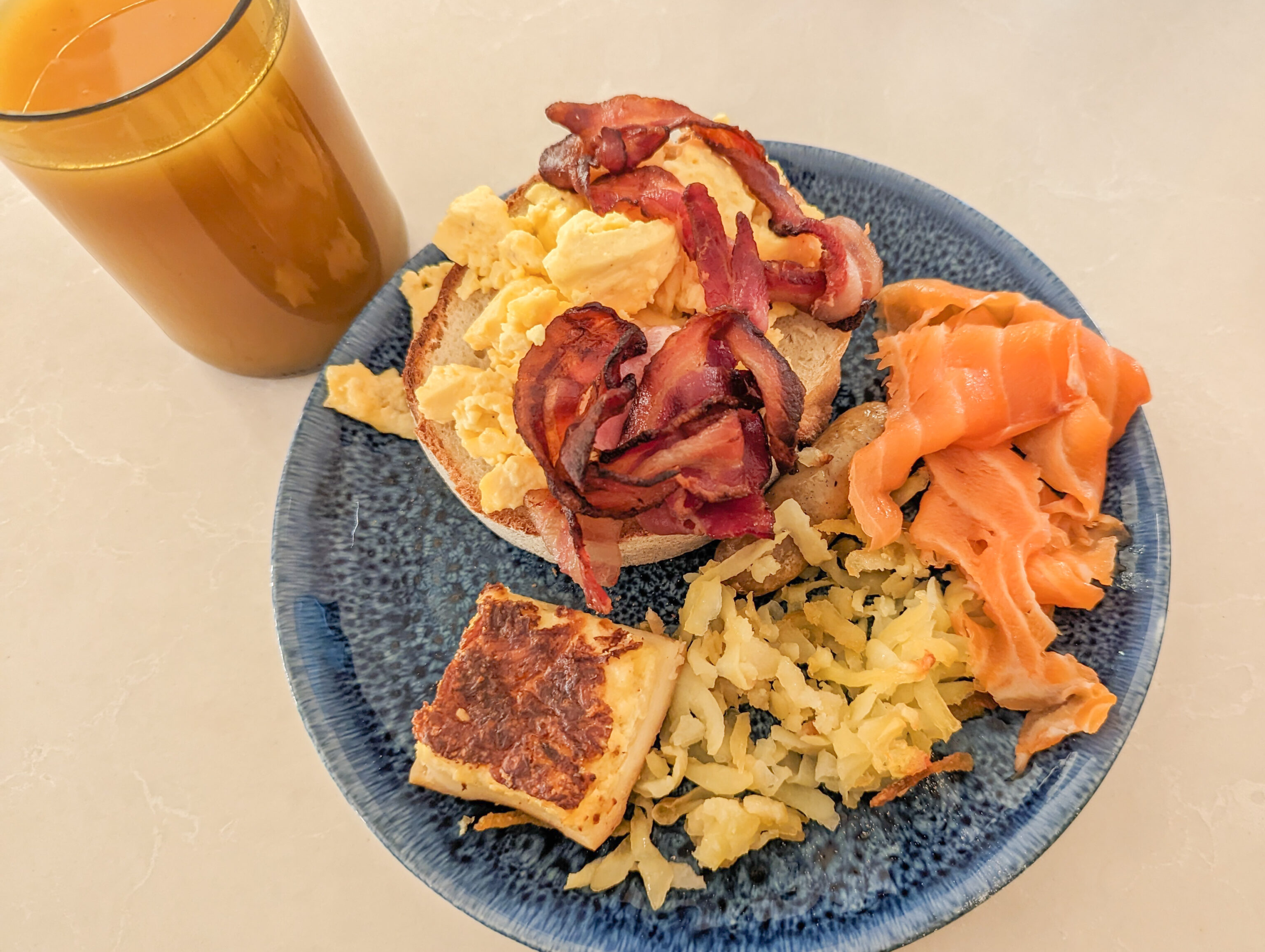
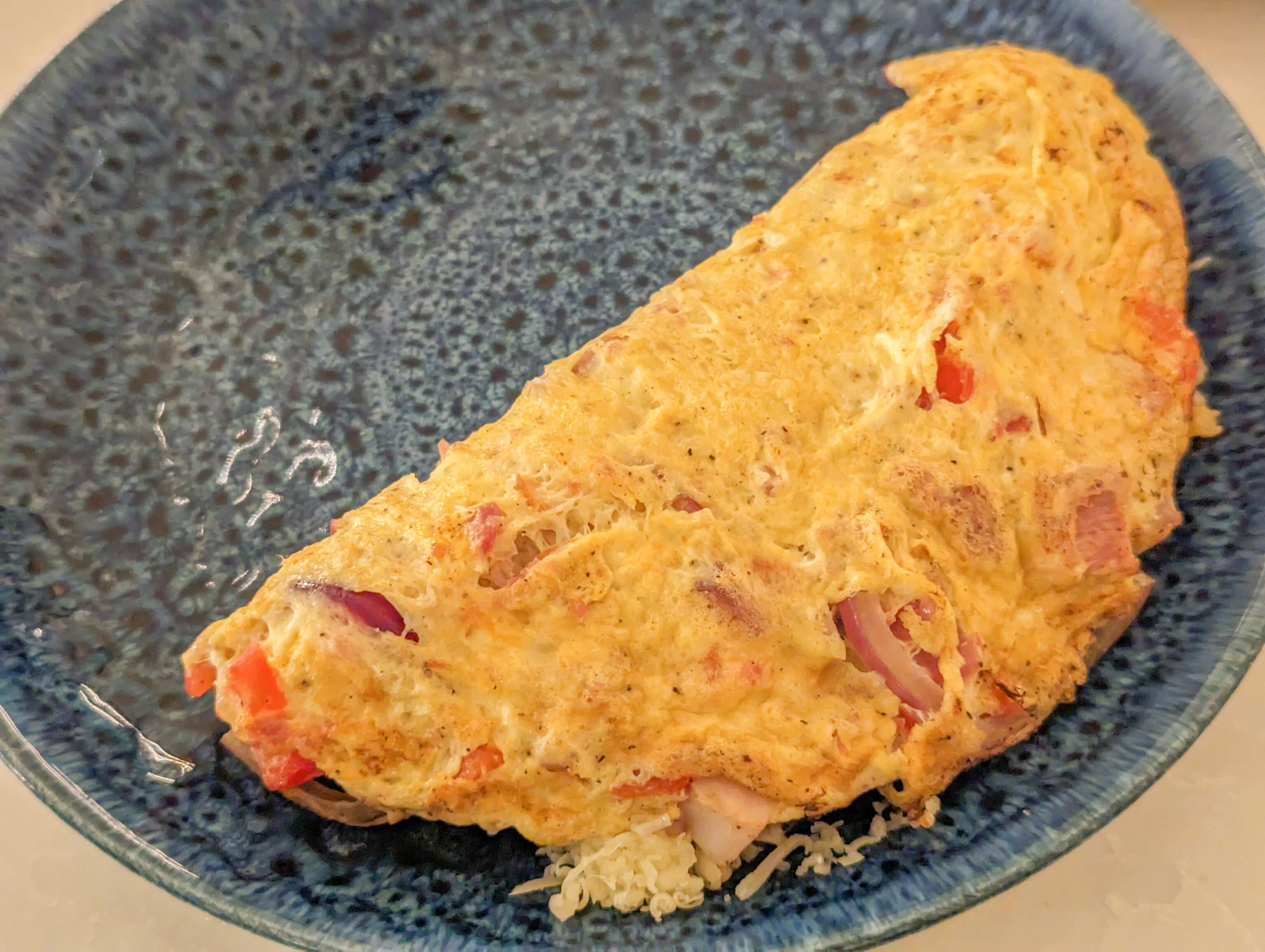
The buffet was excellent with a good variety of items to choose from. It had some interesting local juices. The apricot and pear were both very good. There was also a ridiculously long bread, which is probably best described in American English as French bread. There was actually crispy bacon as well as sausage that wasn’t bird-based. And, there was also an omelette station which made some very good omelettes!
After breakfast, we took the tram to the main Geneva train station where we continued on foot. We walked about four or five blocks to the Rhône. The weather looked excellent, better than we expected based on yesterday’s forecast. Rather than stay in Geneva, we decided to go to Yvoire, France, by boat. We had about an hour before the next boat was scheduled to depart so decided to walk around the area a bit.
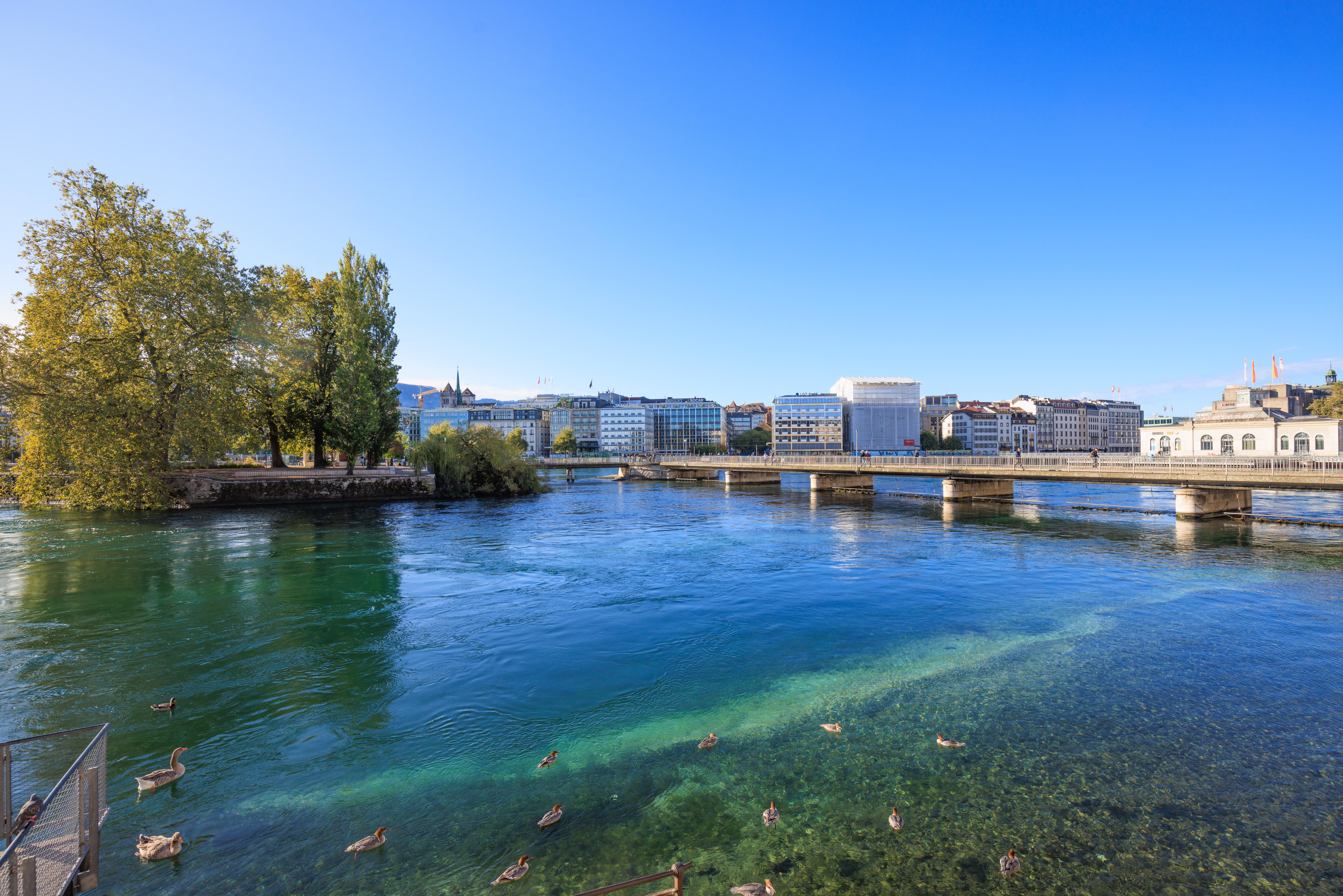
It was an absolutely beautiful morning as we approached where the Lac Léman transitions into the Rhône!
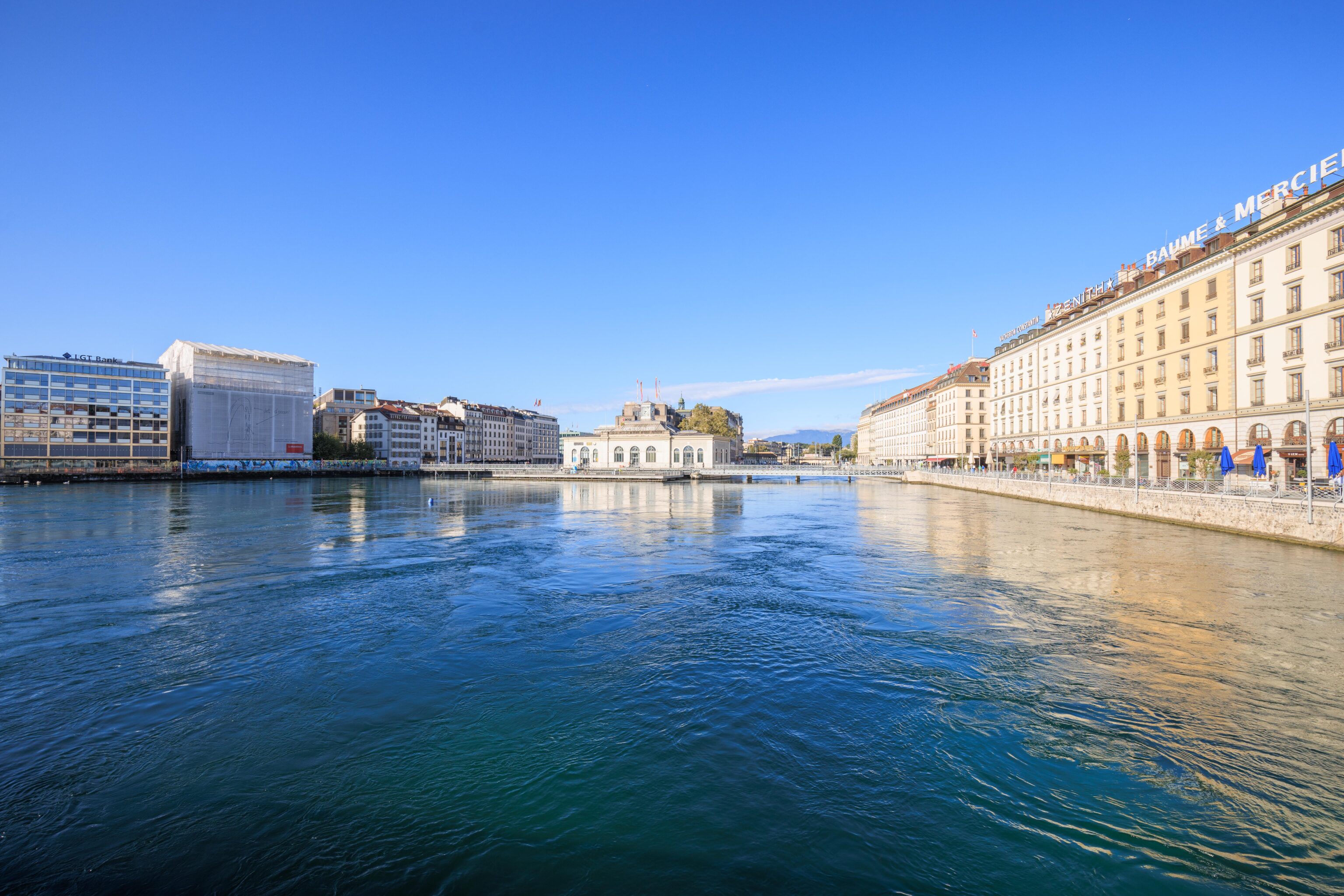
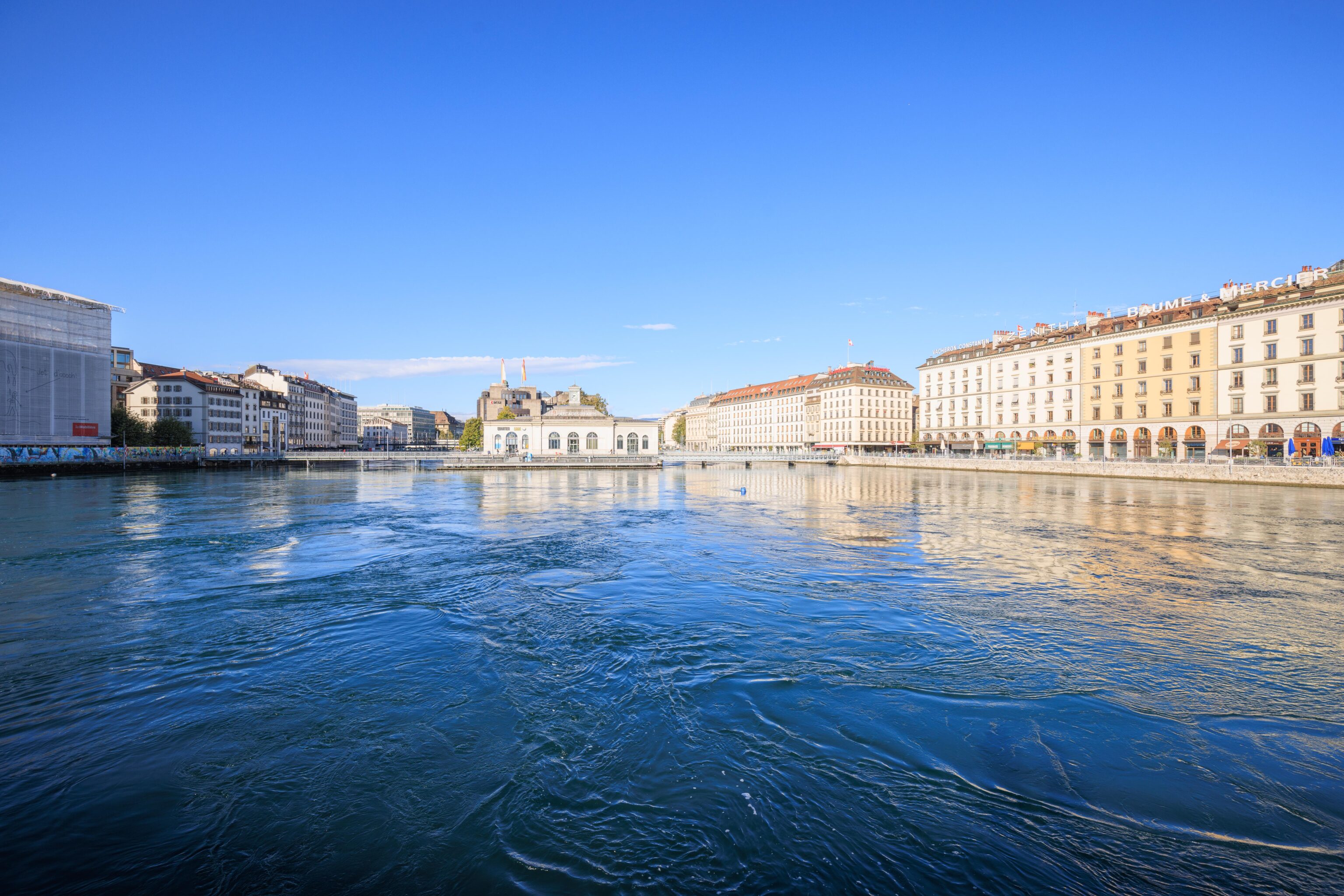
This was the view downstream, to the west, as we crossed via the Pont des Bergues. We walked to the midpoint where there is a small island, the Île Rousseau.
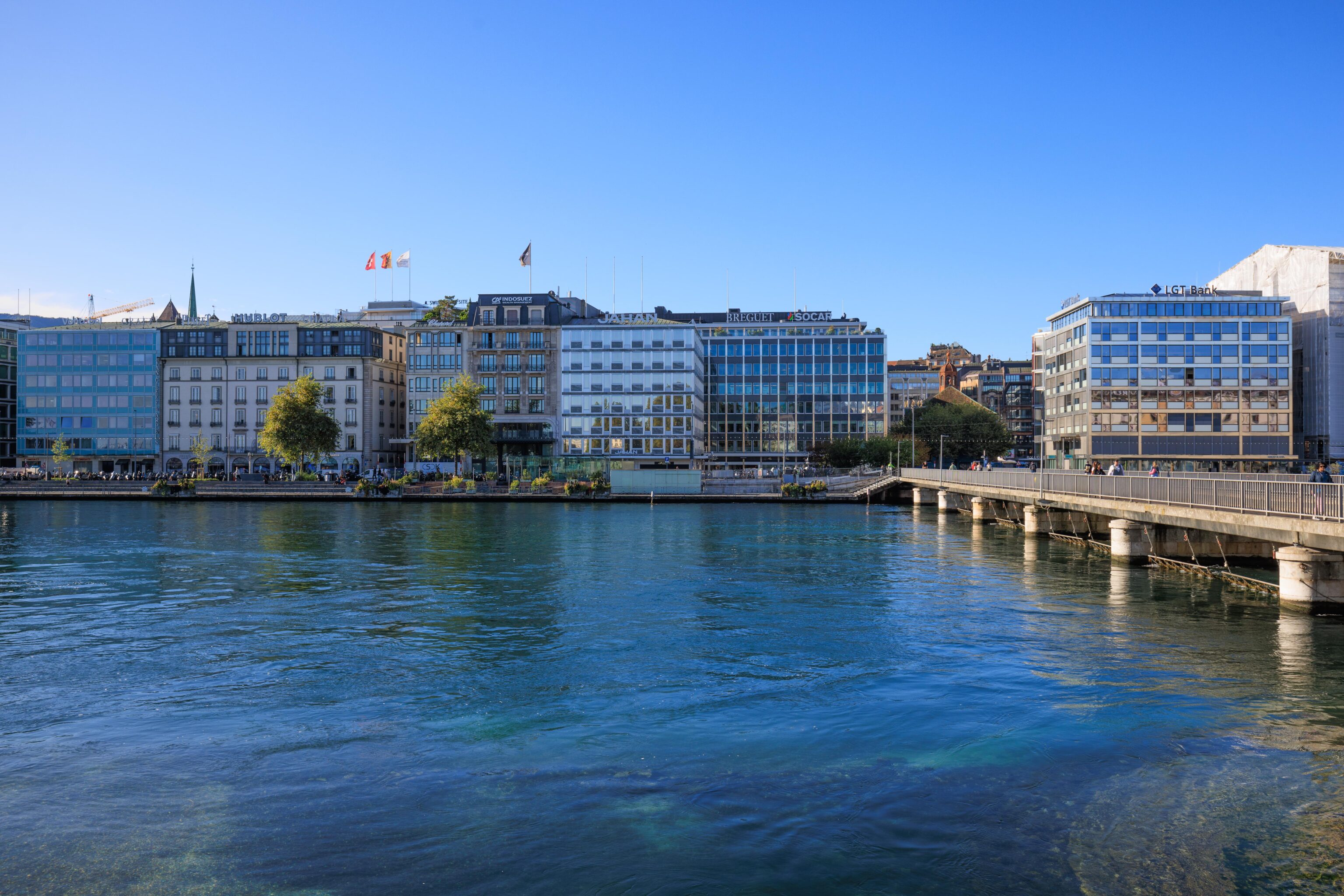
The view to the south, where we would have ended up if we kept walking on the bridge.
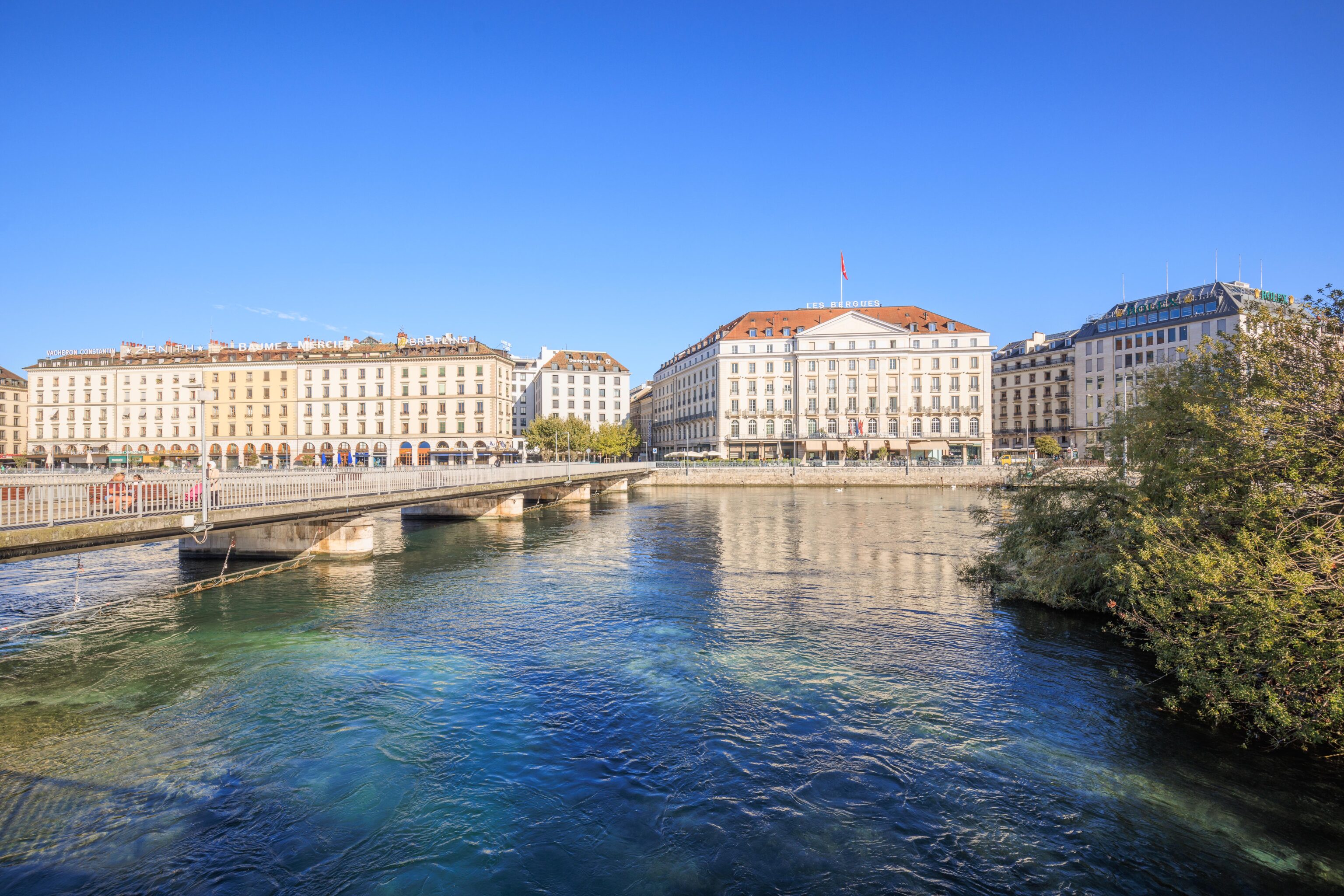
And the view to the north, where we came from.
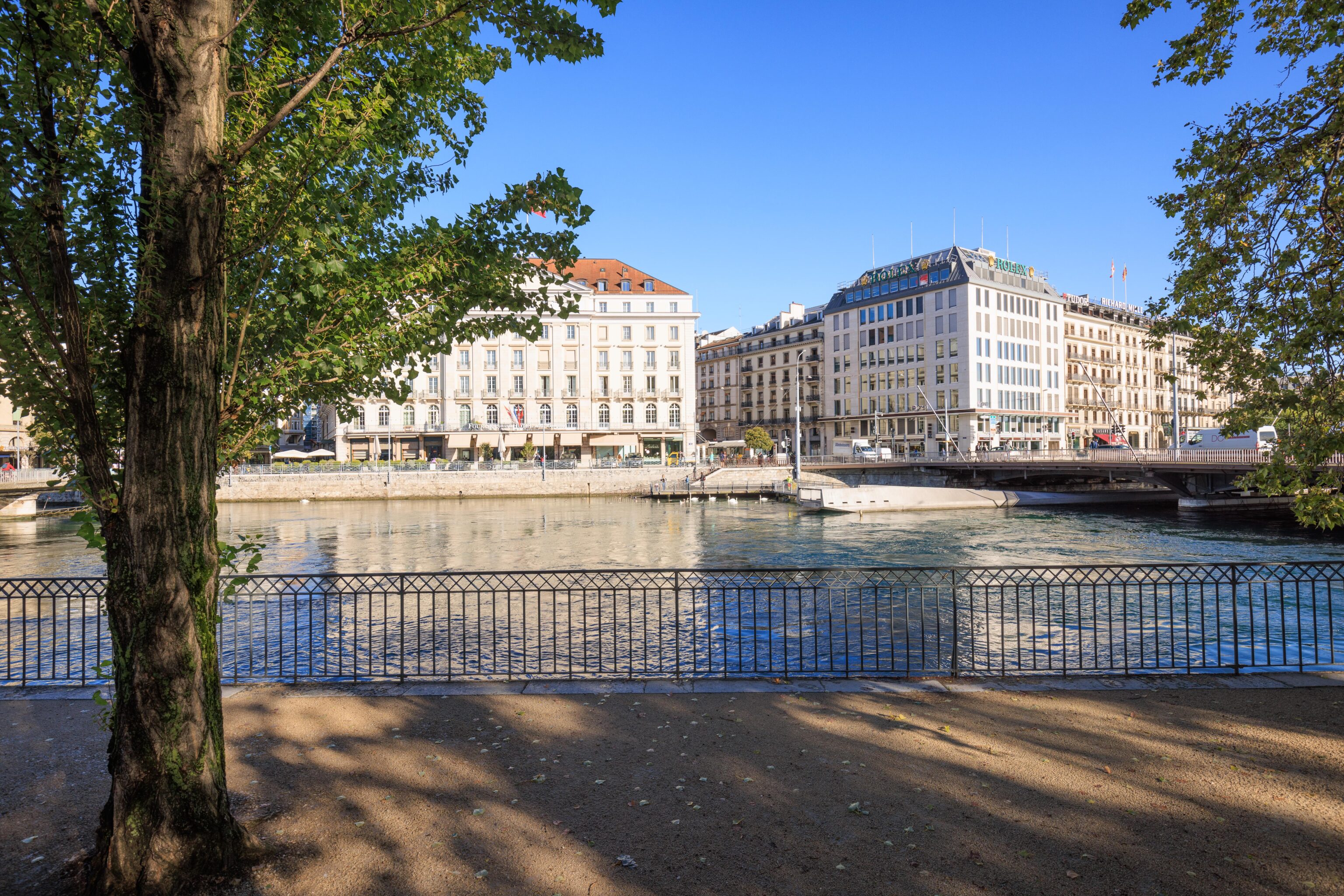
The Île Rousseau is basically a little park but formerly contained a defensive structure as well as a shipyard1.
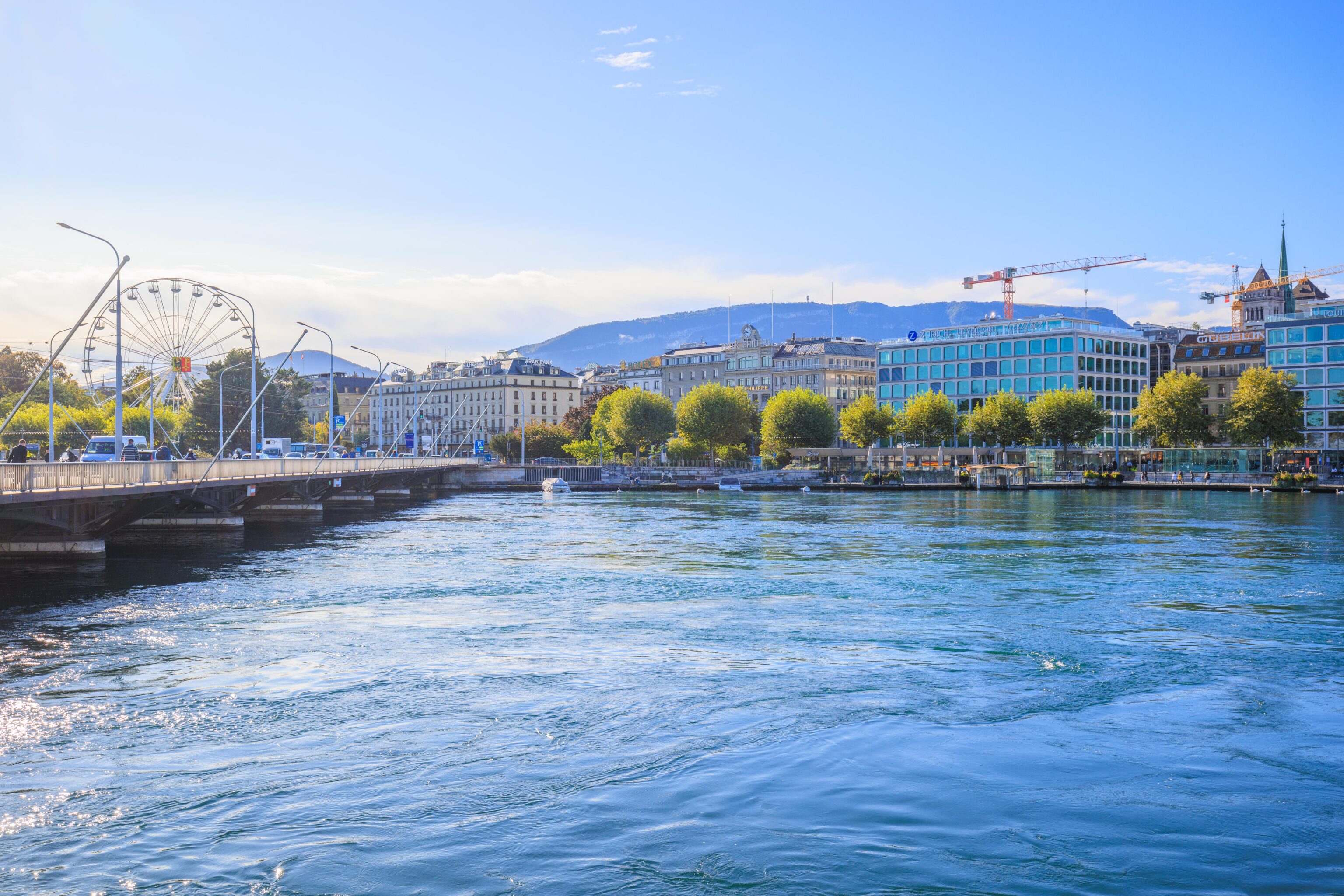
The outermost bridge here in Geneva is the Pont du Mont-Blanc, to the left.
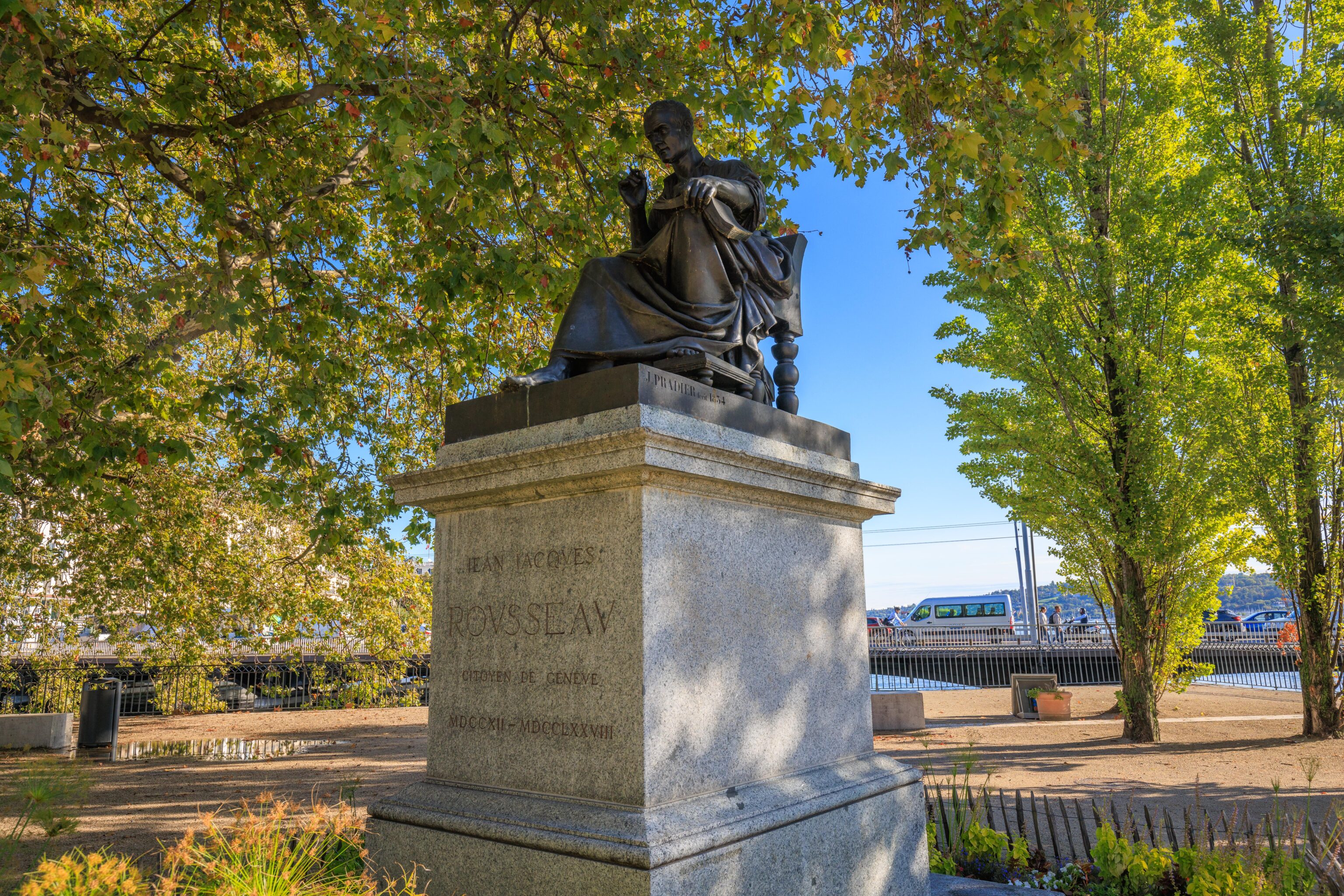
The island has a statue of French philosopher Jean-Jacques Rousseau. We recently saw his tomb in the Pantheon in Paris!
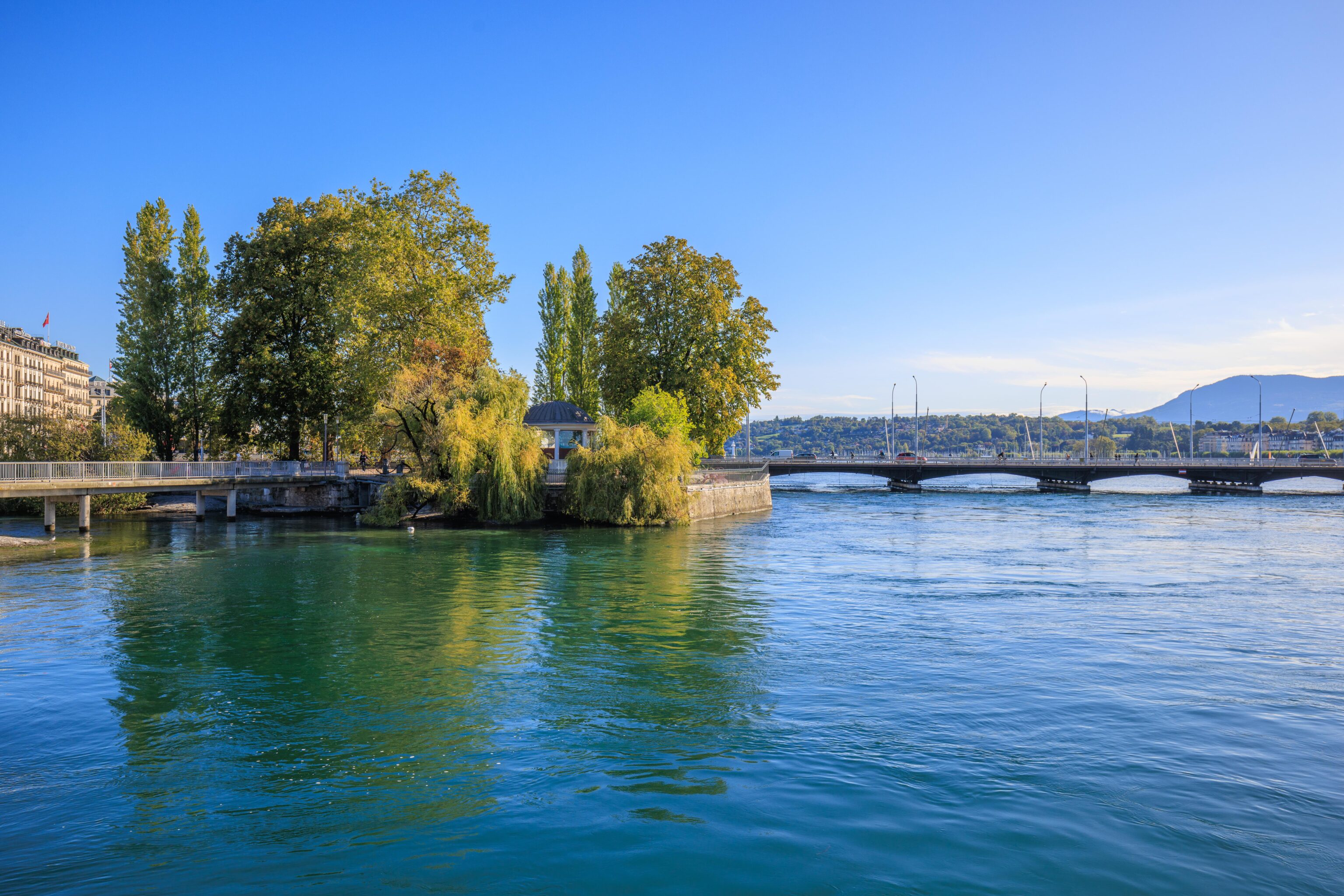
After briefly walking around the little island, we continued walking to the south bank of the Rhône across the Pont des Bergues. This is how the island looked from the south. There is a small section of bridge that connects the island to the Pont des Bergues.
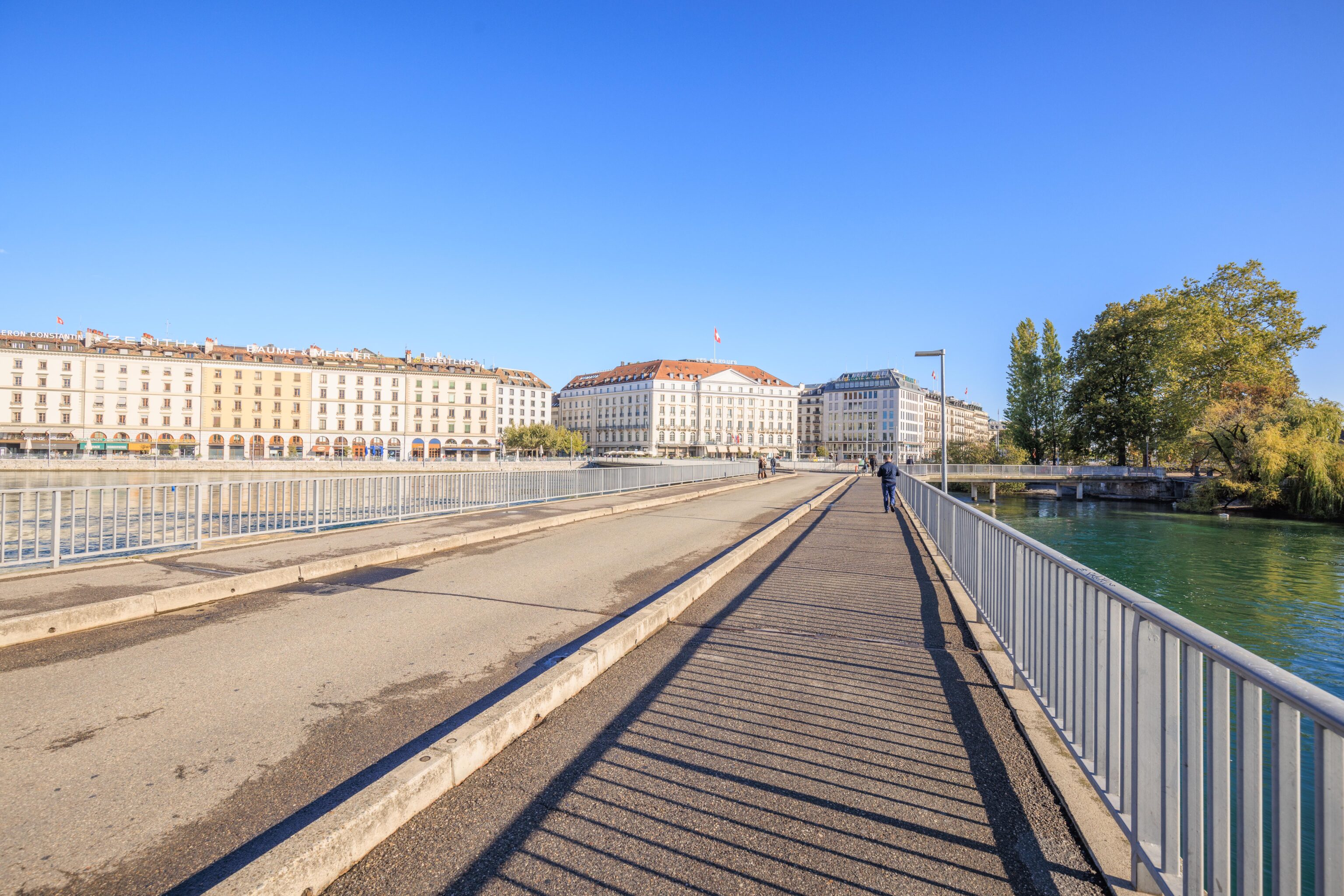
The Pont des Bergues has two dedicated pedestrian sections as well as a middle section that seems to be for bicycles.
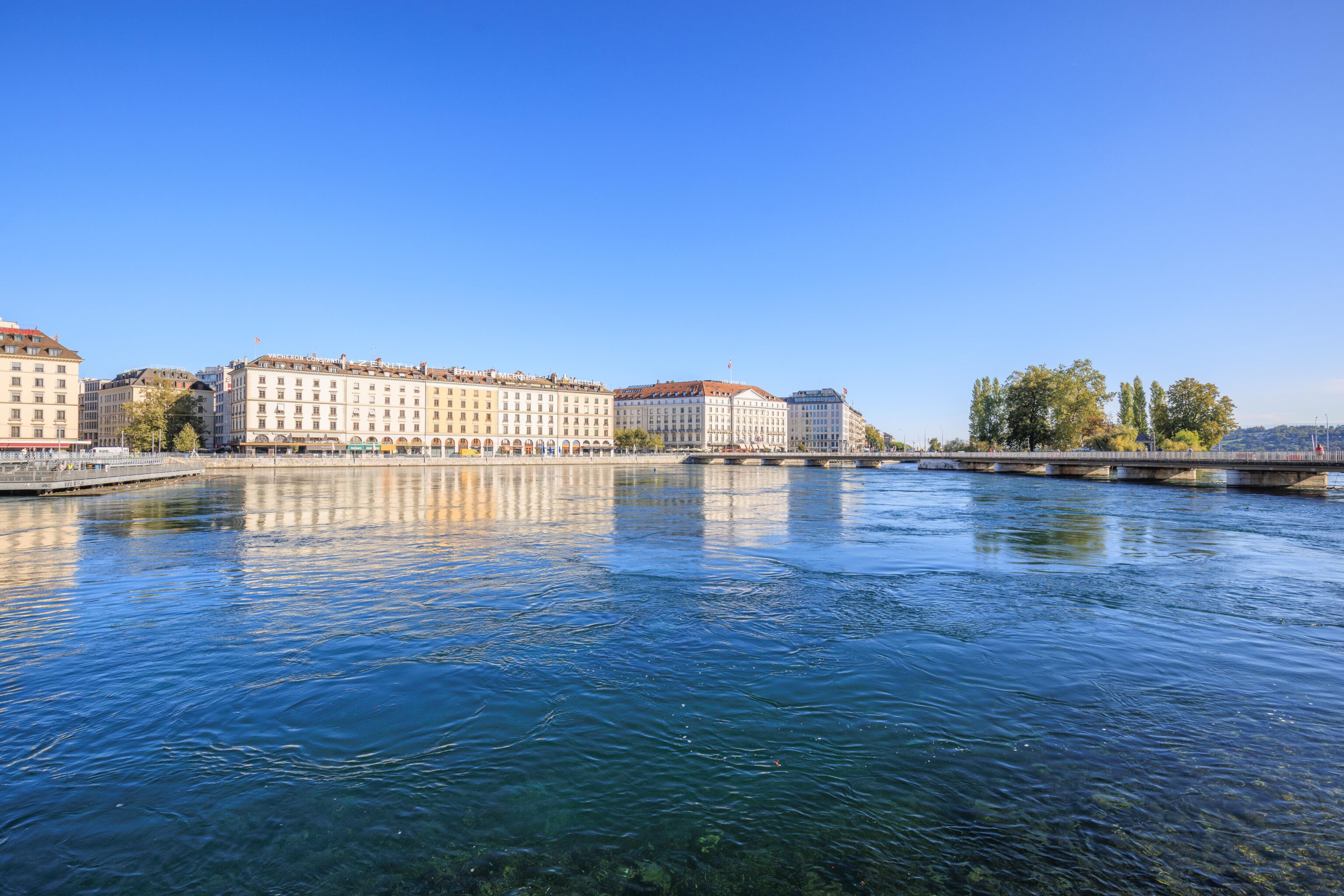
We walked downstream by the riverside.
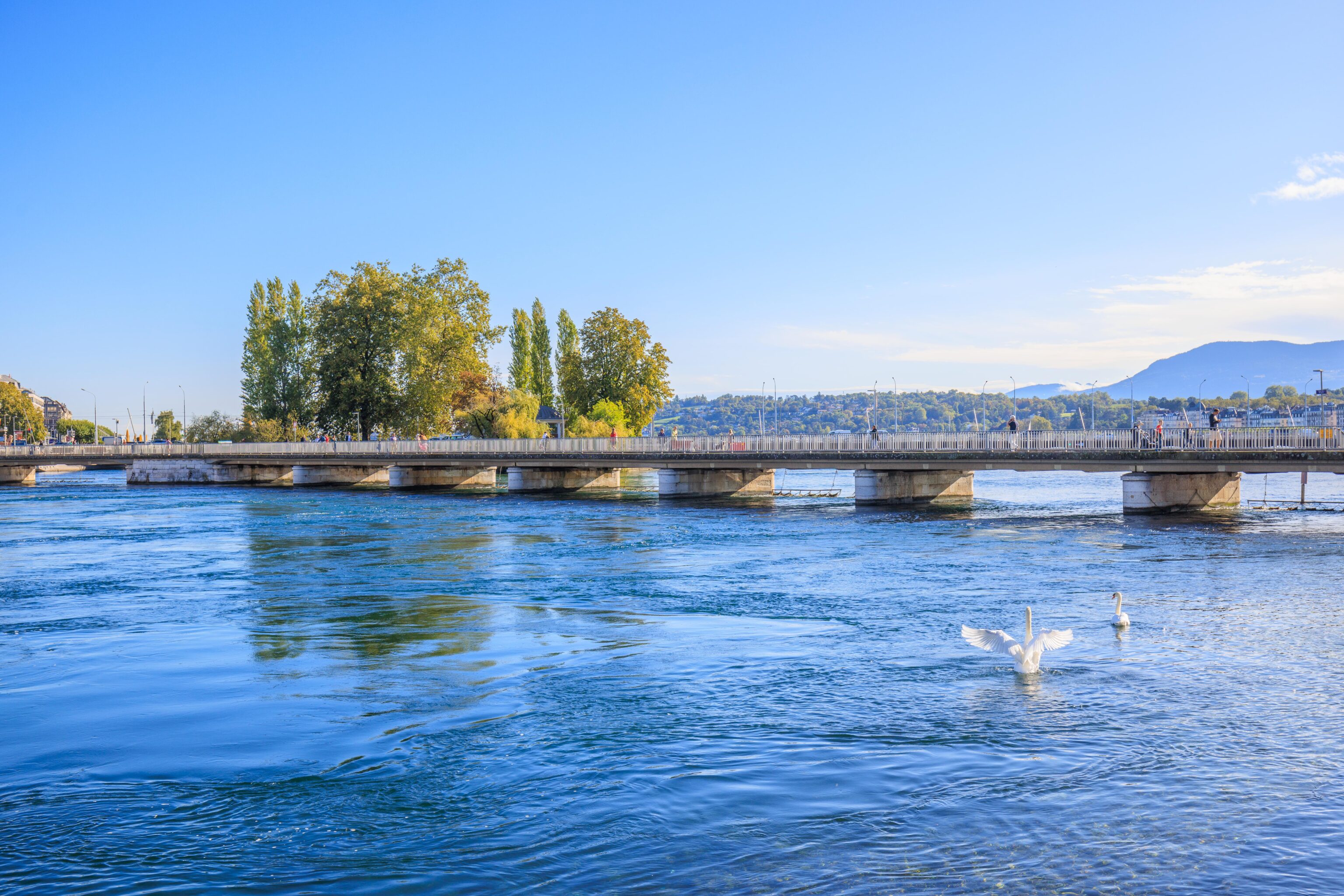
We saw various waterfowl enjoying the river. Some of the swans, like this one, seemed to be cleaning their feathers in the water by splashing around!
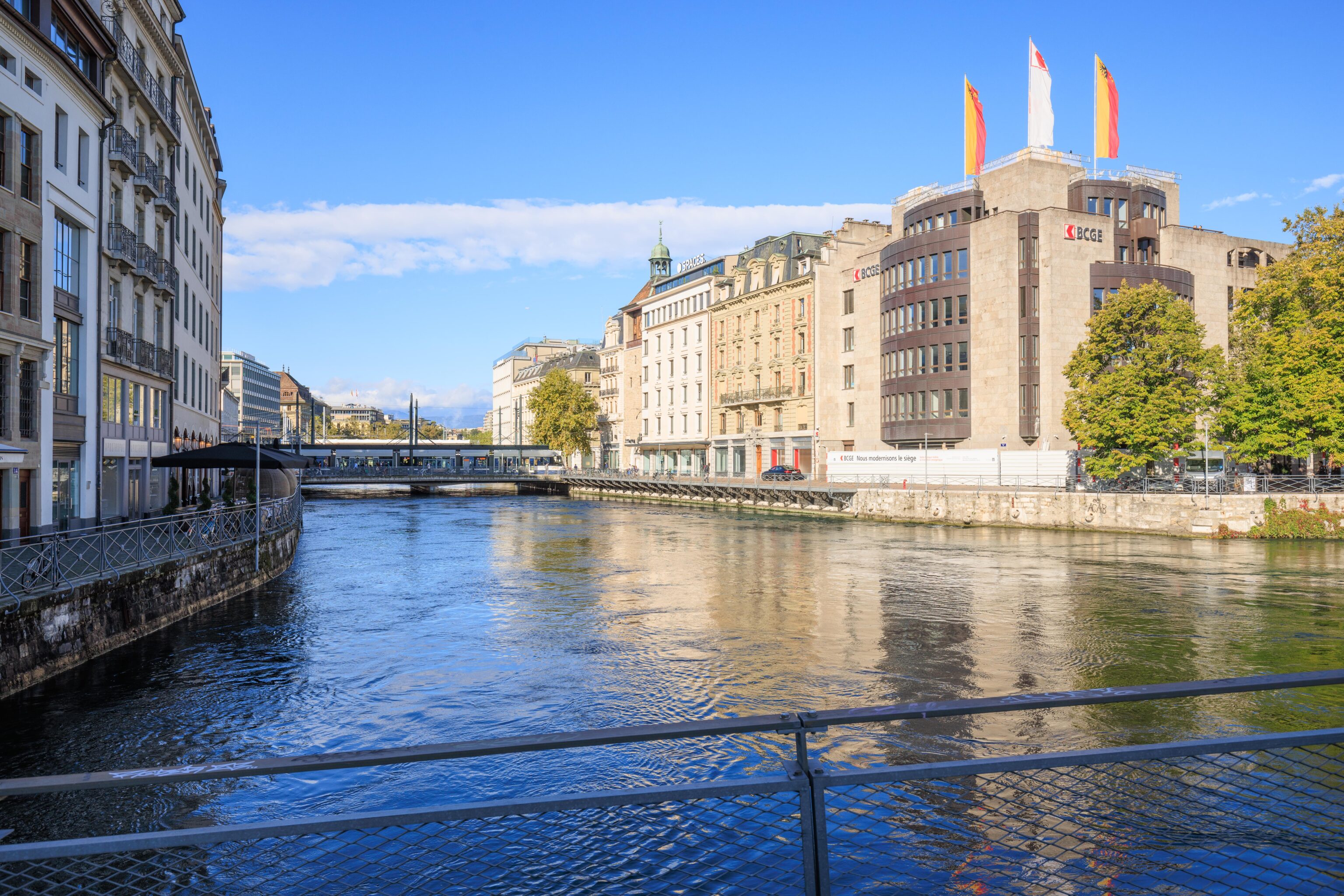
We walked to the next bridge downstream, the Pont de la Machine. The name comes from some sort of hydraulic device that was used to pump water2:
It was in 1709 that the first hydraulic machine, which would give its name to the future bridge, was built at the entrance to the left arm of the Rhône by Joseph Abeille to pump water from the river for the city's fountains.
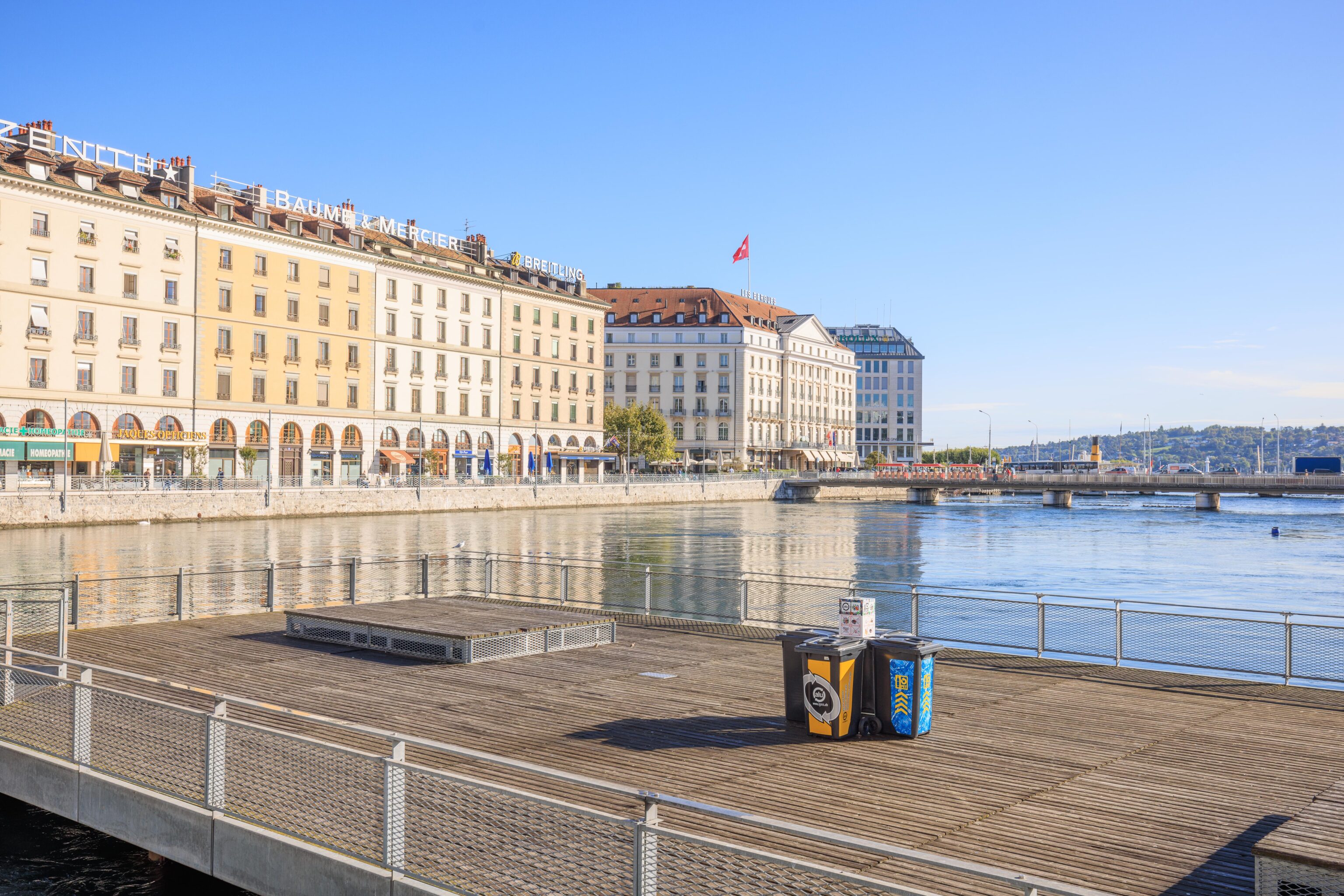
There is a plaza made out of wooden decking in front of the Fondation de la Haute Horlogerie, which seems to be some sort of watchmaker’s organization.
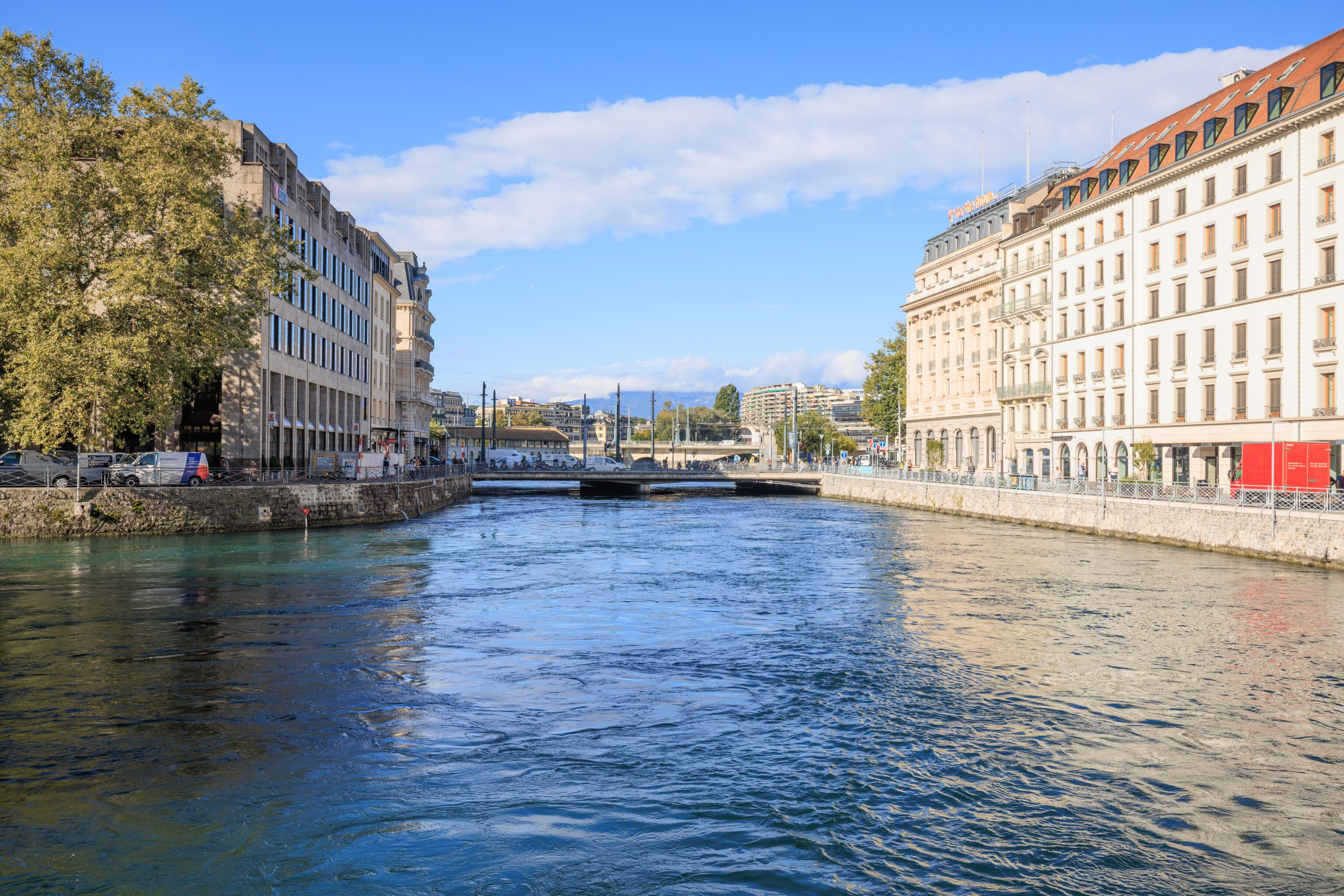
The downstream view from the north end of the Pont de la Machine.
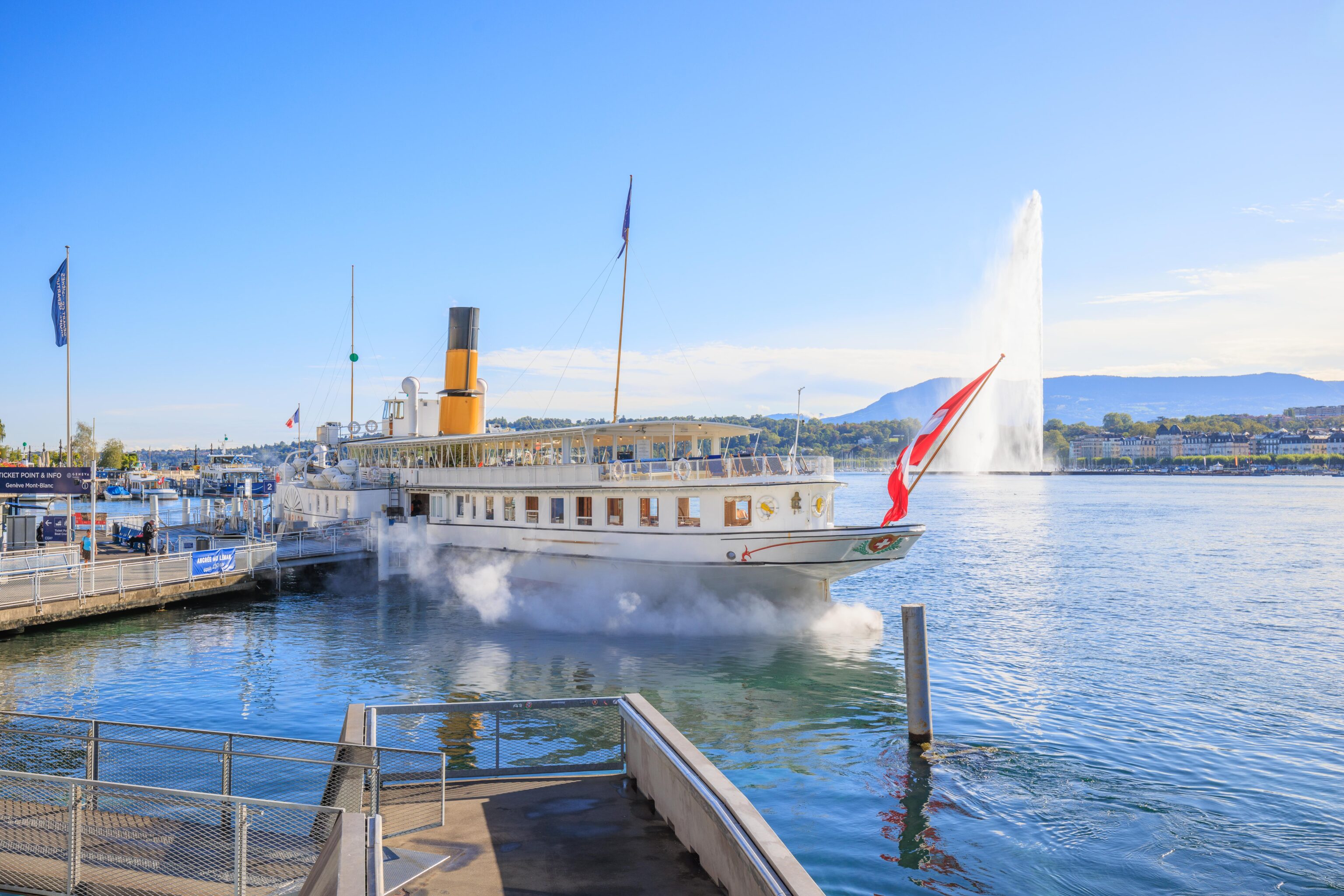
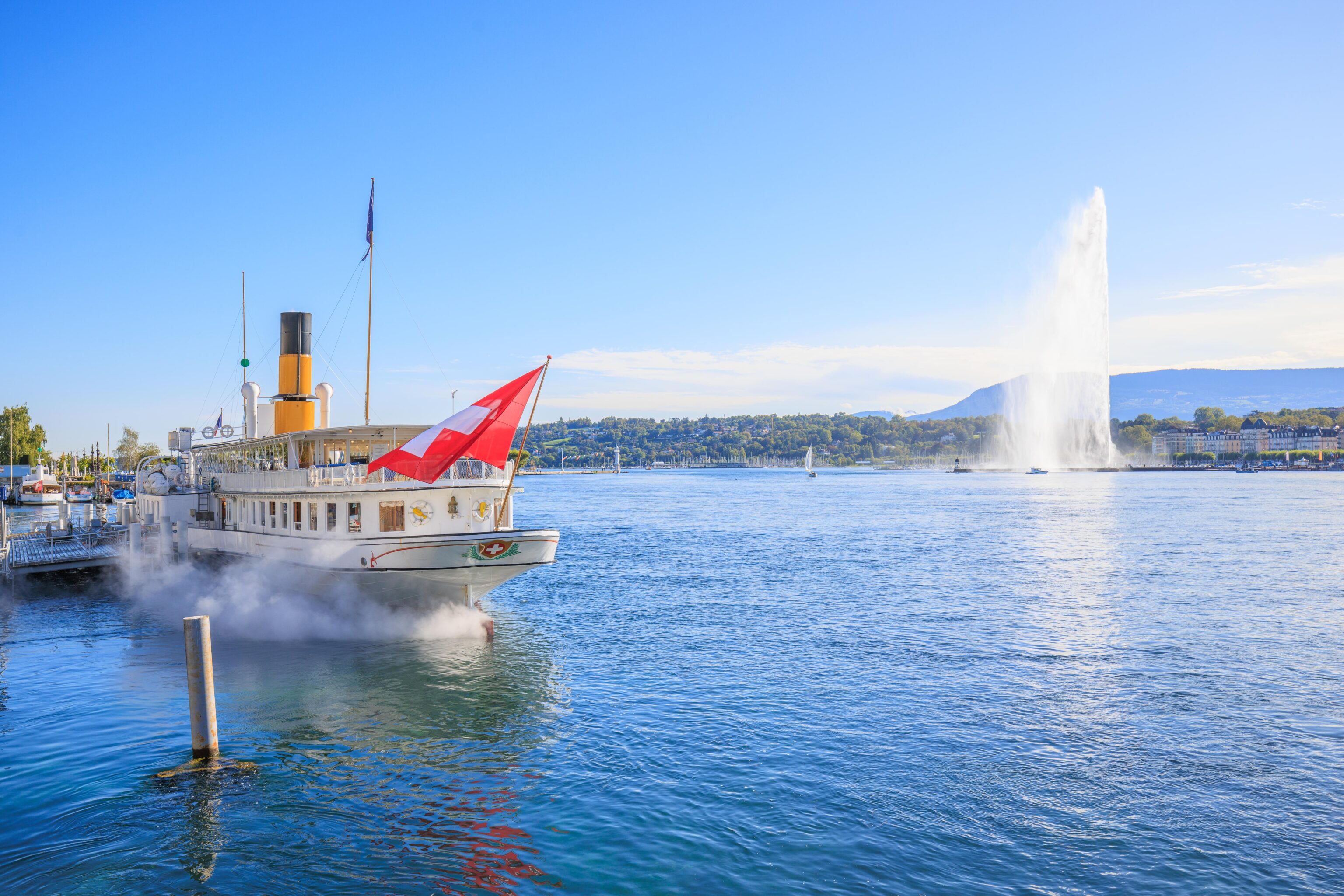
From here, we walked to the east to reach the Mont-Blanc boat terminal on the lake. We noticed the CGN paddle steamer, the Simplon, getting ready. It seemed likely that this would be the vessel that would take us to Yvoire. We also noticed a big water fountain on the opposite shore of the lake. This huge fountain is the Jet d’Eau (Water Jet). It wasn’t on when we arrived. This fountain is a symbol of Geneva and shoots water 140 meters up into the air! There is some interesting history to this fountain as it was originally a functional piece of equipment related to the hydraulic pumps previously mentioned3:
In 1886 the hydraulic factory that distributed the Rhone’s energy to Geneva’s craftspeople and watchmakers was forced to create an open-air outlet for the over-pressurised water when the workshops closed in the evening. The place generated so much enthusiasm and excitement that it became a real attraction for locals and tourists. In 1891 a new Jet d’eau was created at its current location in the harbour.
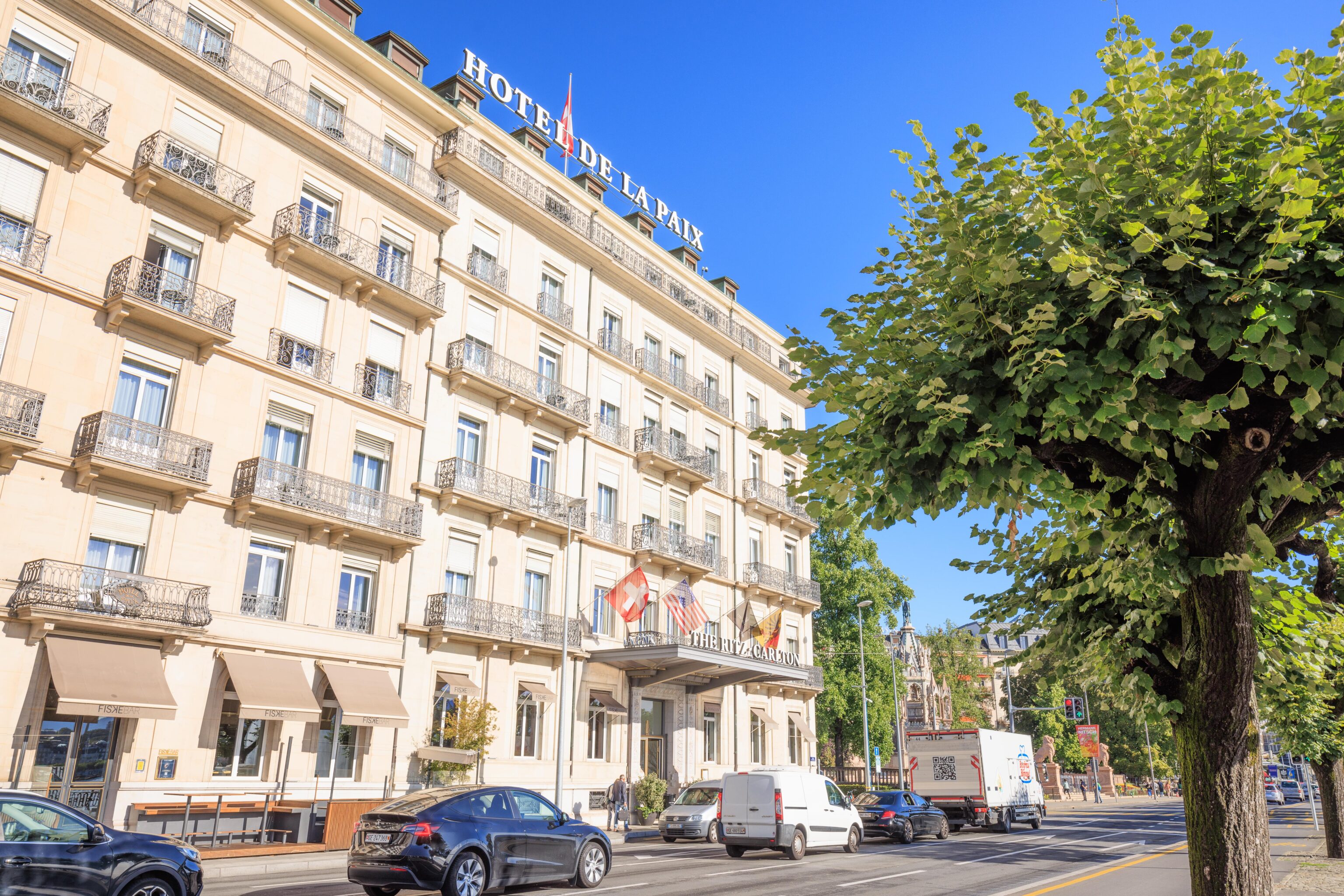
We still had some time before departure so we continued walking to the east on the northern shore of the lake. There are many hotels lining the lakeshore. This one, the Ritz-Carlton Hotel de la Paix, was going for Є1000+ for the cheapest available room. This is why we are staying by the airport! Everything in the downtown area was very expensive. At this pricing, we’re more than happy to take a 10 minute tram ride to save hundreds of Euros a night!
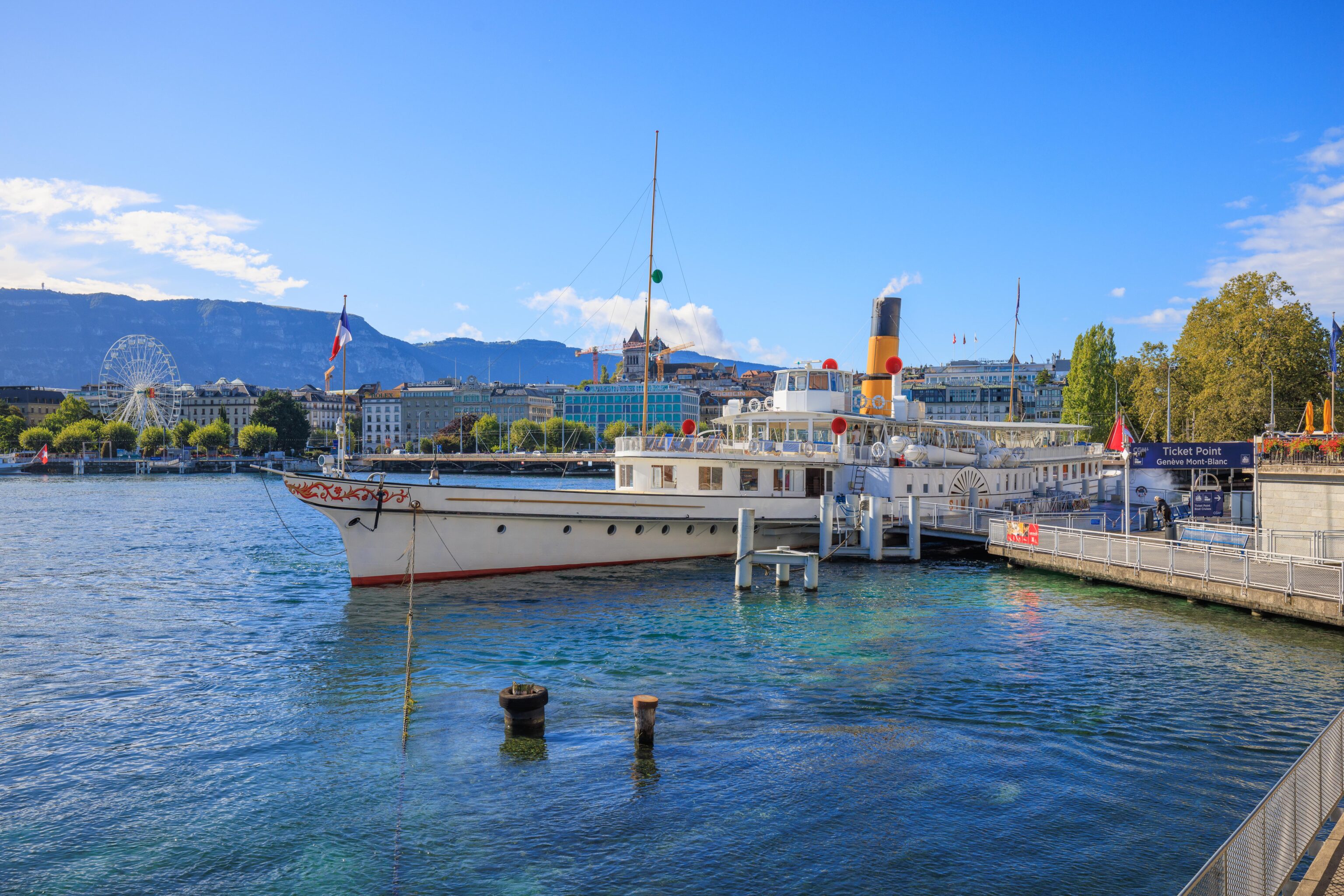
The Simplon from the front. We’ve taken similar looking boats with CGN before during our last trip where we stayed at Montreux. One difference is that those paddle steamers had been converted to diesel electric power. This one still runs on steam, though fired by oil rather than coal as it was originally when constructed in 19204.
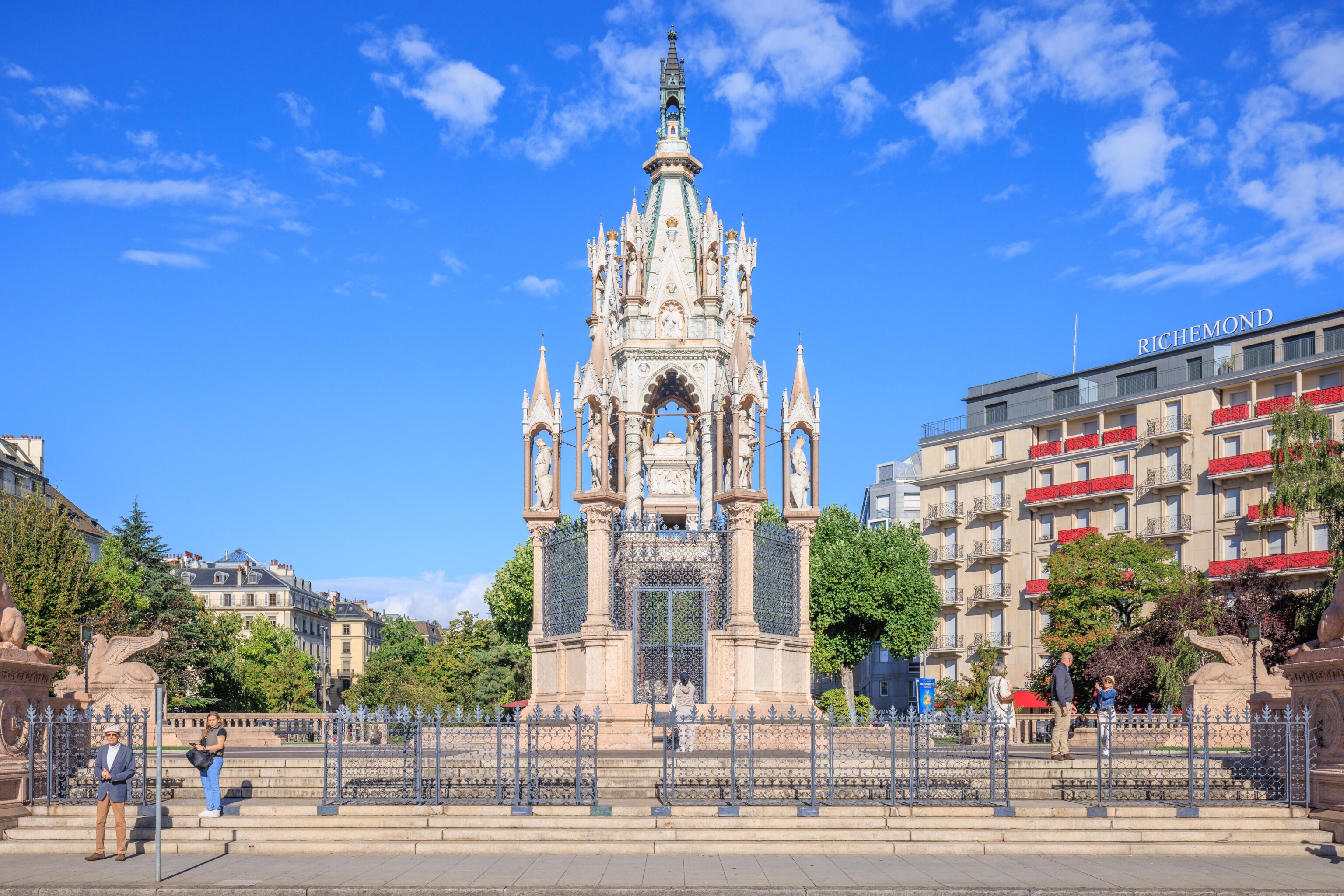
We passed by the Brunswick Monument as we continued to the east. It was created to honor a former German duke who ultimately ended up here in Geneva. He donated money upon his death to ensure the construction of this monument.
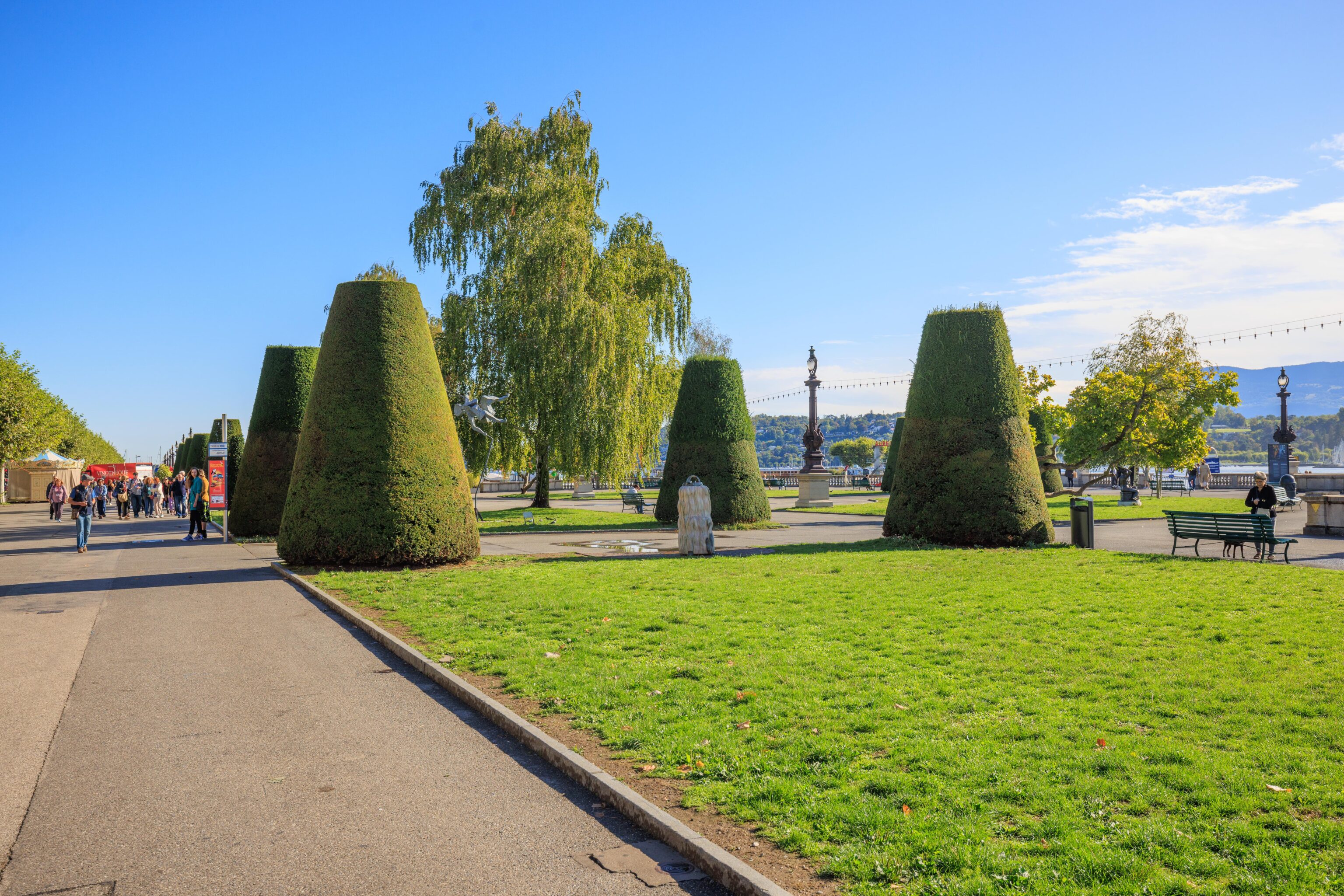
We walked as far as this small park, just to the east of the monument.
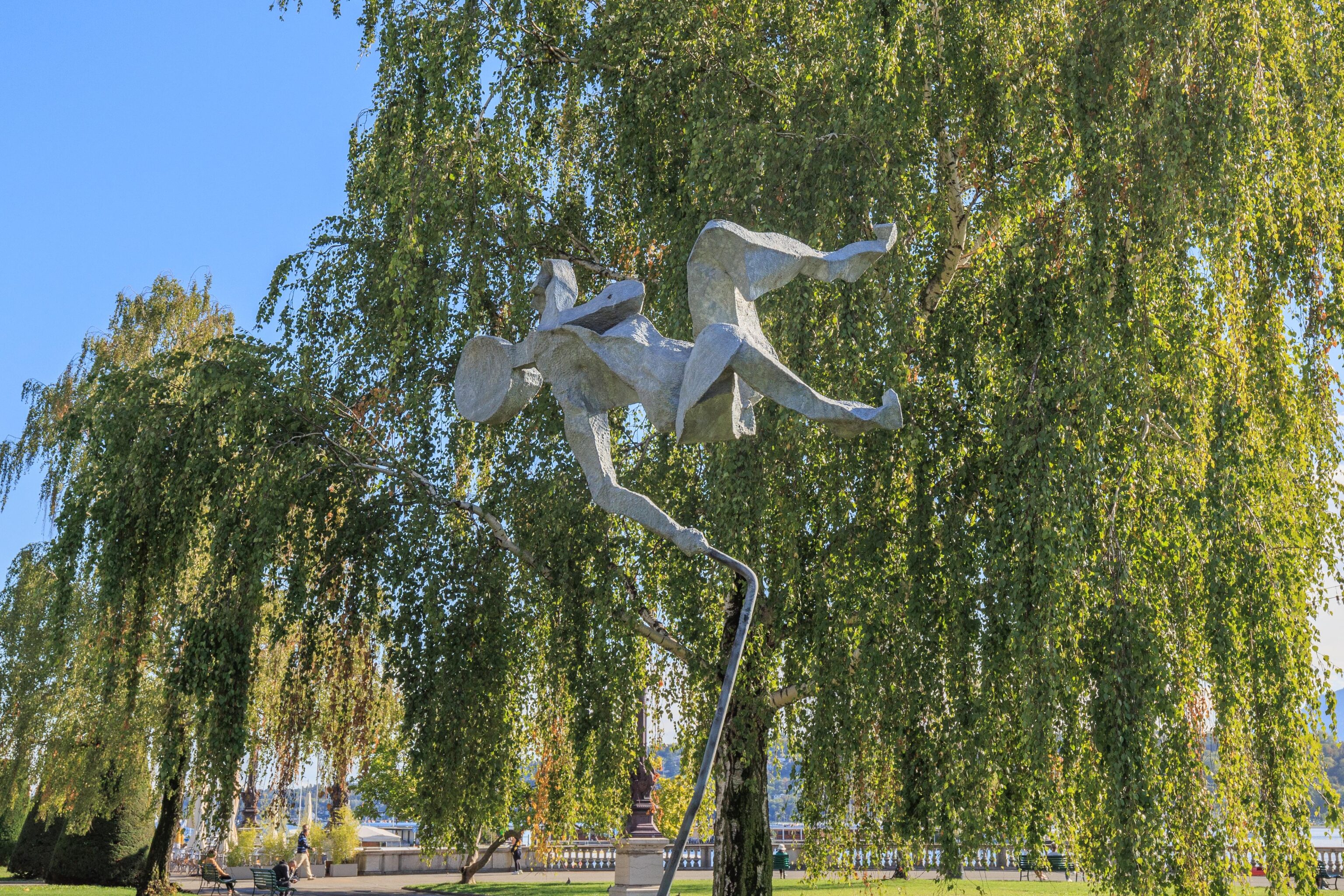
An interesting sculpture. It seems like it would fit in quite well in nearby Lausanne, home of the International Olympic Committee.
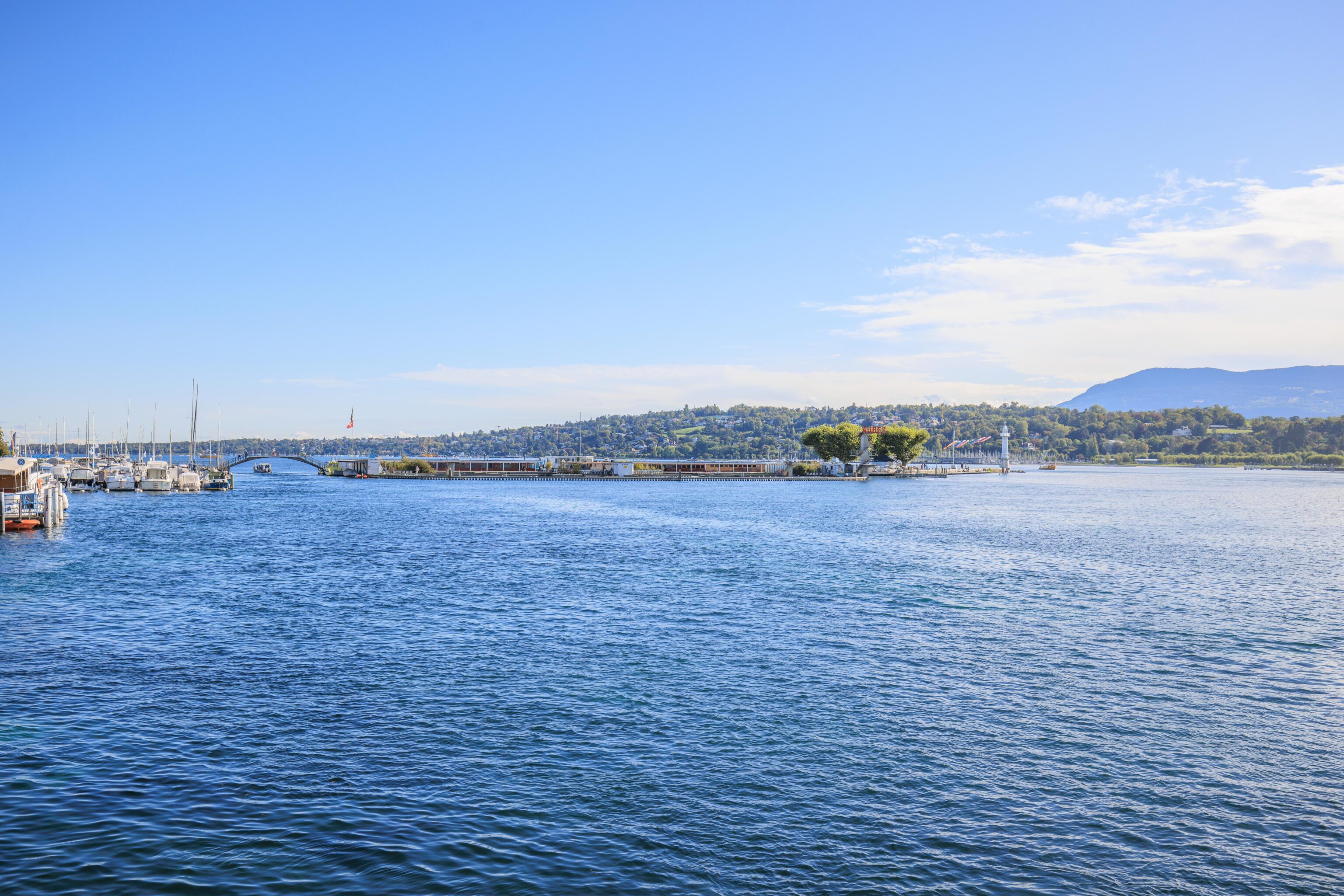
From here, we looked to the east. The Phare des Pâquis, a lighthouse, sits near the middle of the lake and is partially connected to the northern shore. This leaves a wider channel to the south, which larger vessels must pass through, as well as a small channel that can be crossed by a small bridge to the north.
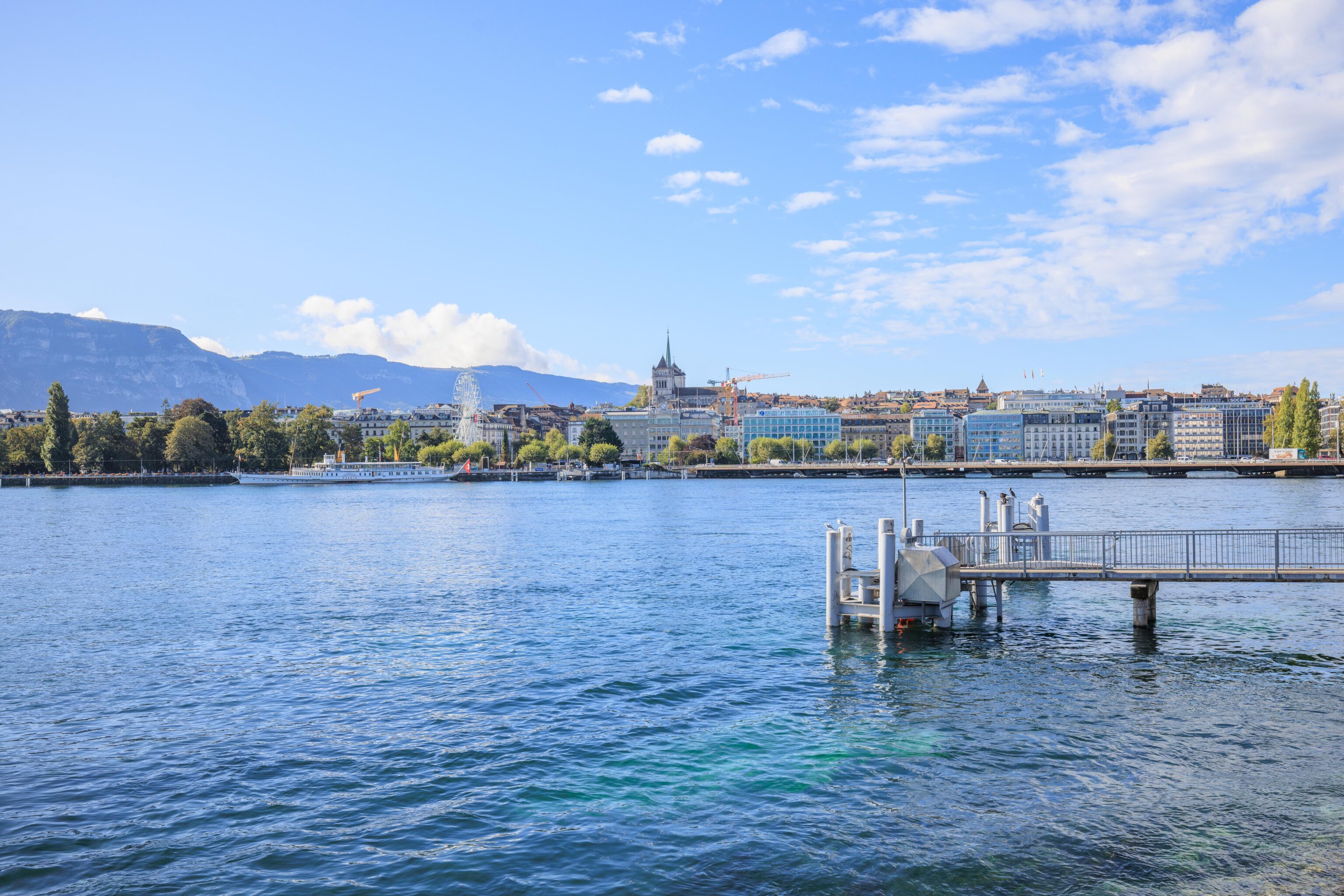
Looking to the south, we could see the Pont du Mont-Blanc as well as another CGN vessel, the Savoie, docked on the opposite shore.
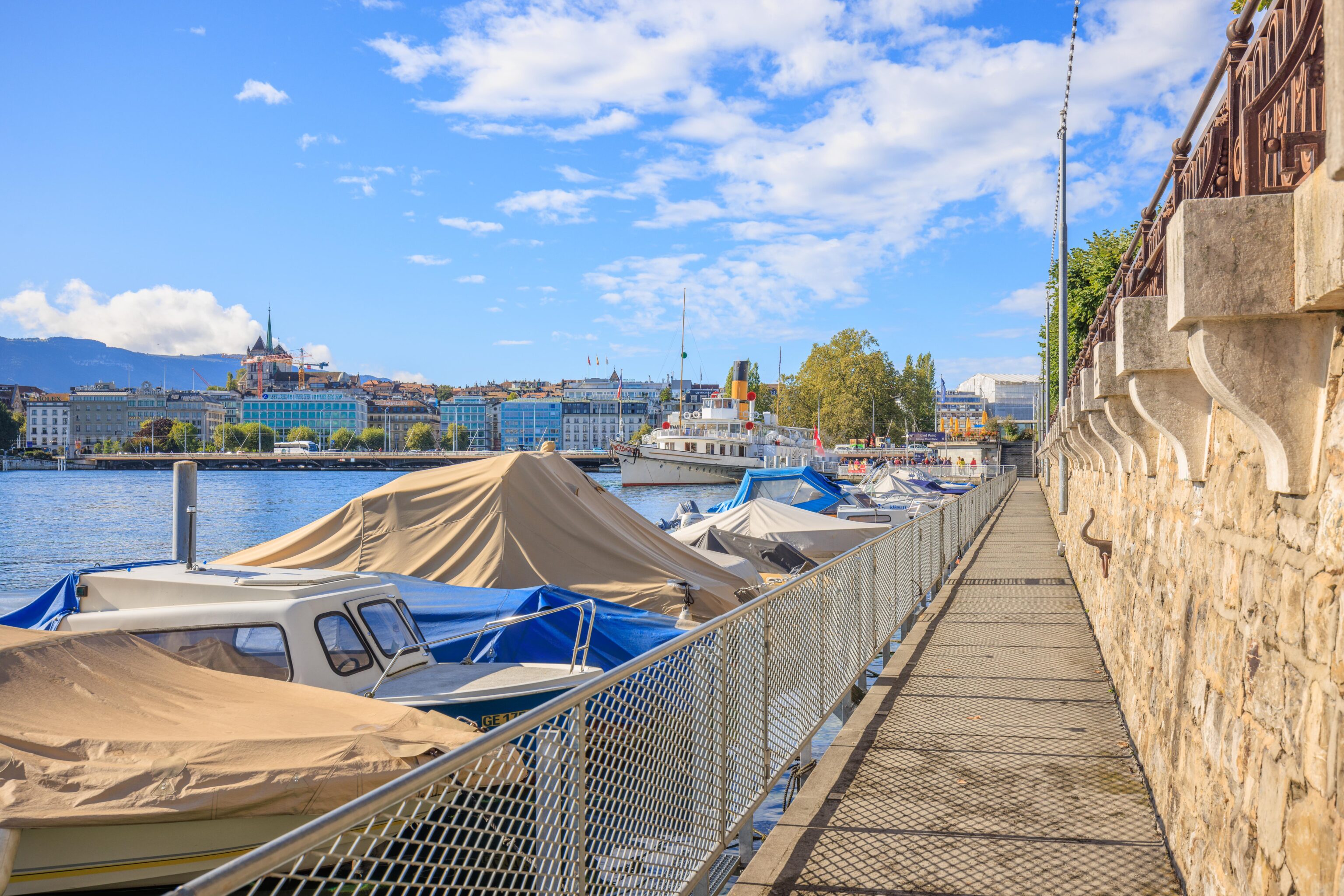
We headed back to the west, this time on a lower pedestrian walkway which also provides access to the moored boats.
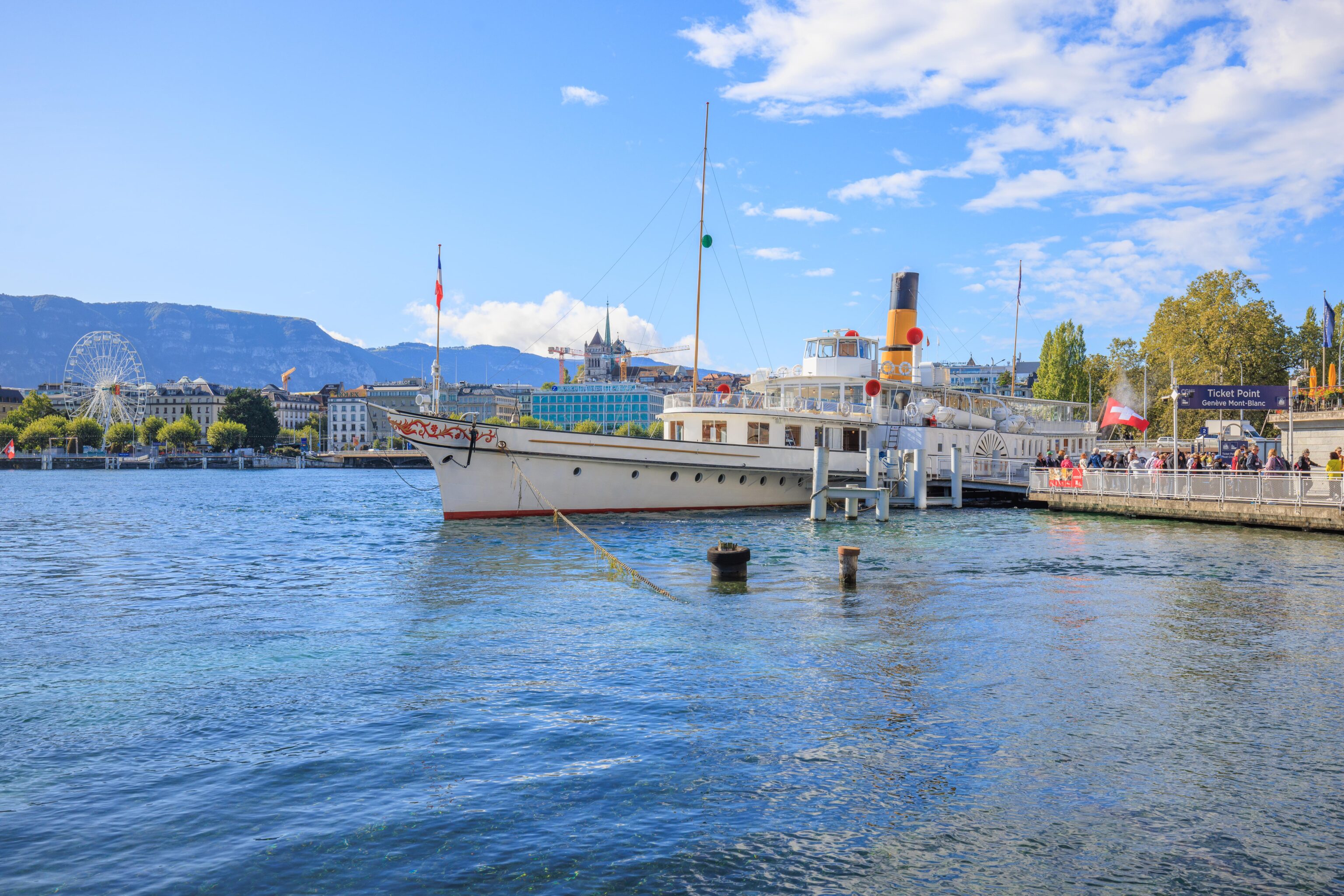
There were only a few people by the Simplon earlier. Now, there were many who were waiting for boarding to commence. It did seem that much of the crowd was a large tour group.
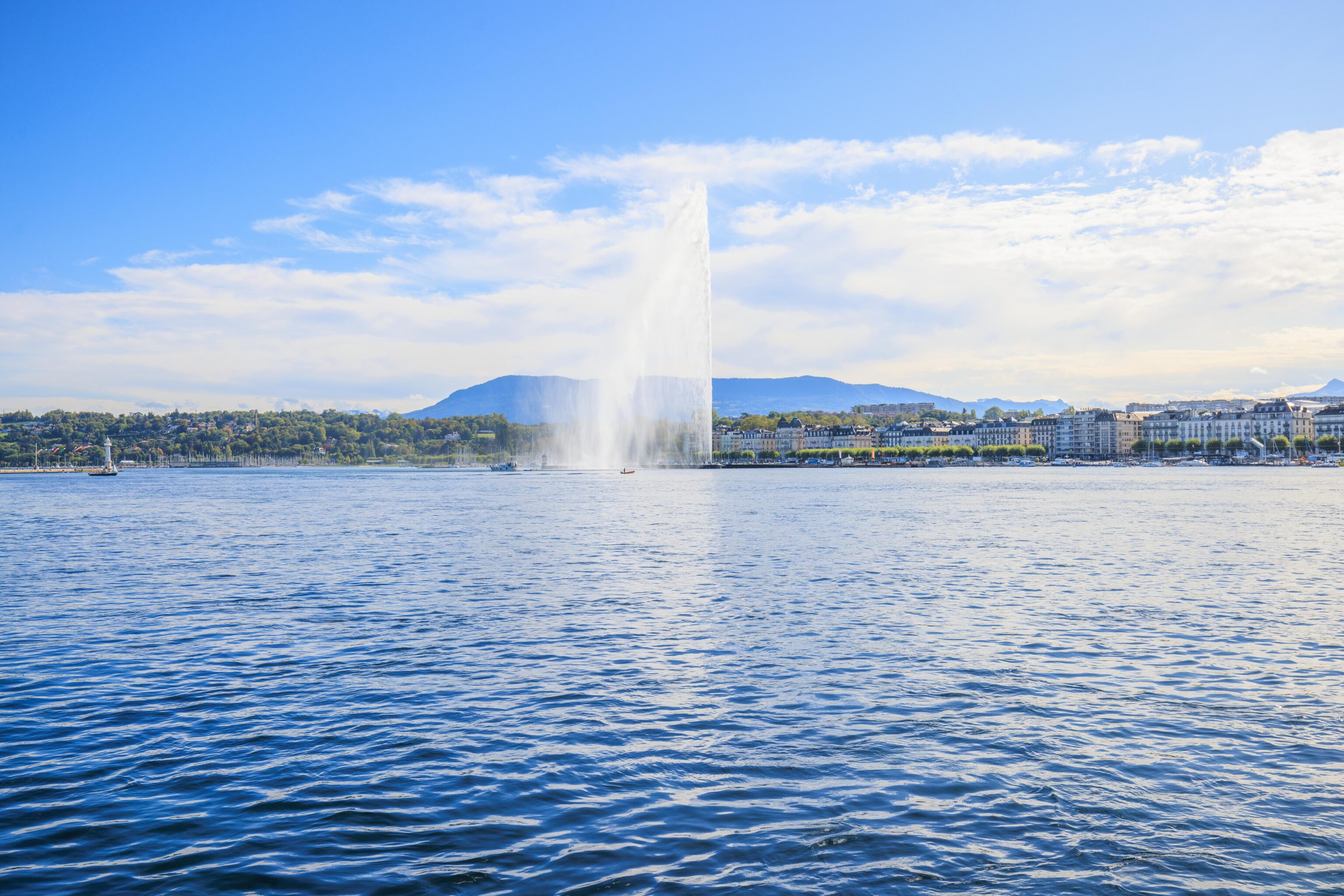
The layout of the vessel was similar to the CGN Italie, which we were on last year at Montreux. We sat on the right side near the bow. There were plenty of places to sit when we boarded but it soon filled up outside due to the fantastic weather. We had a clear view of the Jet d’Eau, to our east, as we waited for the boat to depart.
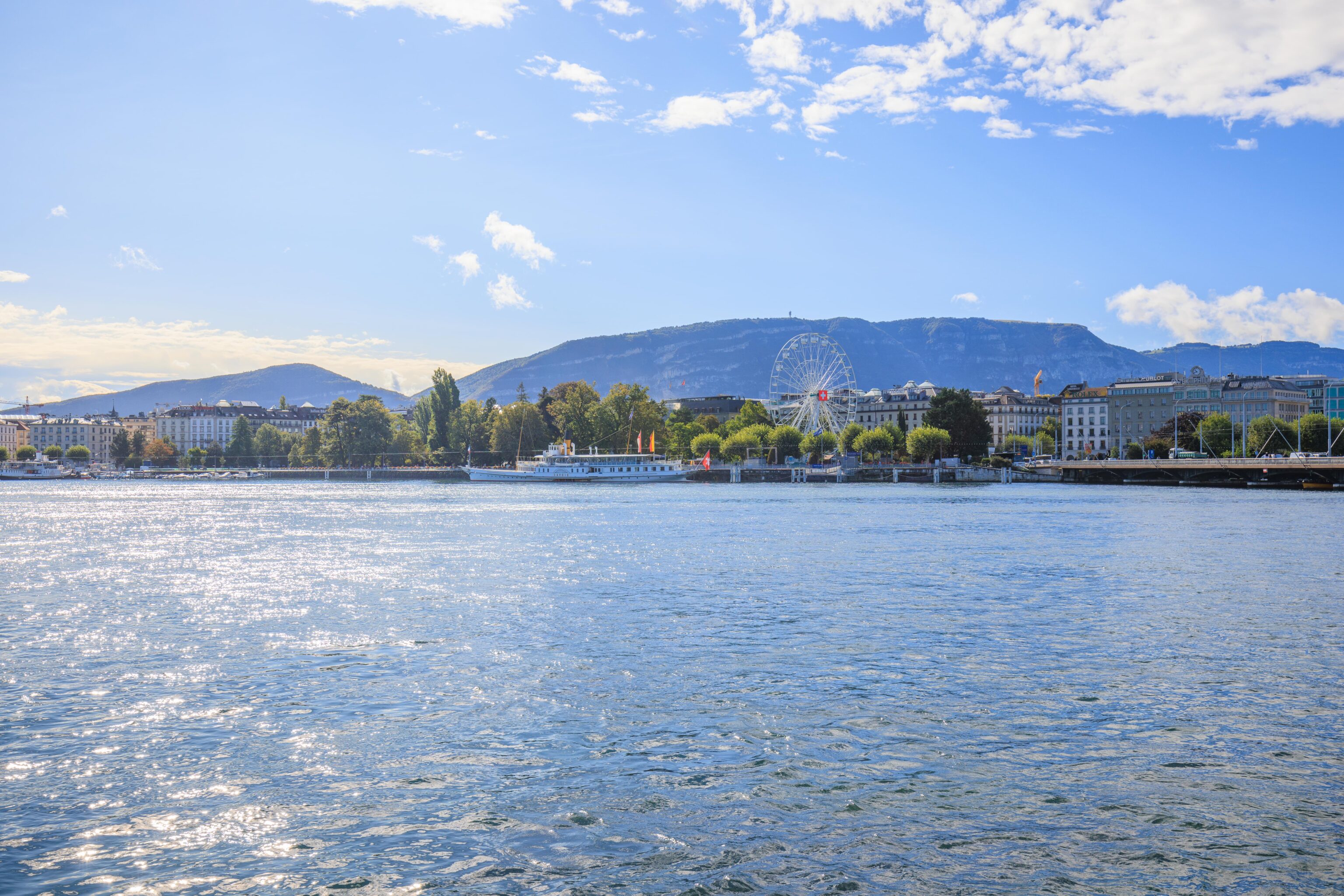
The view to the south as we waited.
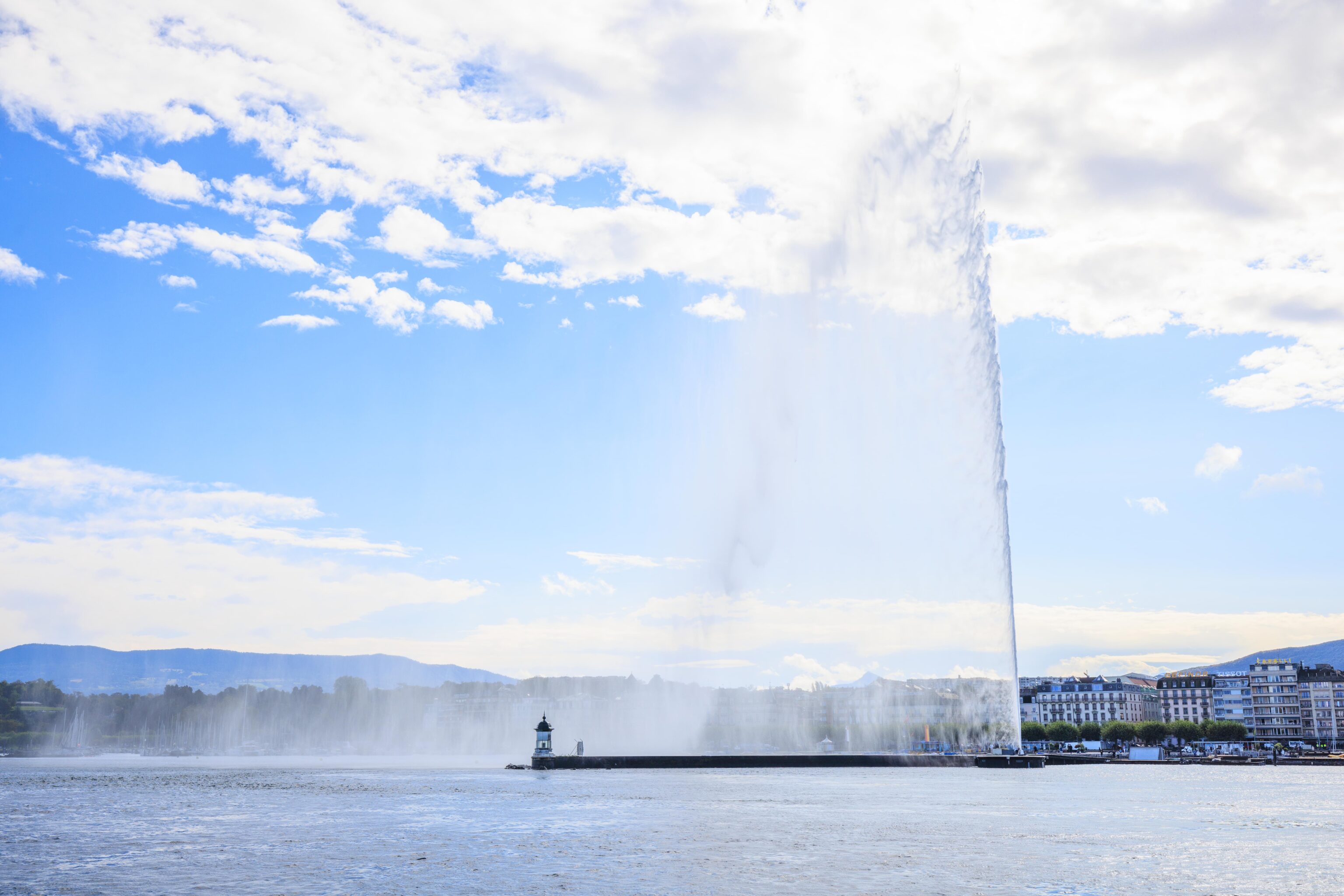
Soon, we were underway. It became apparent that we would pass through the Jet d’Eau due to the wind direction and location of the only channel for anything but the smallest of vessels out into the rest of the lake.
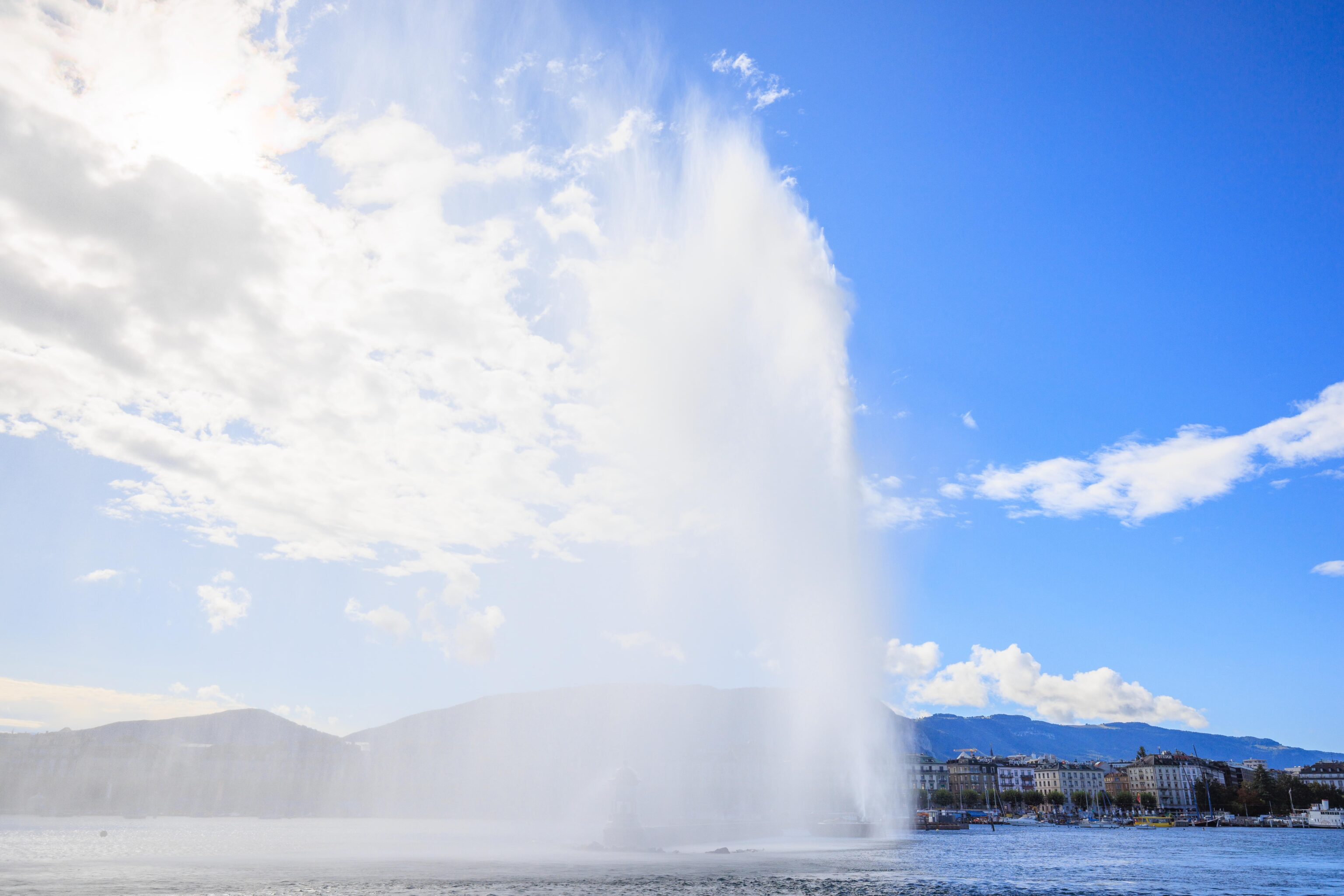
About to get sprayed by the fountain!
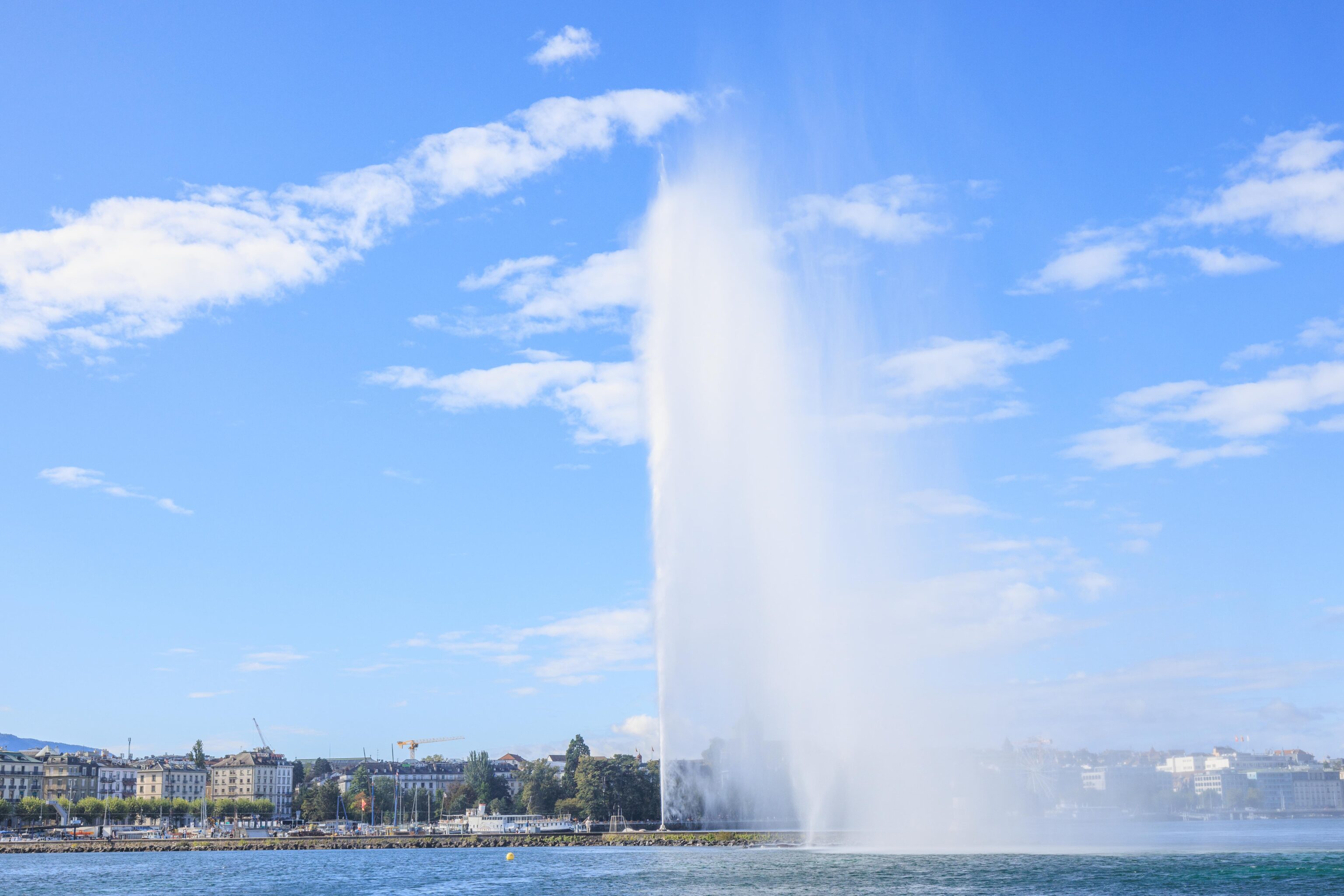
While there was quite a bit of water, it wasn’t so bad! We quickly passed through the spray.
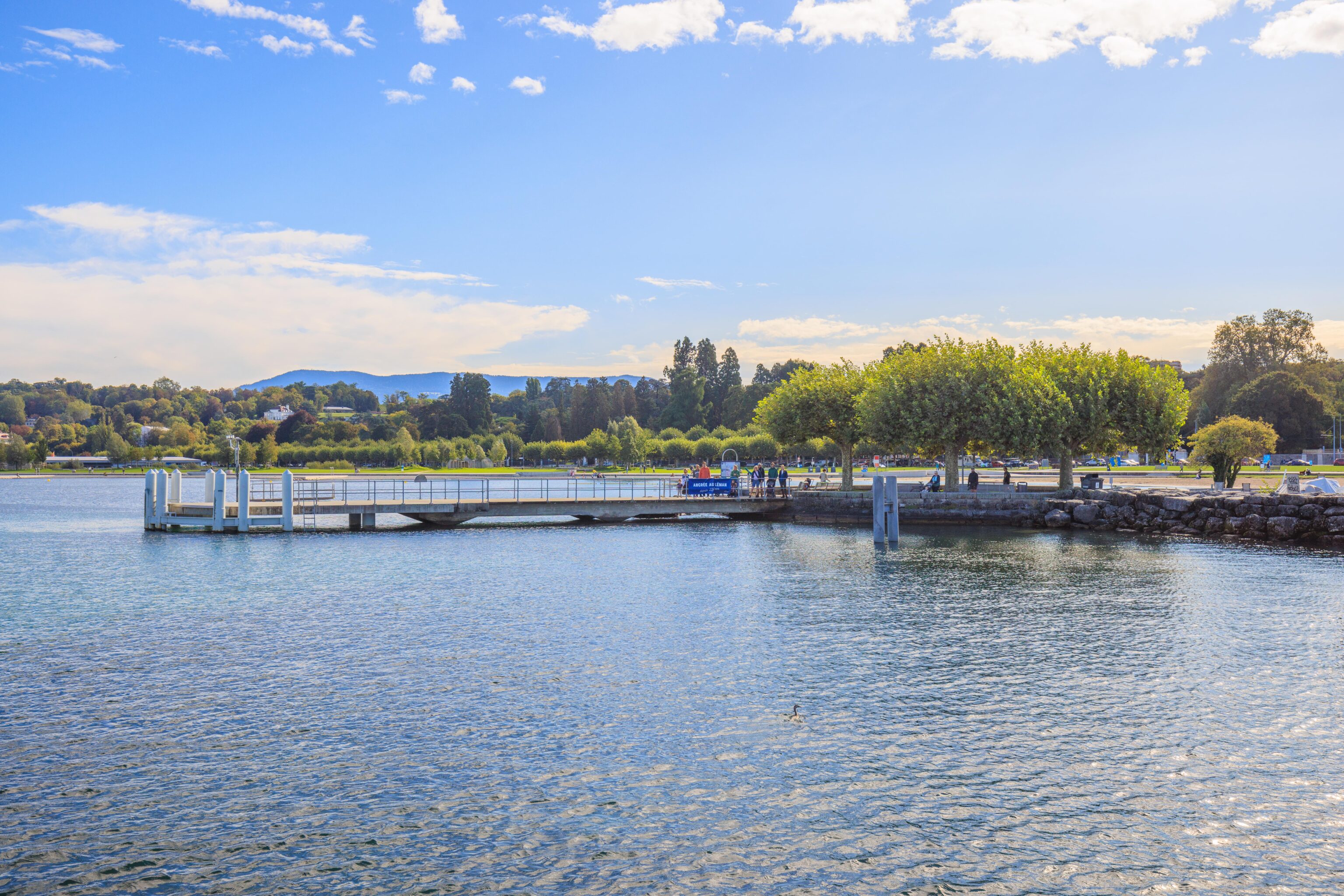
Our first stop was Genève Eaux Vives, at this pier just to the east of the Jet d’Eau.
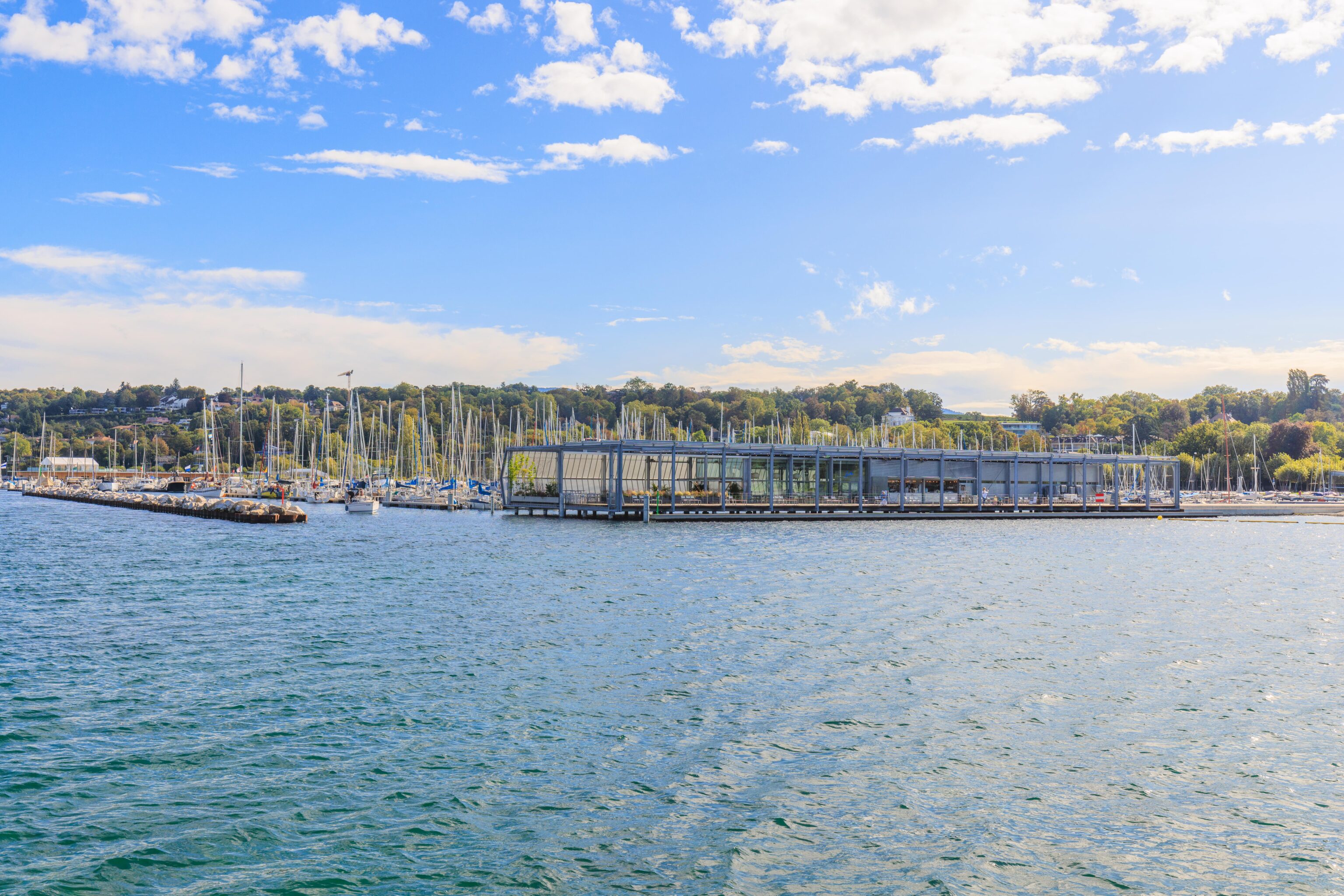
There was a very modern looking restaurant at the end of the next pier, by the entrance to a marina.
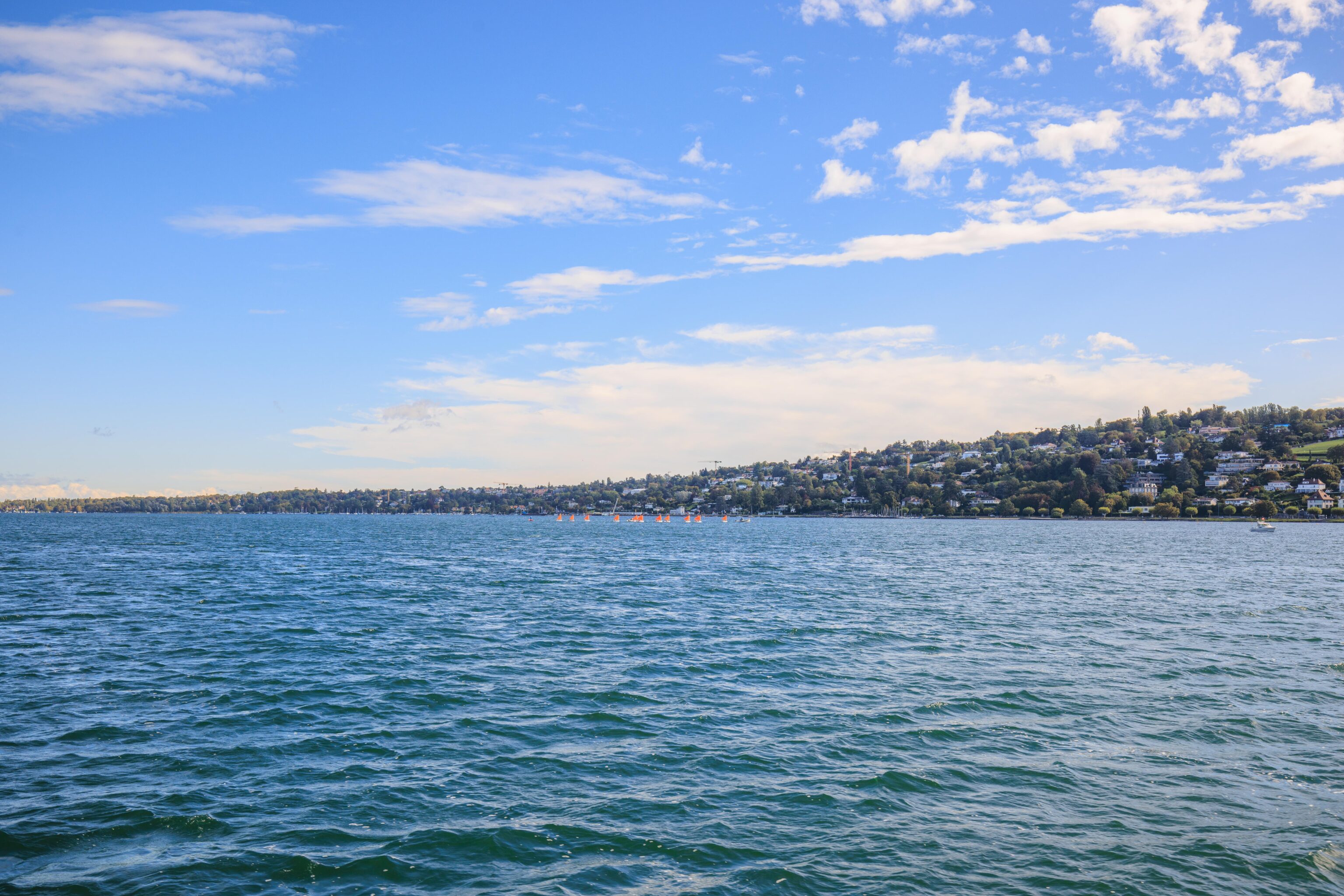
A bit hard to see, but we saw these tiny little sailboats. We’ve seen this before, near Vevey. It seems to be a sailing activity for children.
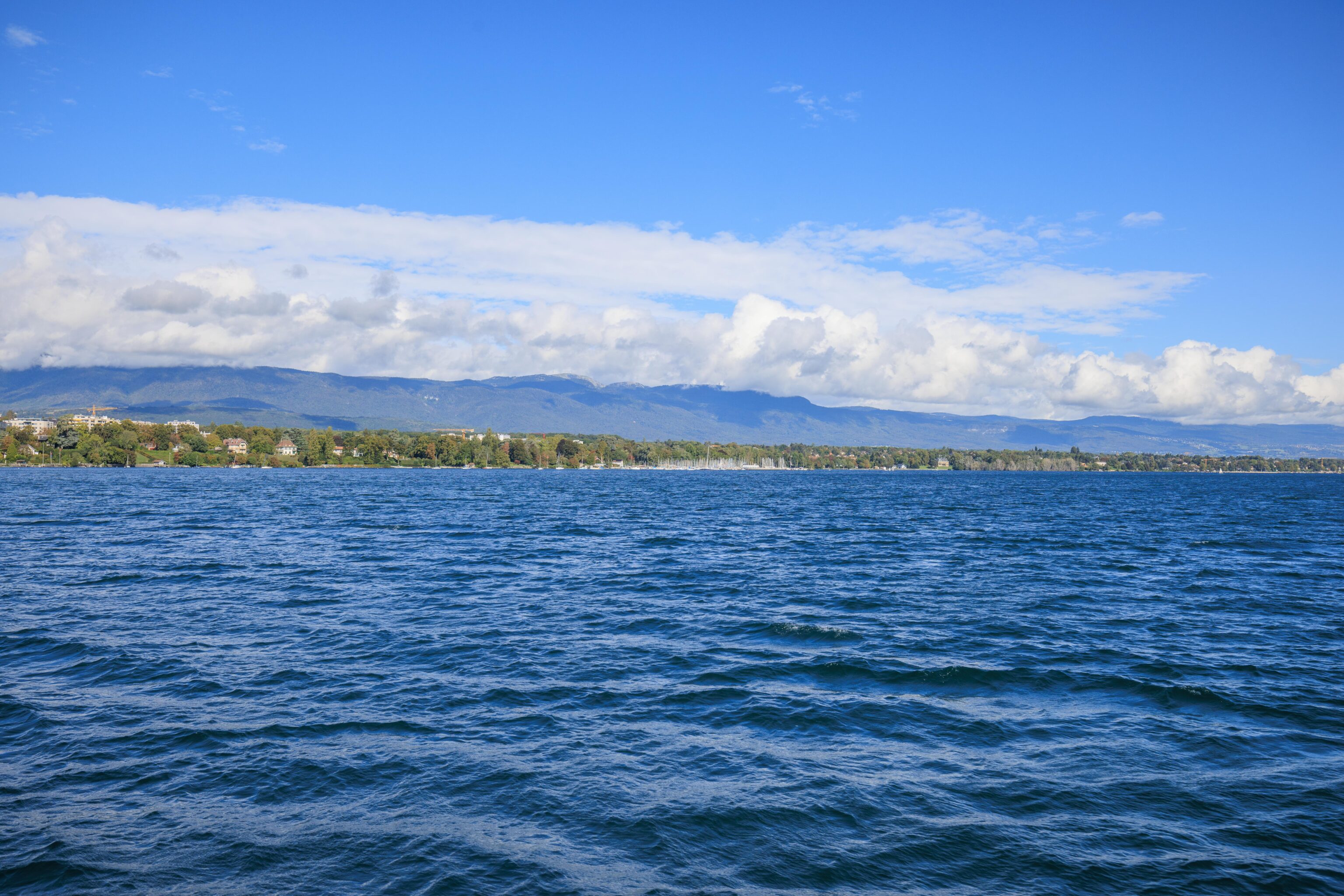
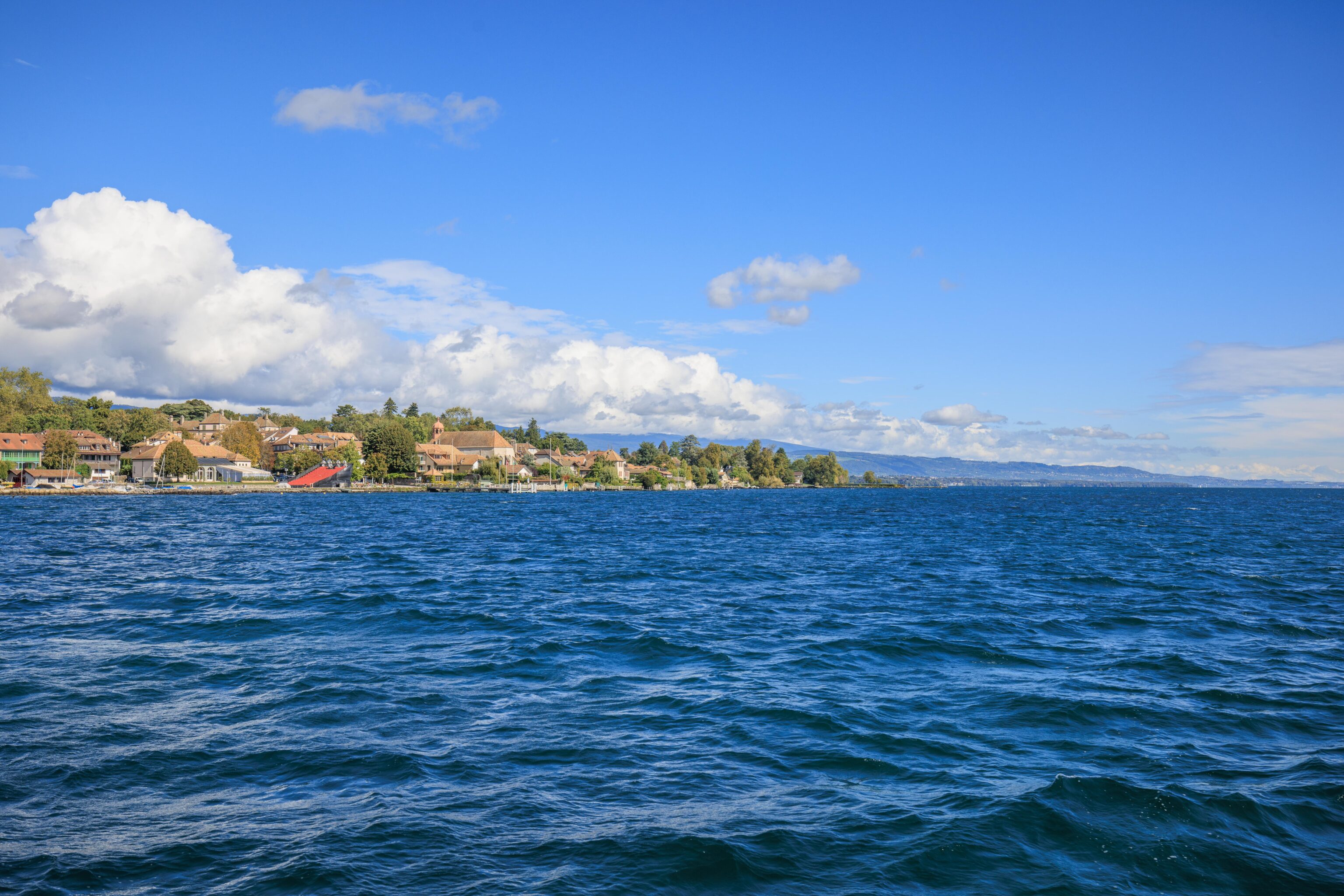
We mostly followed the northern, Swiss shore of the lake. We briefly stopped at Versoix and Coppet. We heard of Coppet yesterday as it is the furthest station on some of the local Leman Express trains that go to Annemasse.
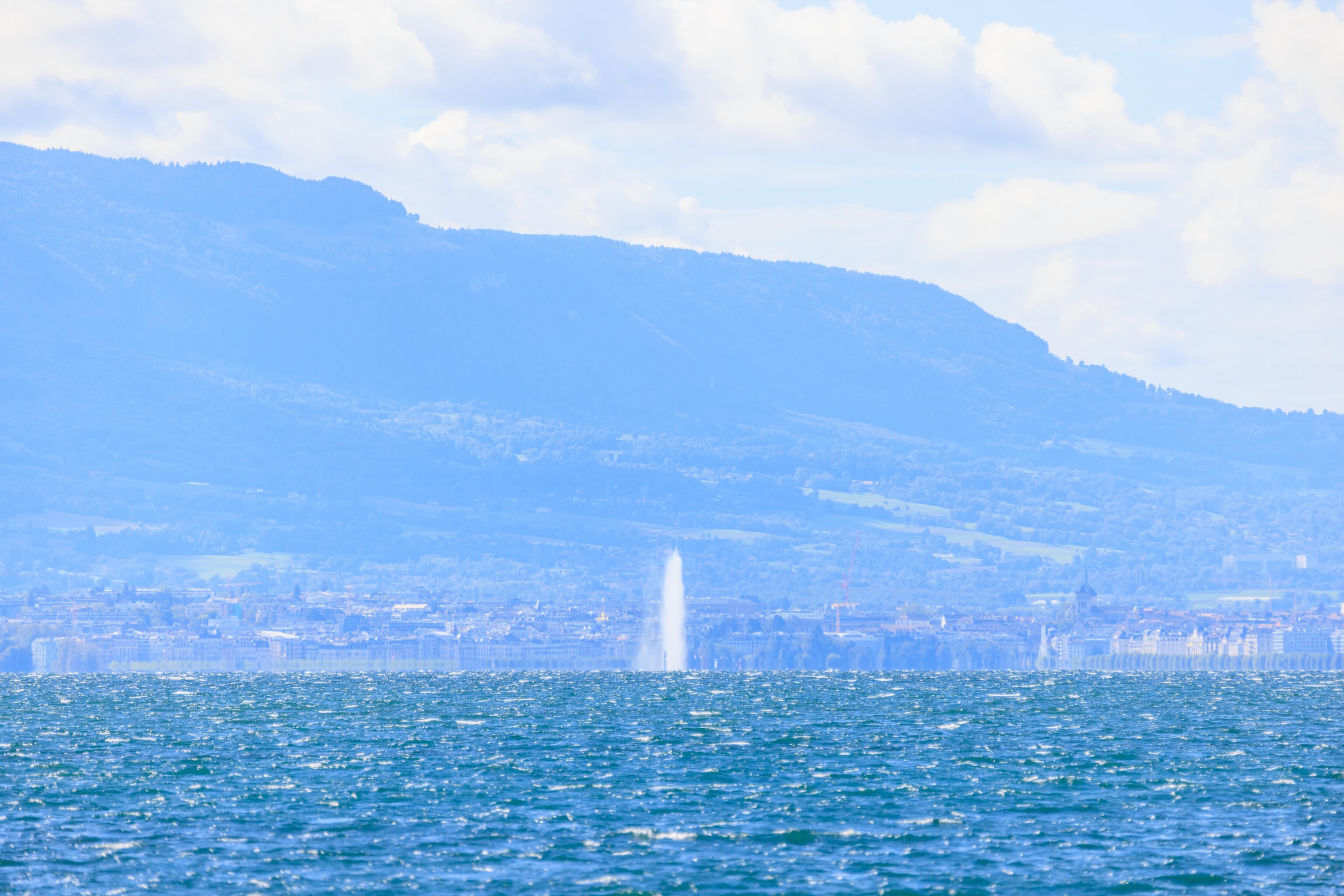
We could still see the Jet d’Eau behind us as we continued heading out into the lake.
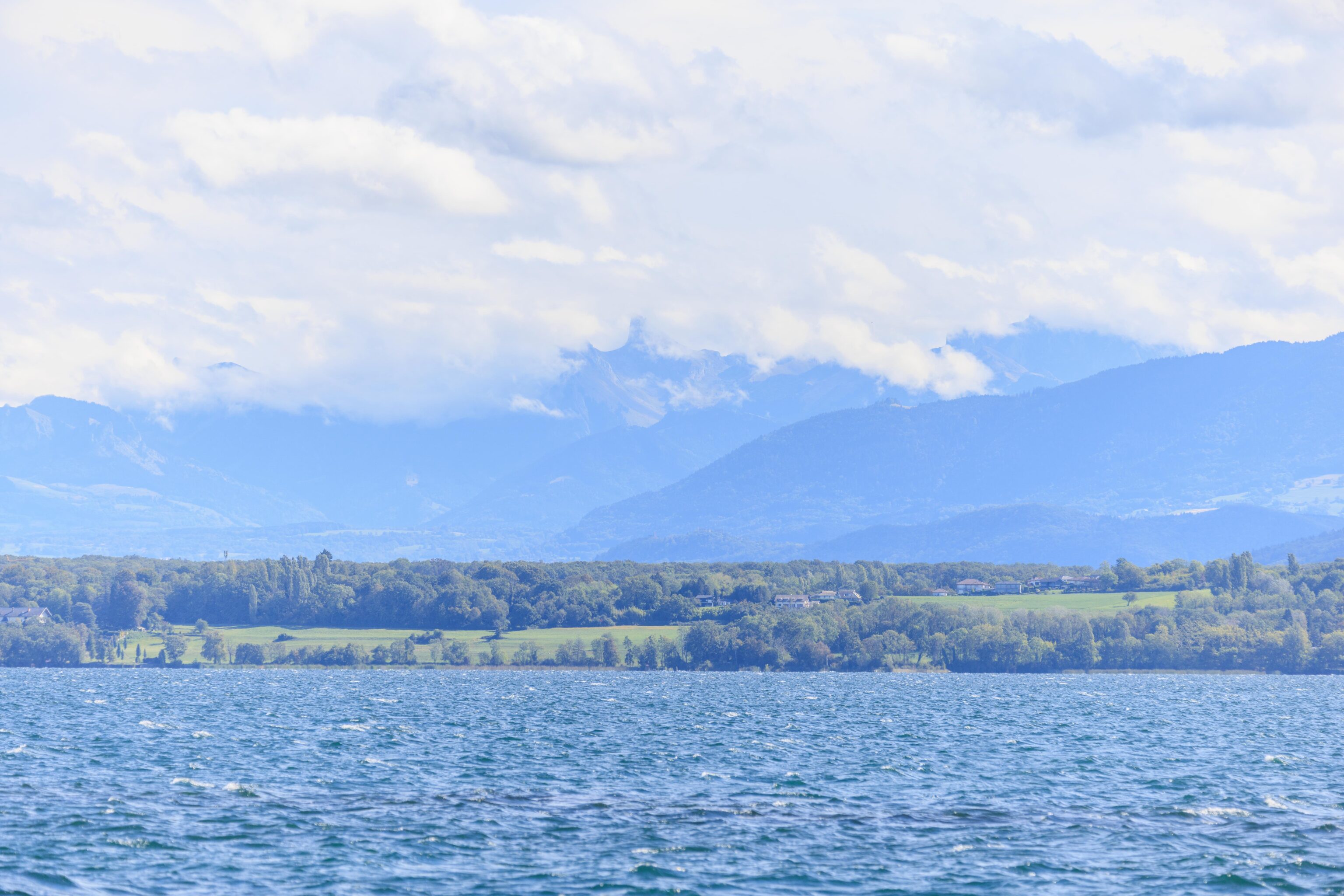
We could see the mountains in Haute-Savoie, France, beyond the southern shore of the lake. It was rather cloudy though so they weren’t very well defined.
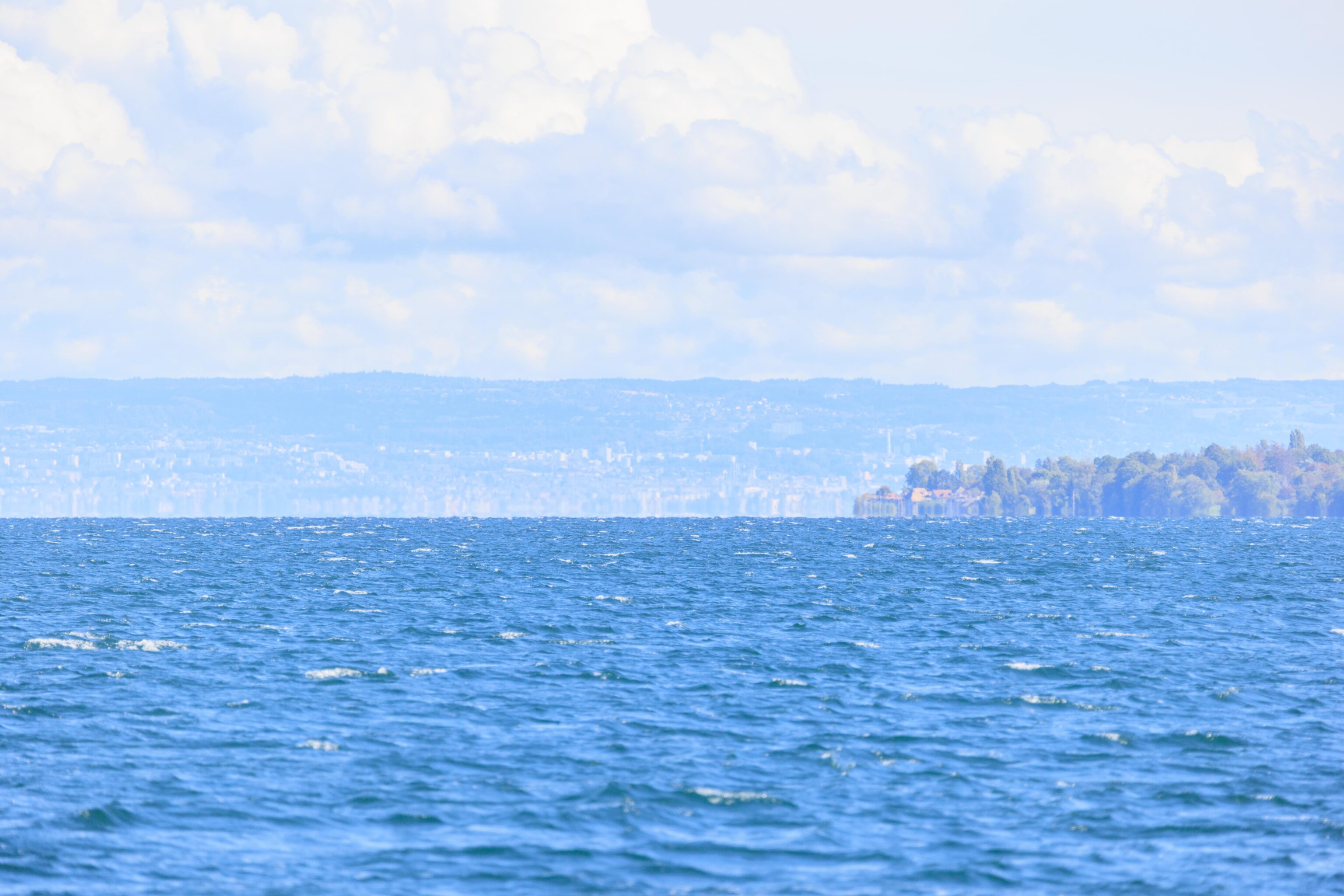
Looking to the east, from this point we were probably seeing Lausanne in the distance. But it was impossible to make anything out due to significant heat distortion over the 50km or so distance.
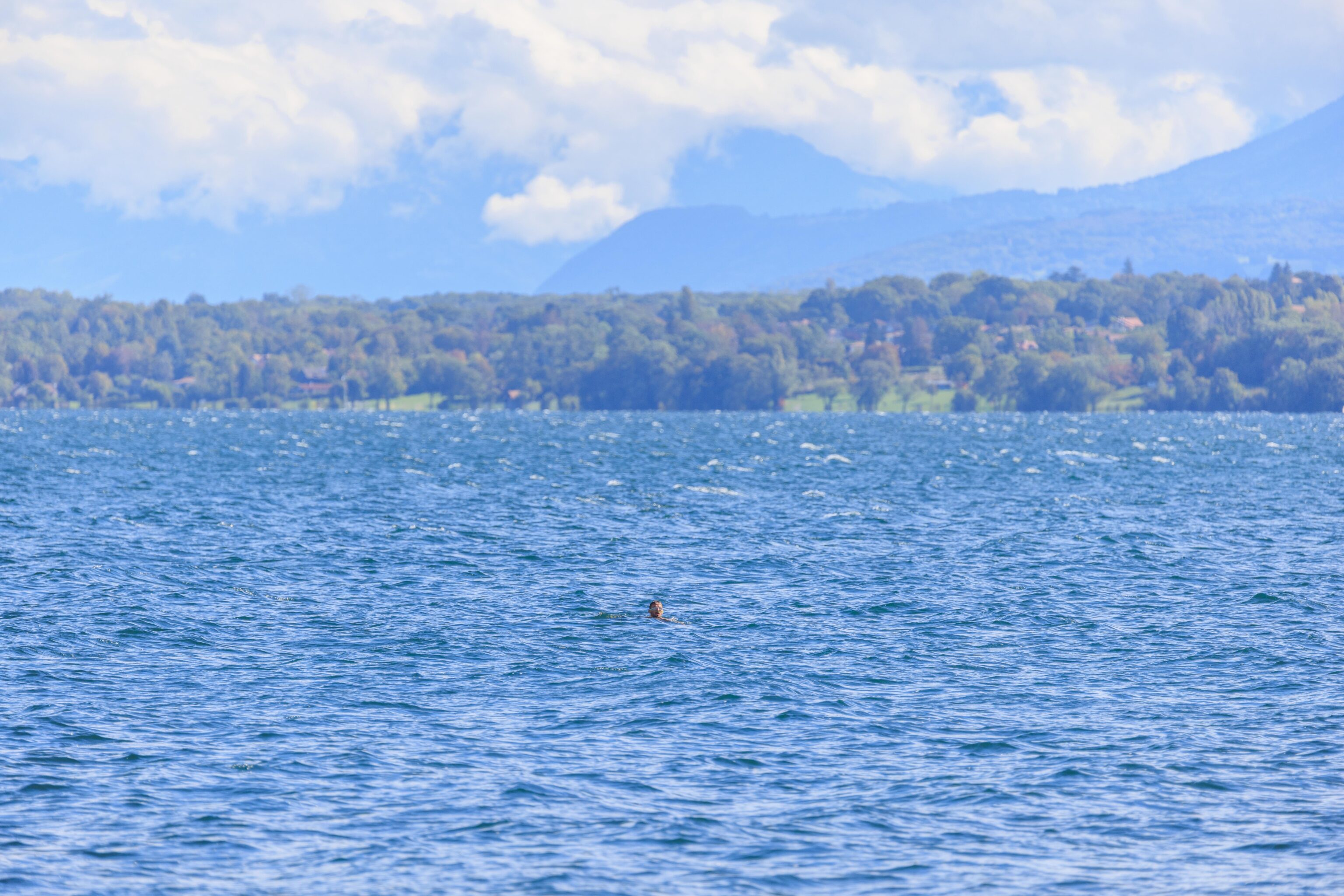
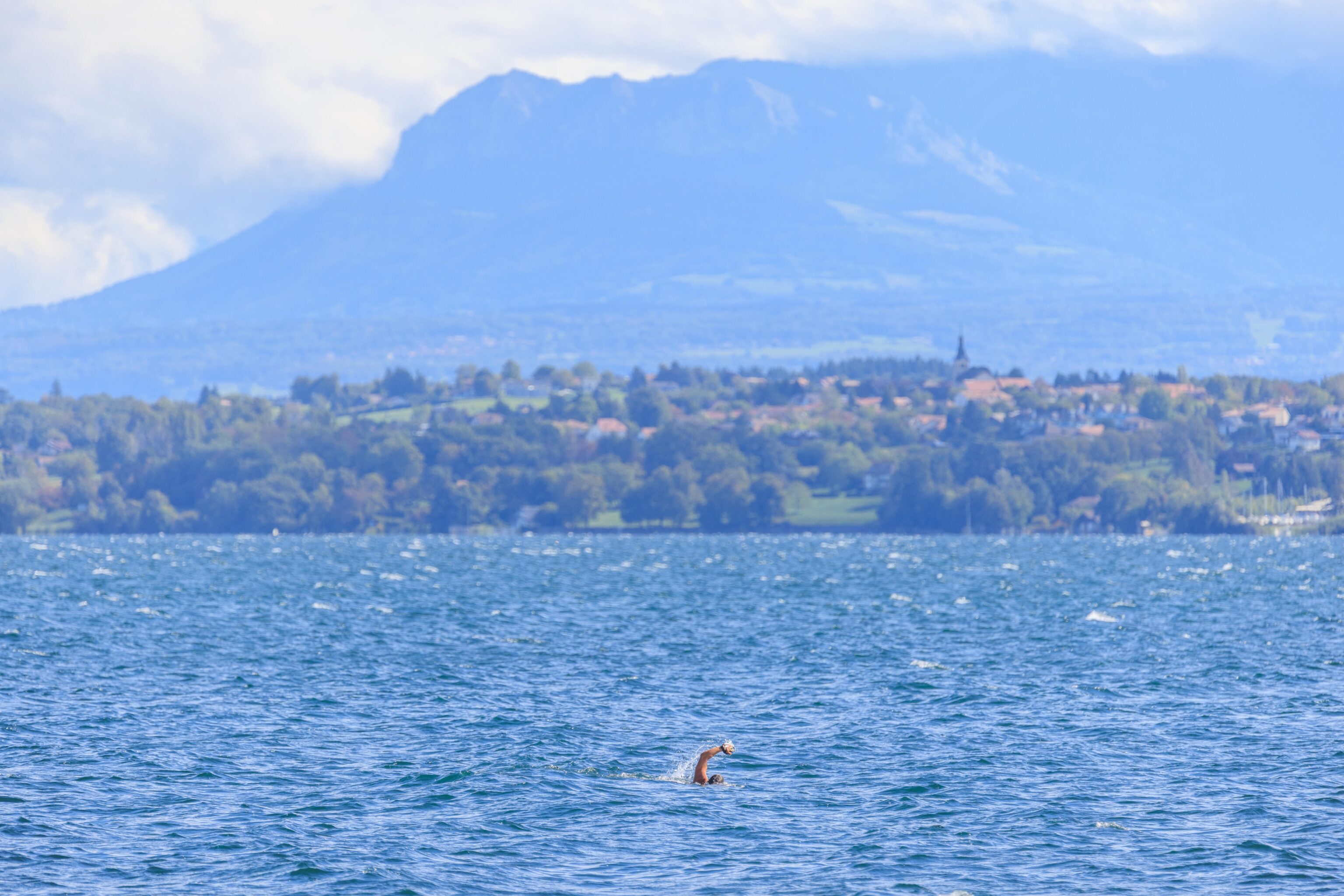
Our next stop was Céligny, still on the north shore in Switzerland. We noticed this guy swim by as we were docked at the pier!
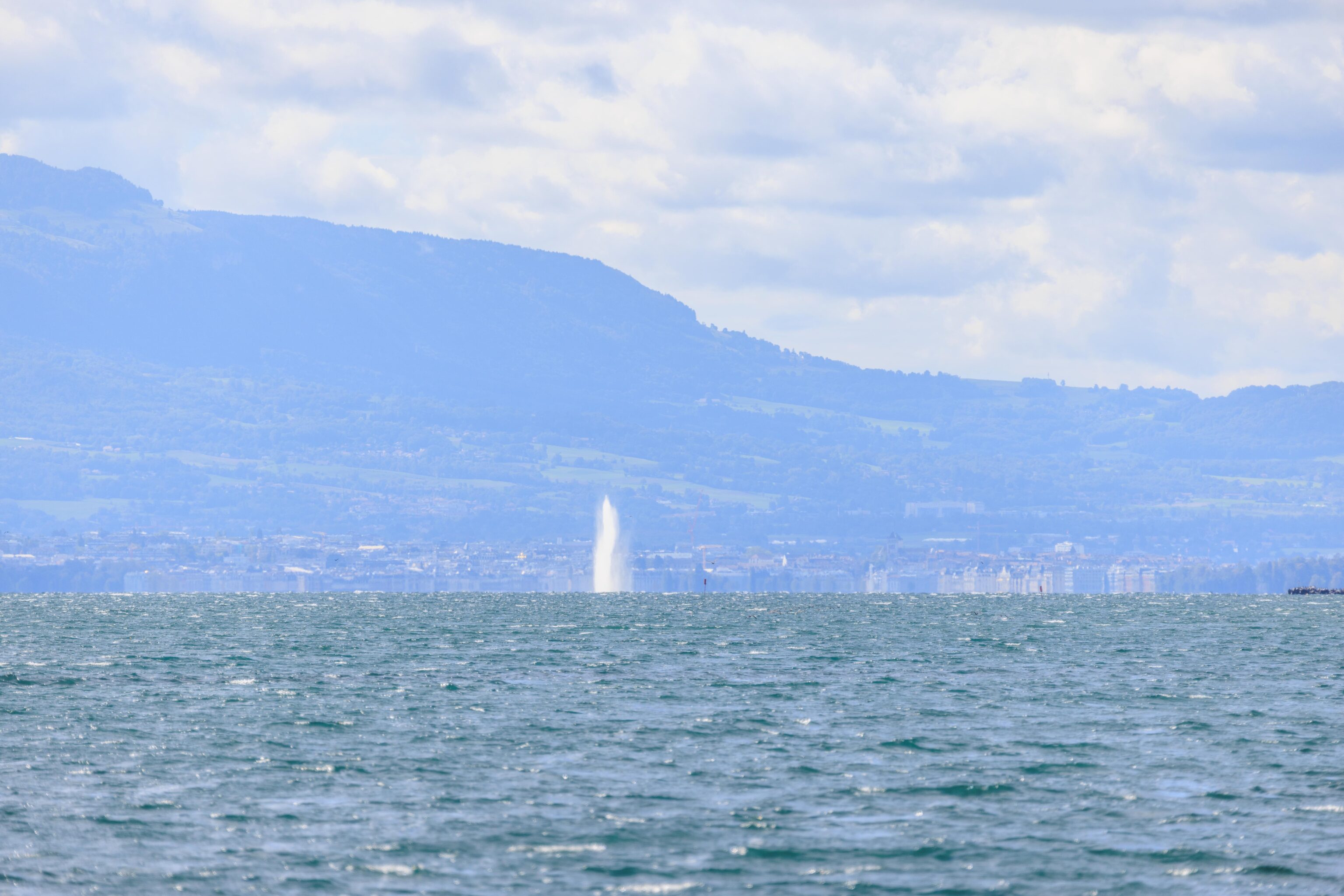
The Jet d’Eau was still visible from here!
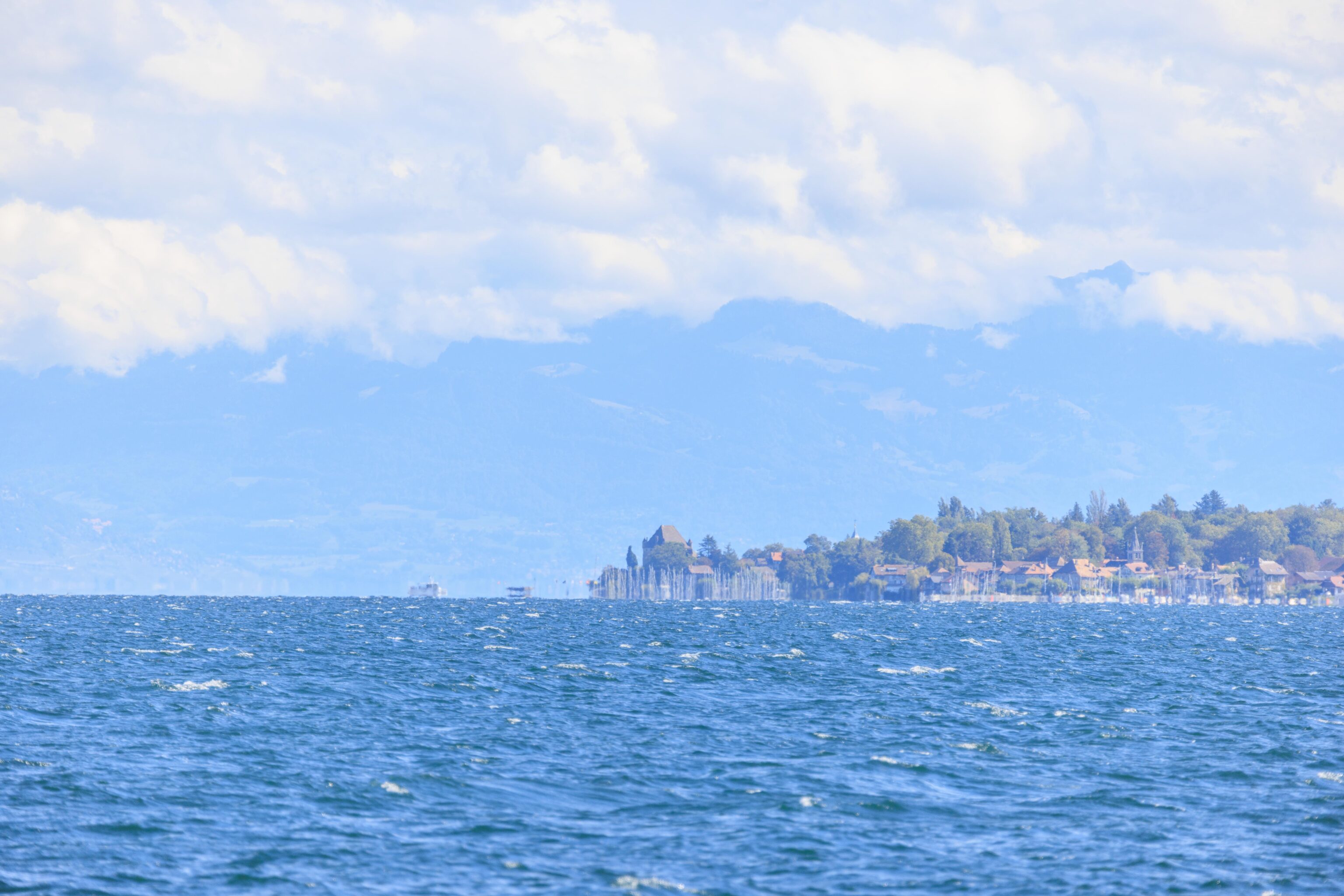
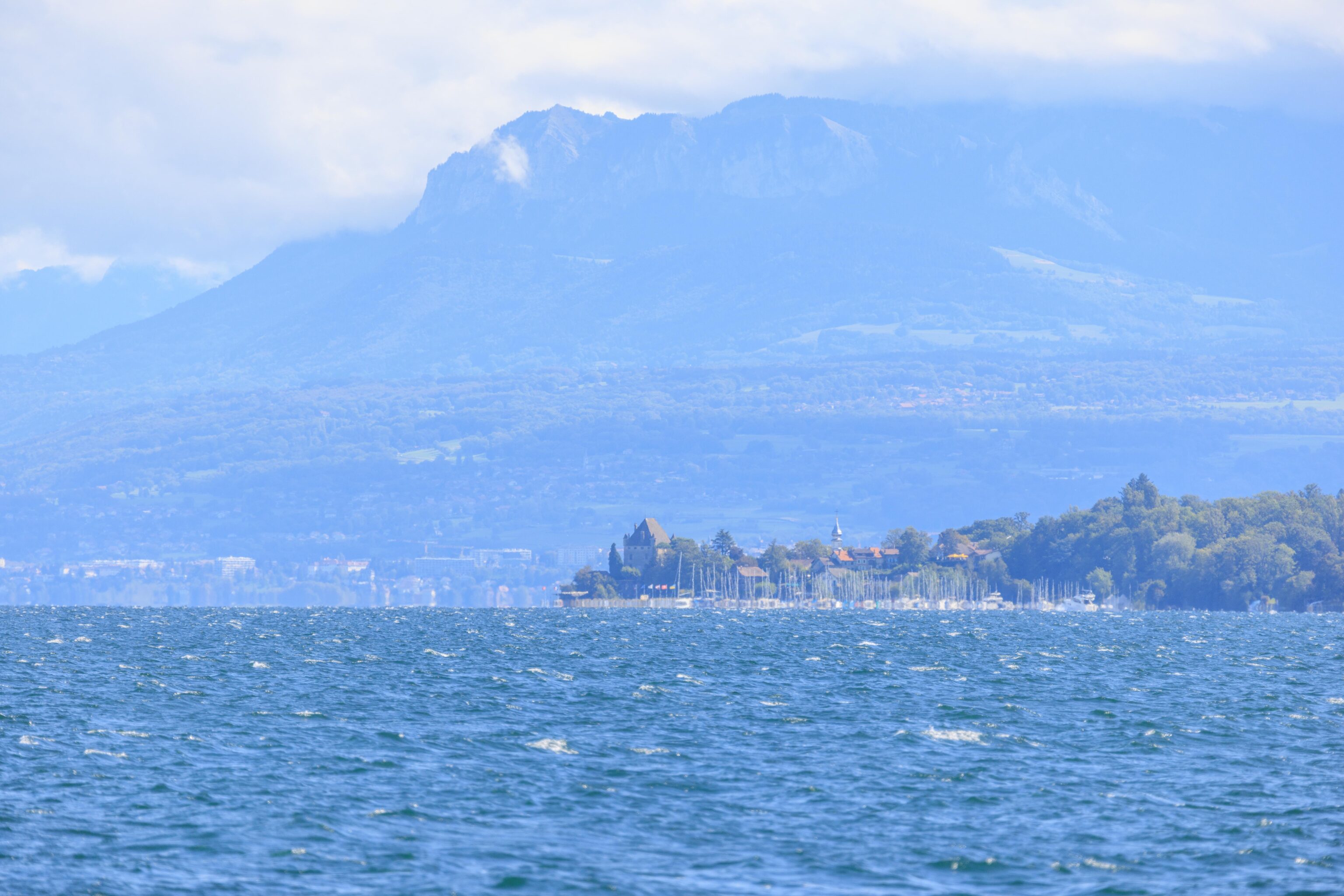
We started to be able to see our destination, Yvoire in France on the southern shore of the lake. The background seems to possibly be Thonon-les-Bains, the town next to Evian, which we visited on our trip last year to Switzerland.
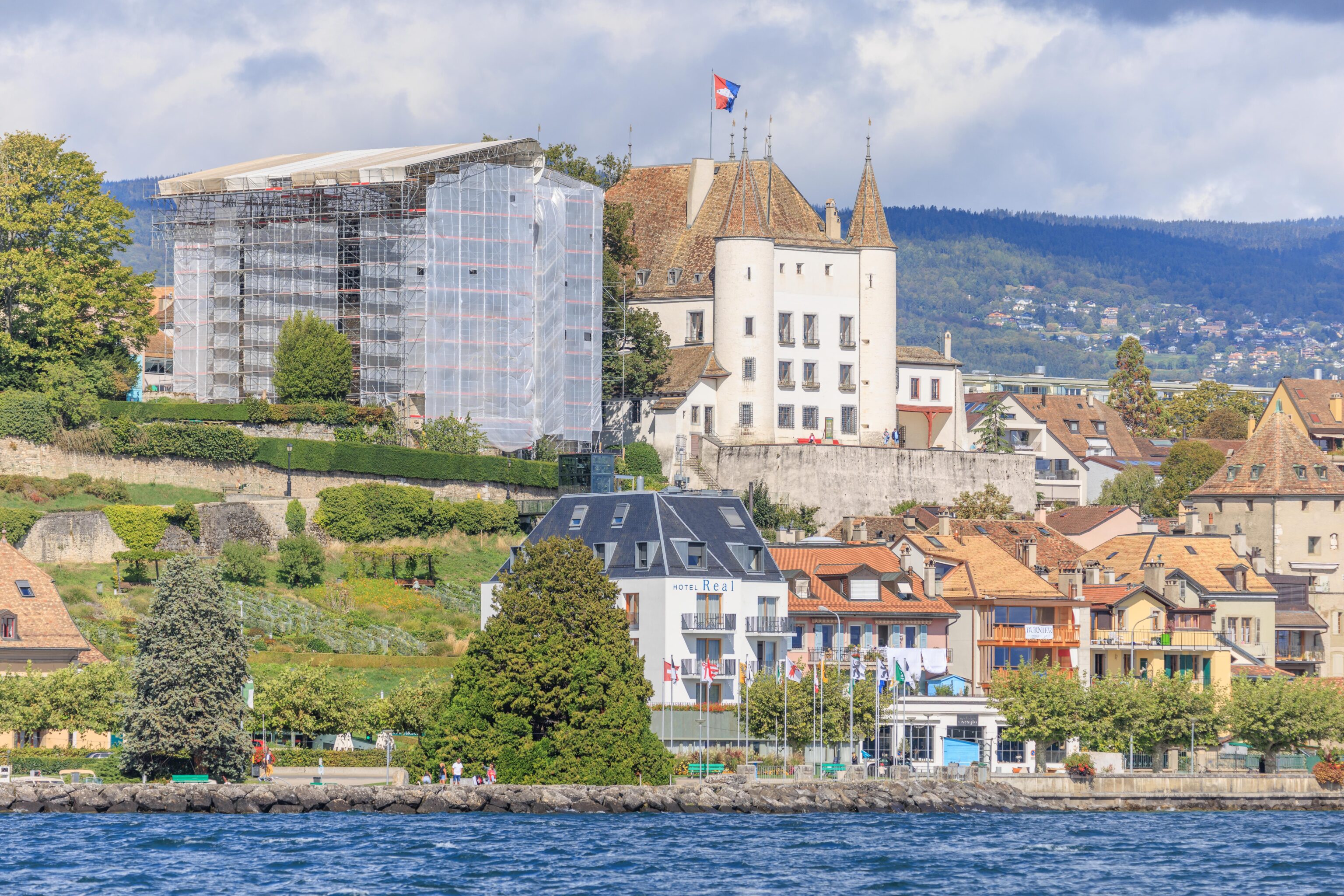
One more stop in Switzerland though! We briefly stopped in Nyon, near this castle that sits atop a hill.
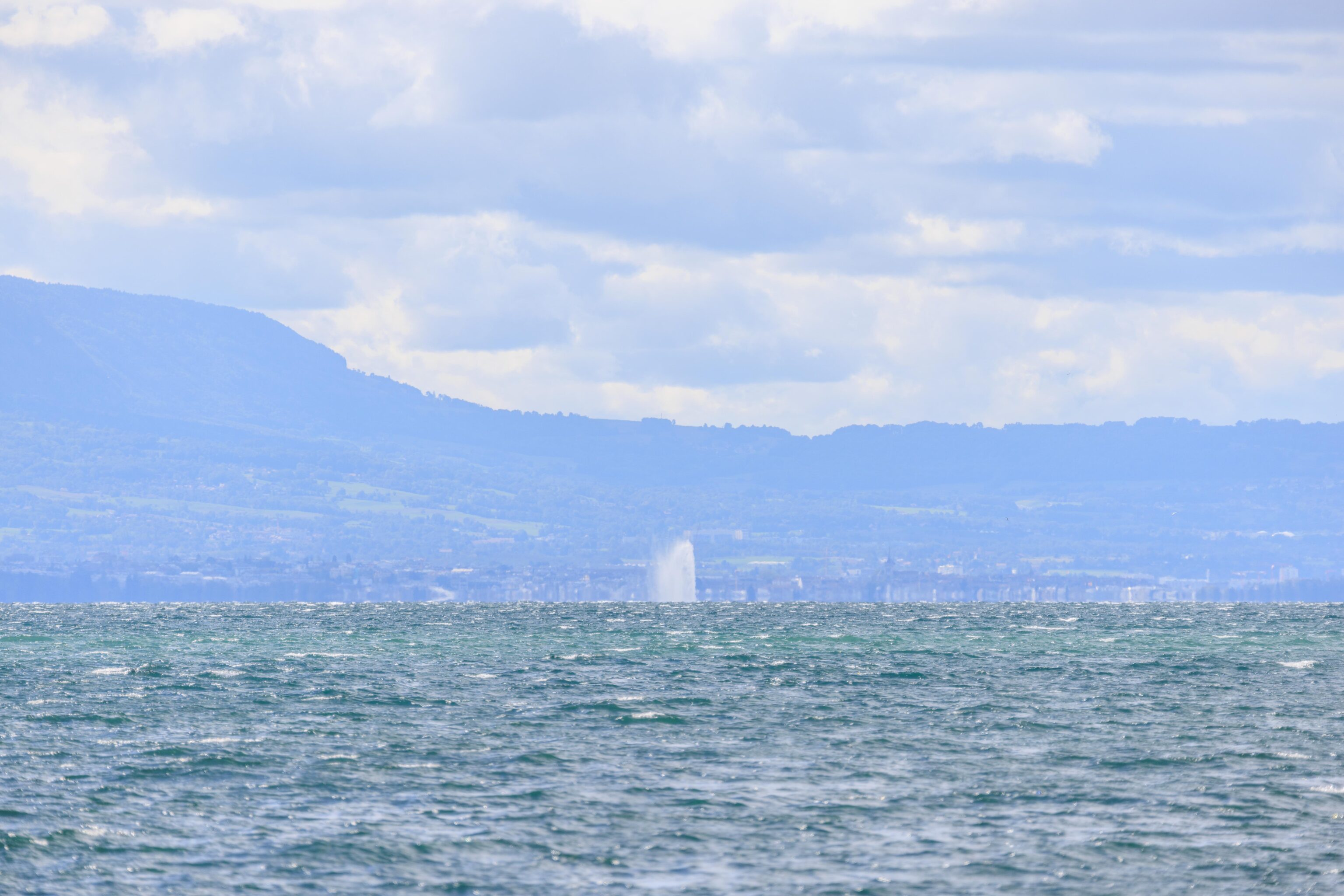
The Jet d’Eau was still visible, though much smaller now.
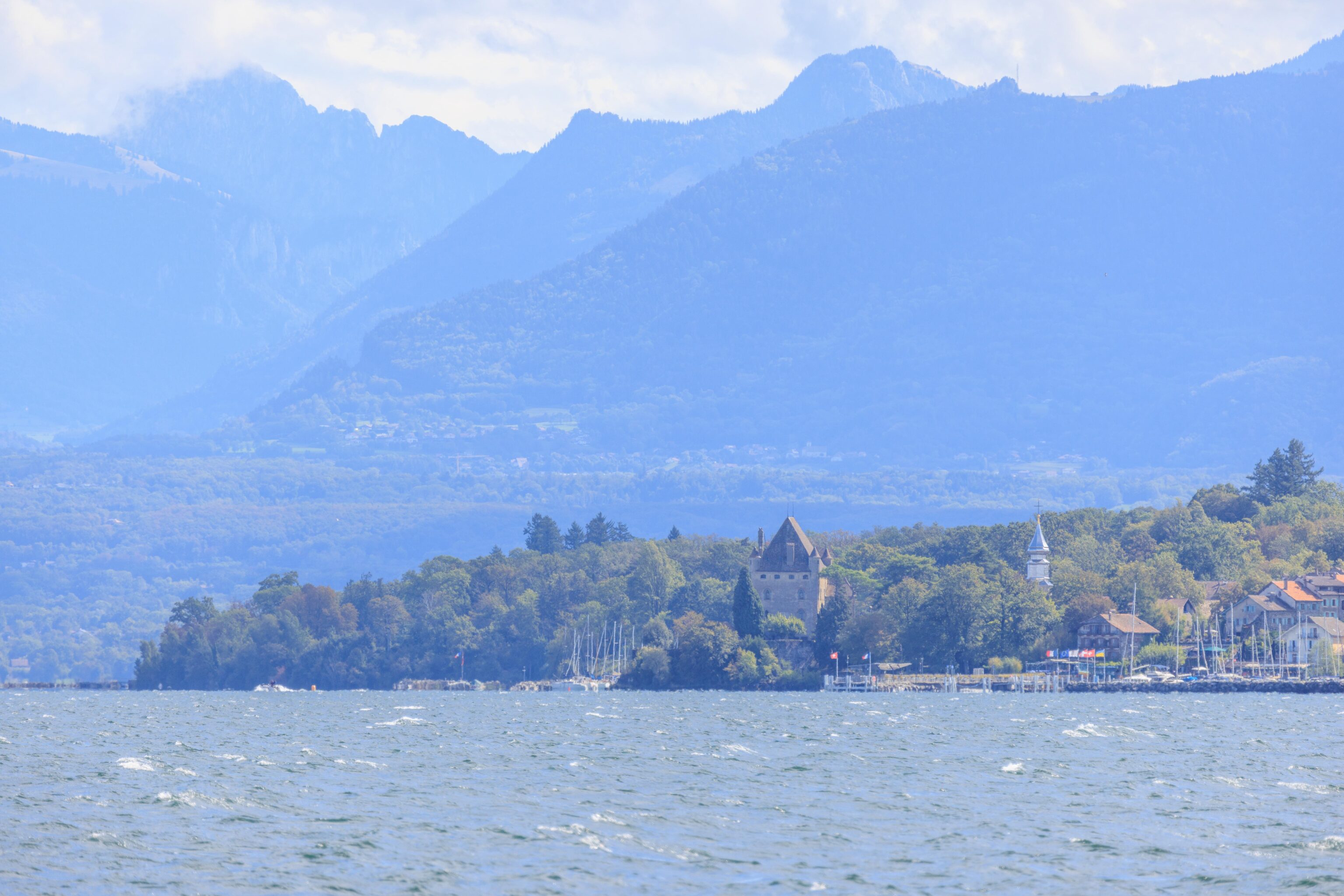
Our destination, Yvoire, was getting much closer as we headed directly toward it.
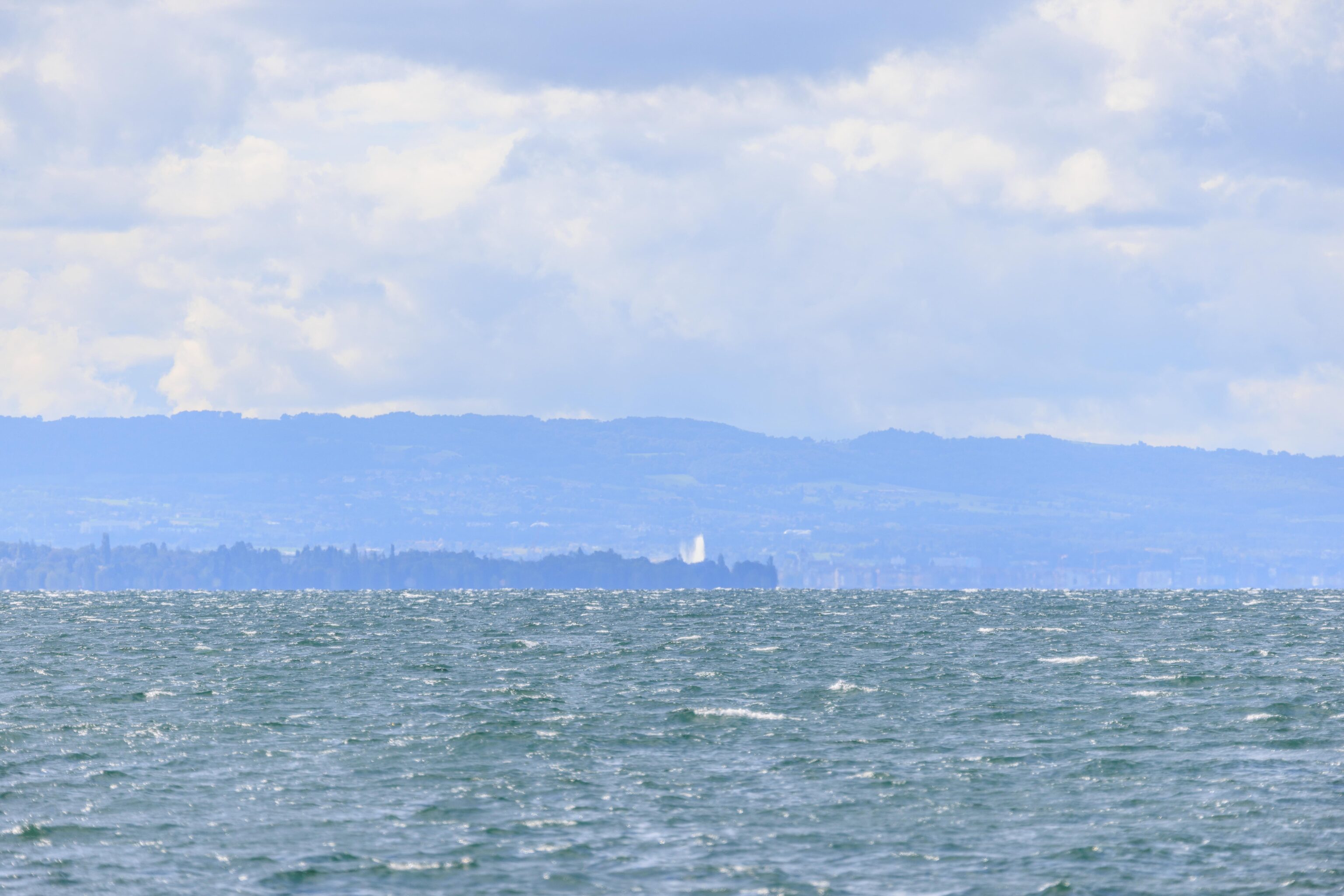
The Jet d’Eau was still visible, though its bottom half was obscured by terrain at this point.
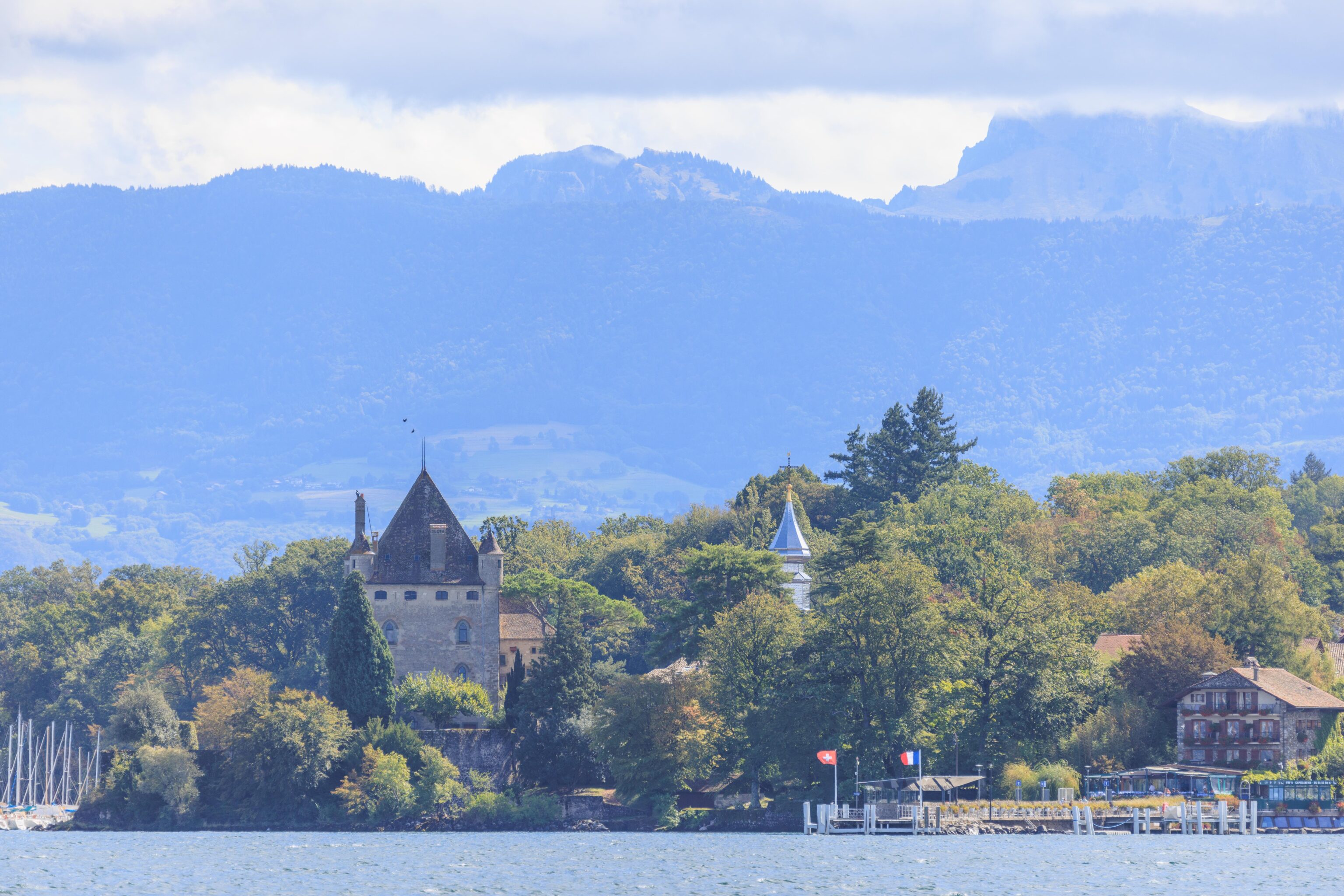
We could see the pier that we were heading to, near the castle and a church spire.
Yvoire
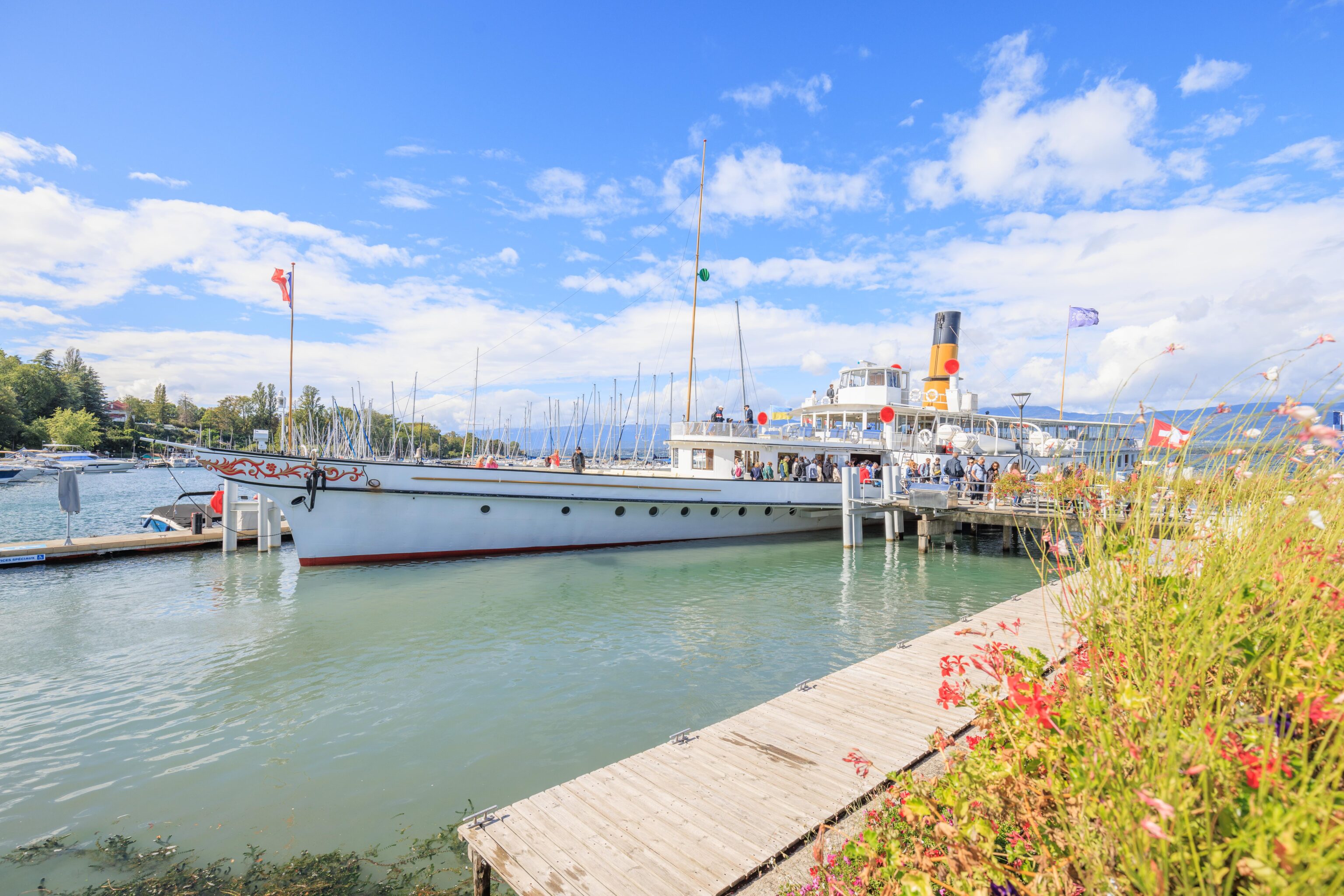
We were able to disembark pretty quickly. When we looked back at the Simplon, there was still a line of people queued to leave the boat.
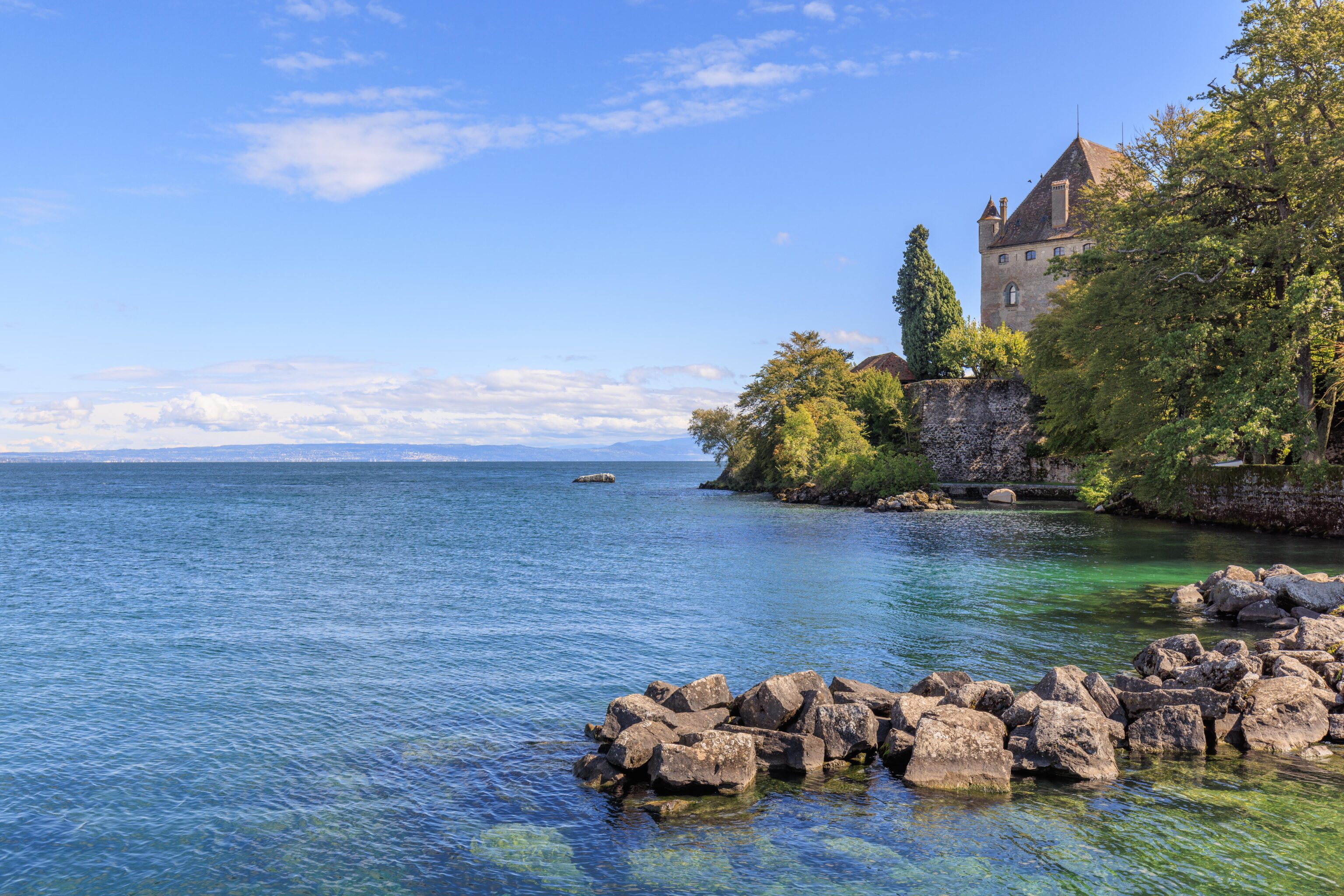
A view of the castle from the pier.
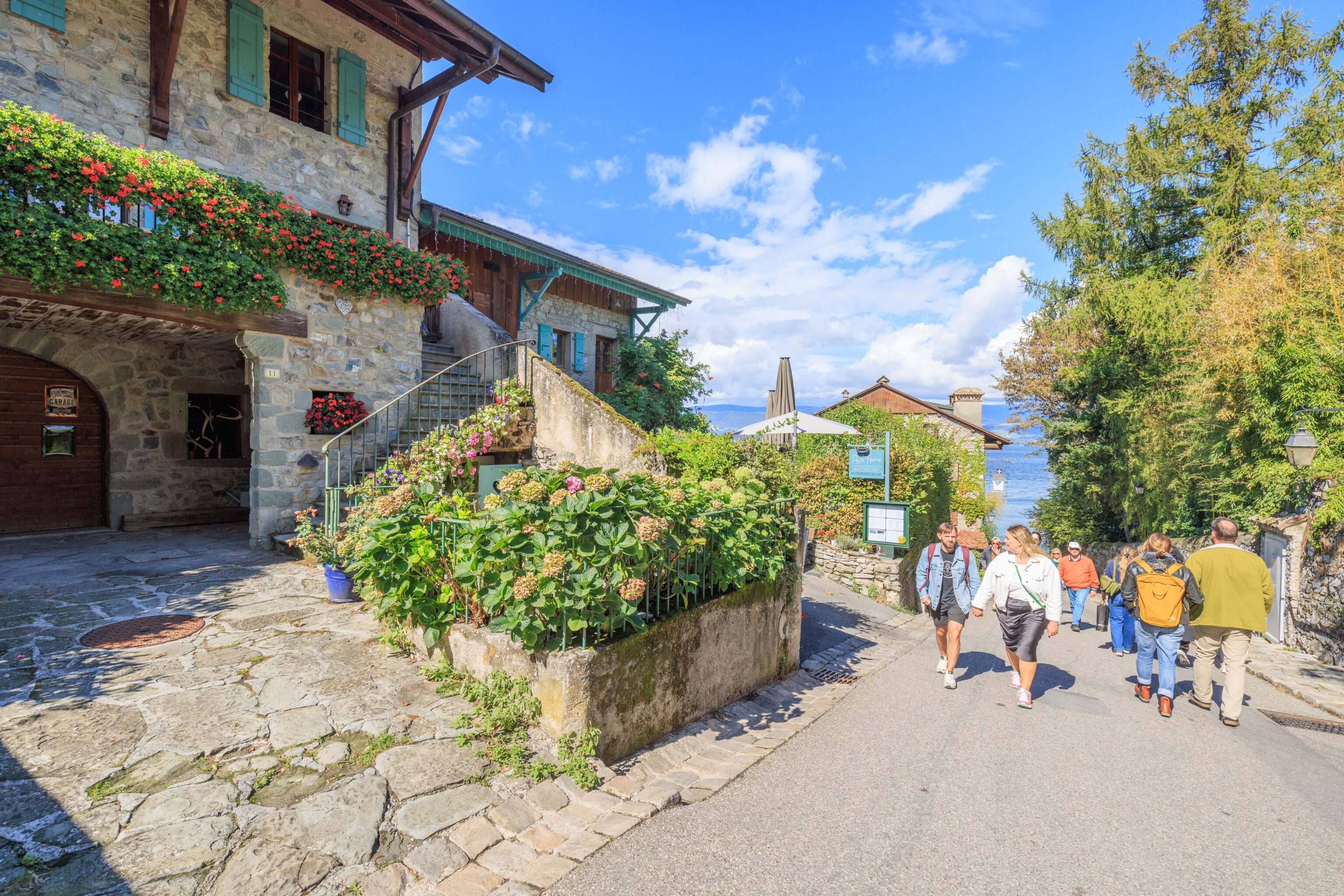
There is a steep hill just beyond the pier. We walked up, taking a look behind as we went.
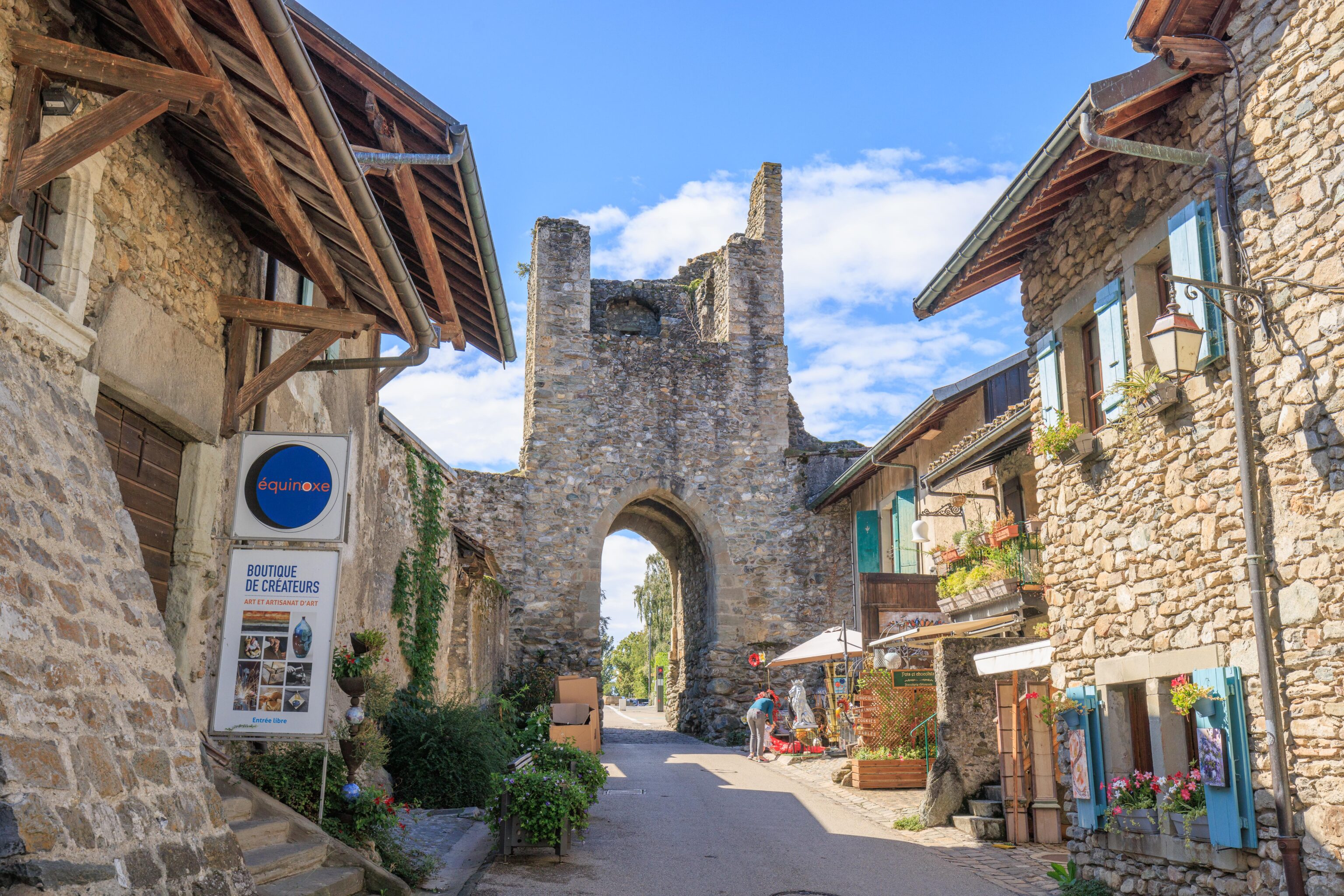
An old gate under an old tower! Yvoire is known for its historic medieval village area, on the hill by the pier.
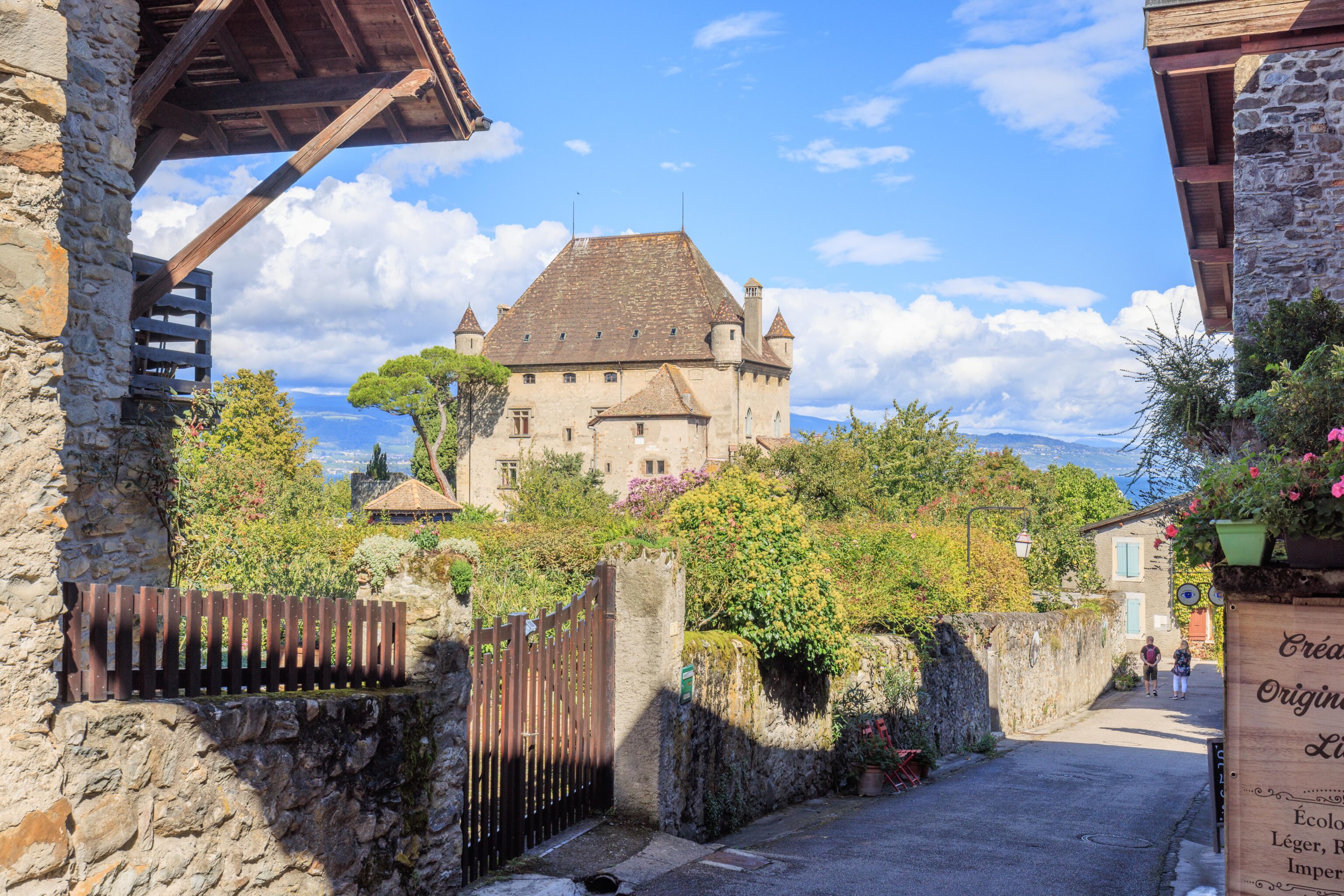
A nice view of the castle, the Château d’Yvoire.
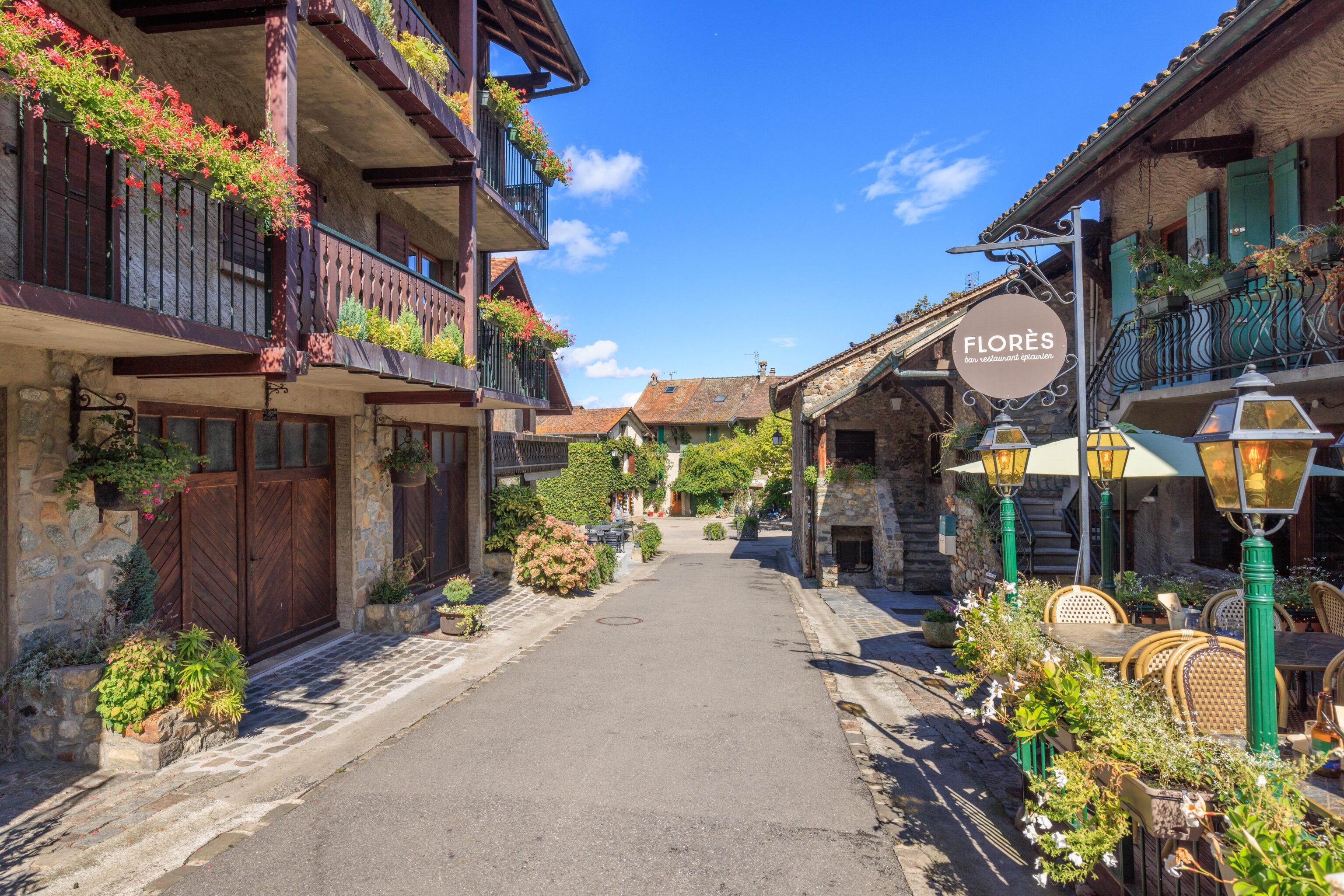
We decided to have lunch here, at Florès.
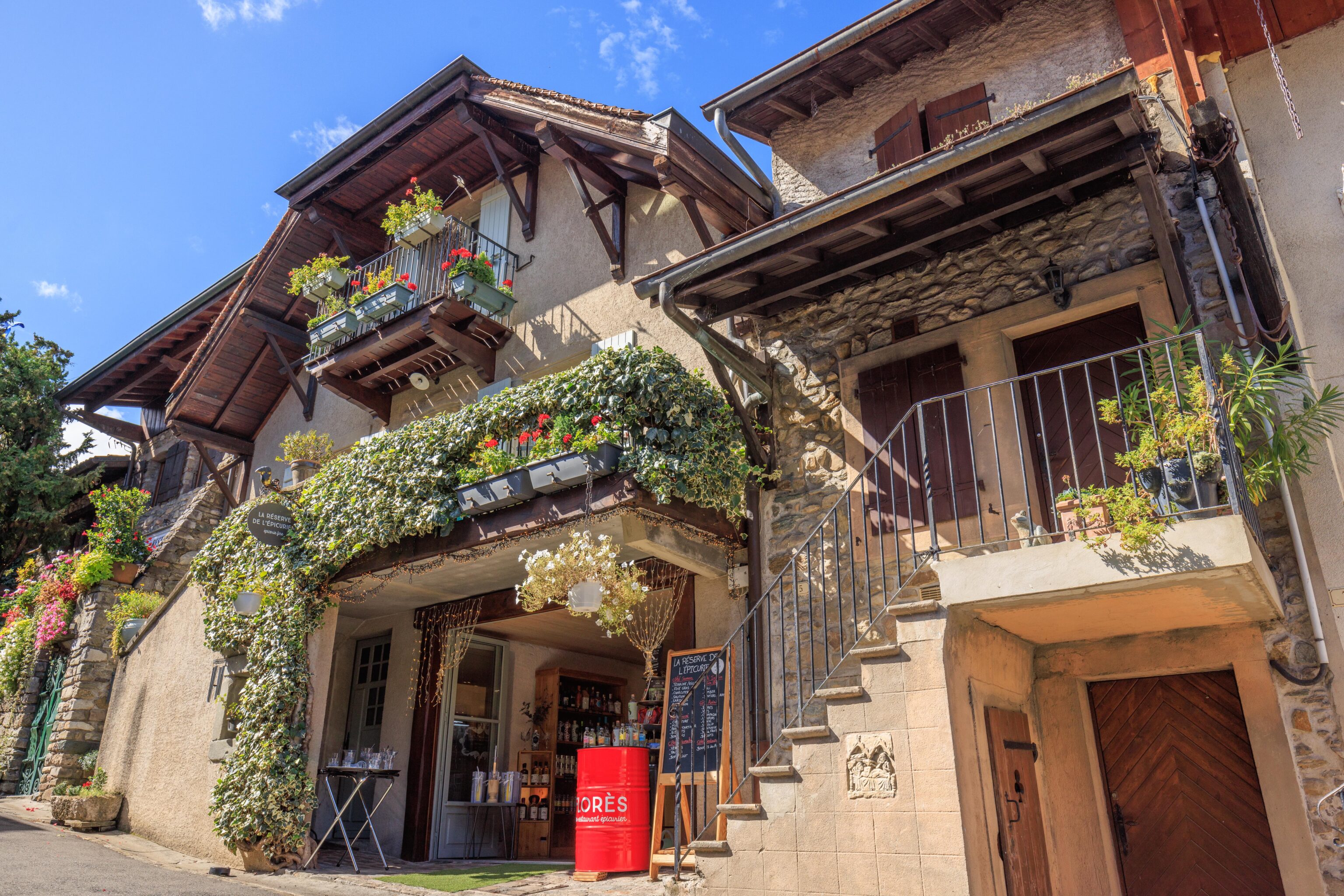
The view from our roadside table.
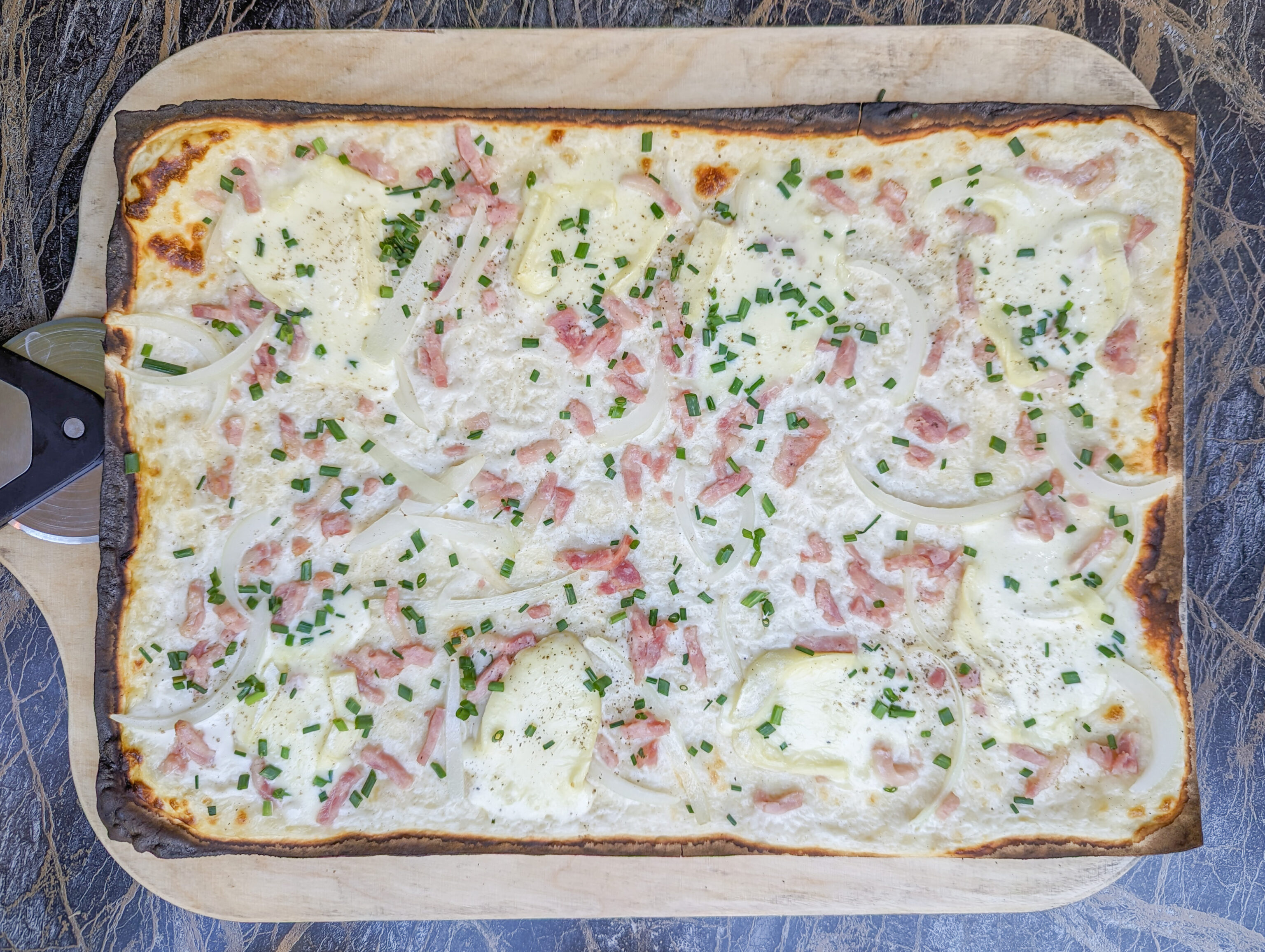
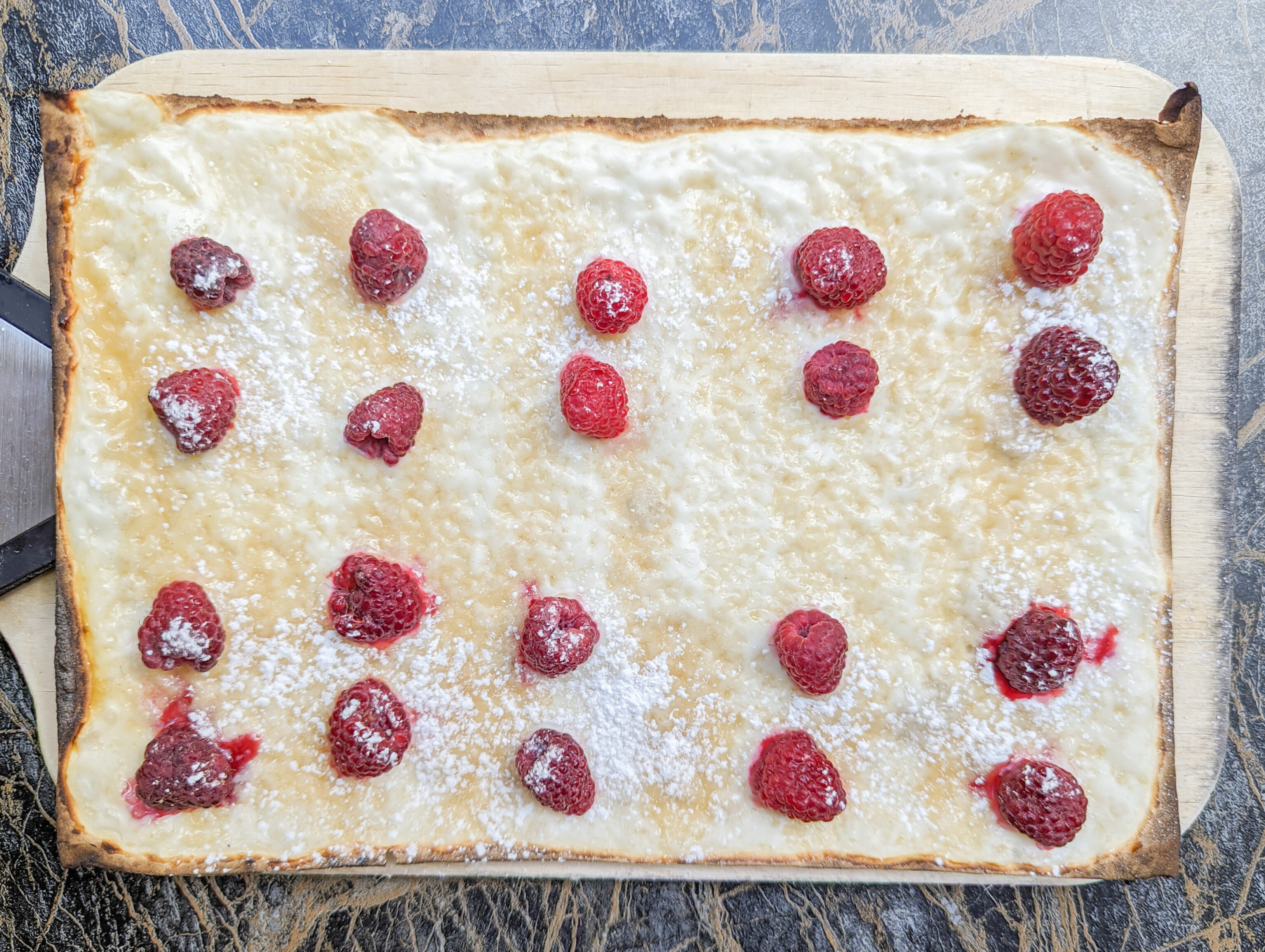
These items that we ordered look like pizzas or flatbread but are tartes flambées, also known as flammekueche in German. It is a regional dish from France and Germany to the north of here, so not really a local thing. It is basically an extremely thin and crispy pizza or flatbread. The toppings were simple but very good.
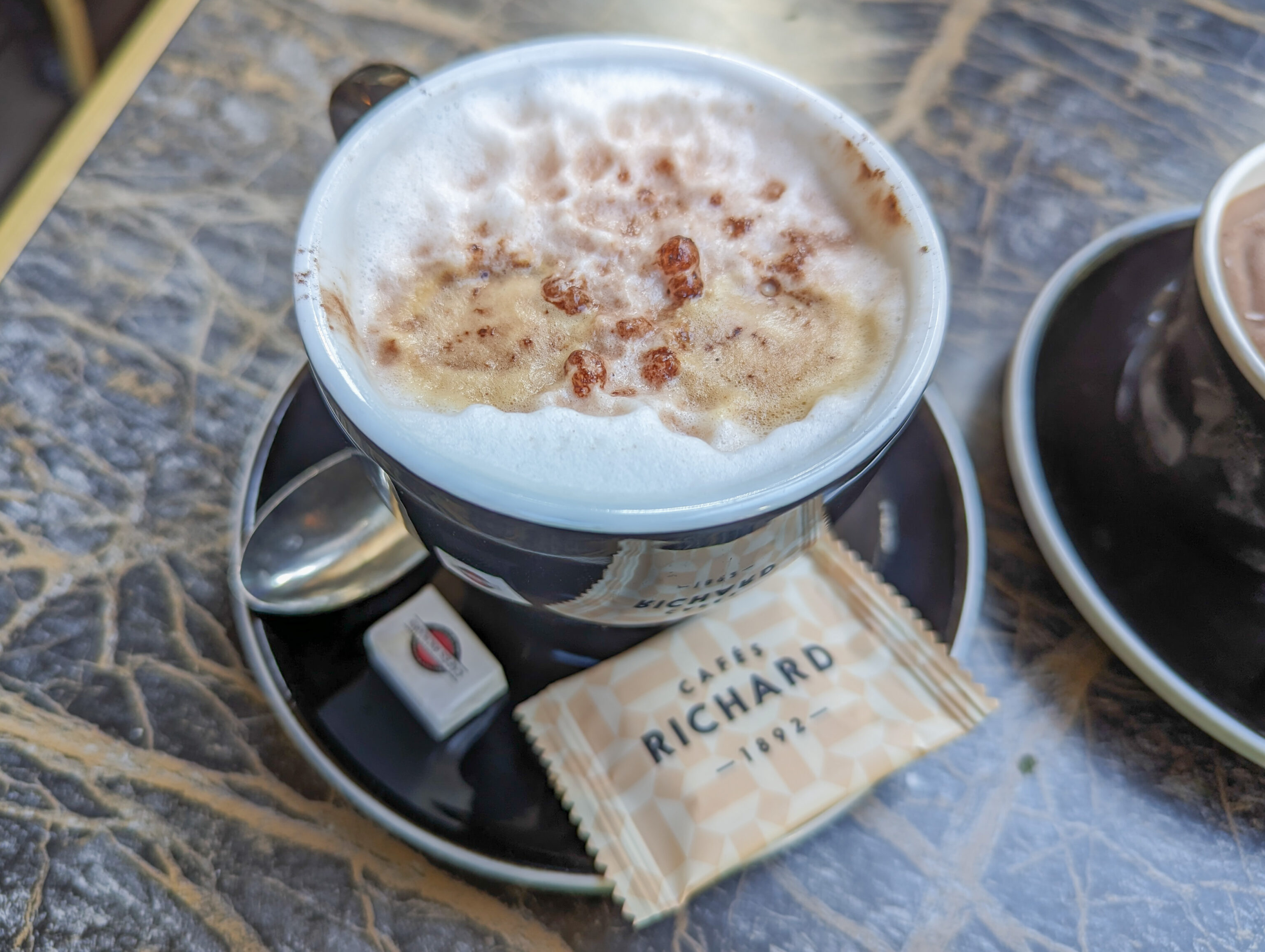
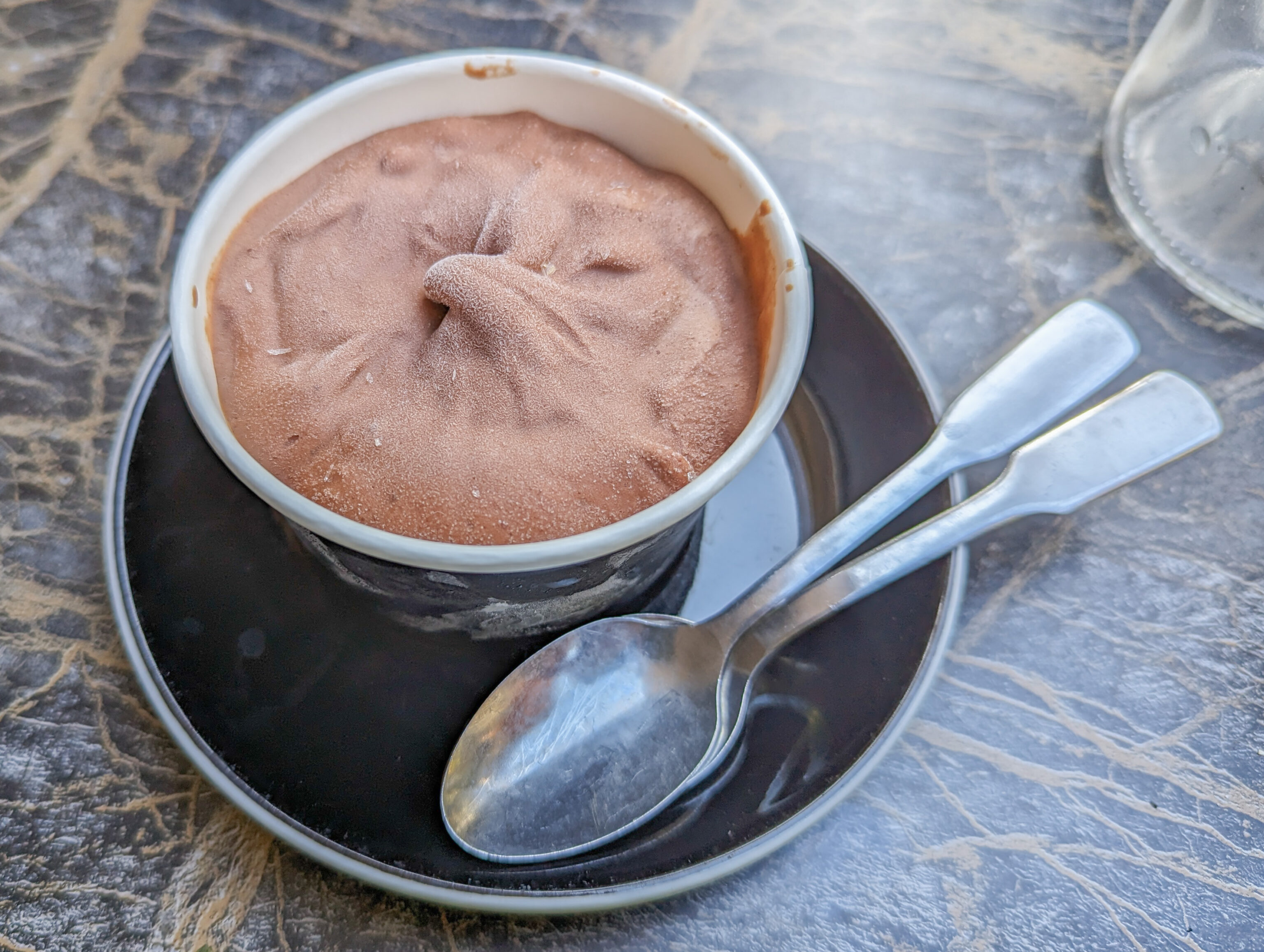
After our meal, we ordered a cappuccino and dark chocolate ice cream. The ice cream was over frozen as it was quite hard. It probably would have been better if it was stored at the proper temperature to ensure the proper texture and consistency.
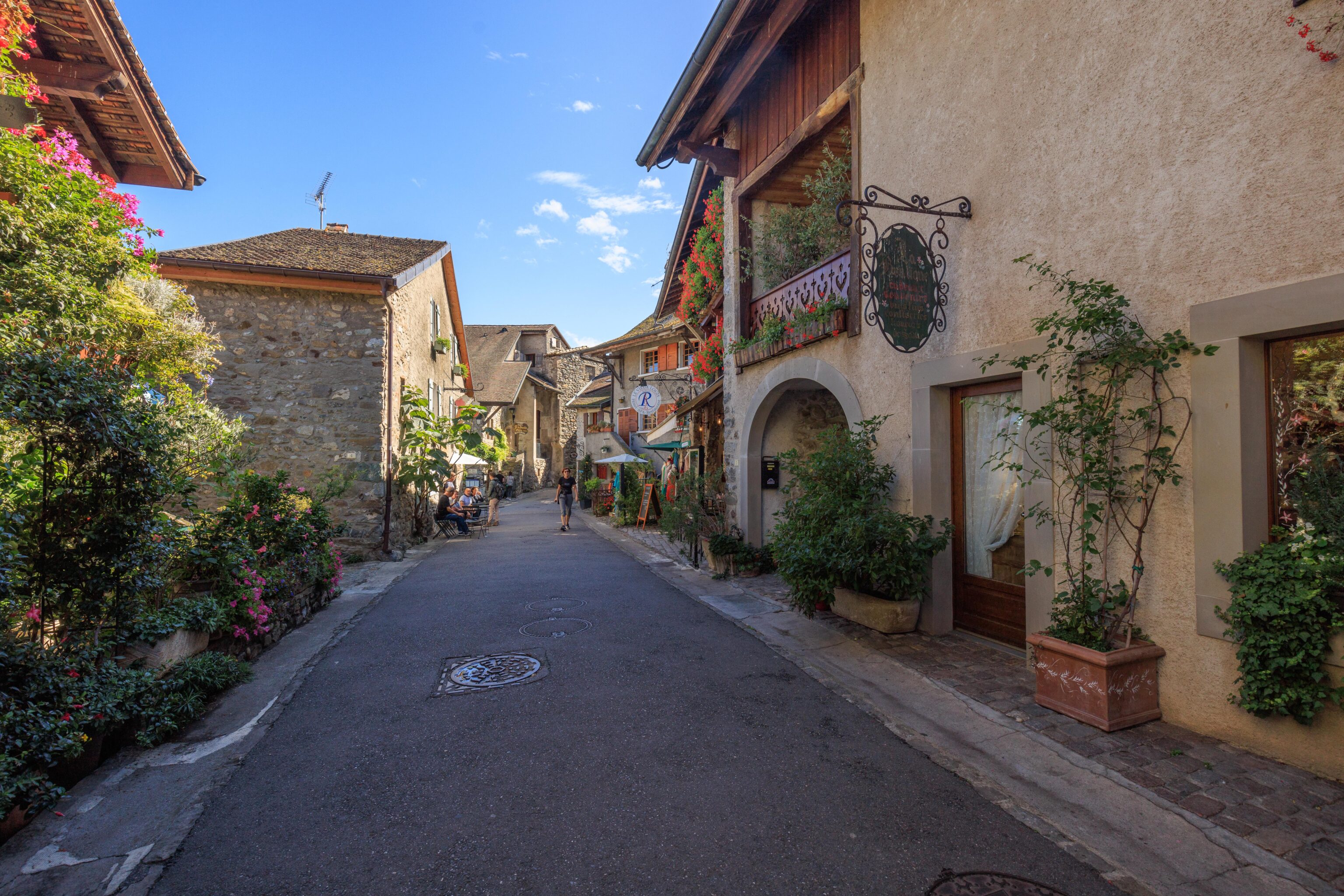
After eating, we continued walking around the village.
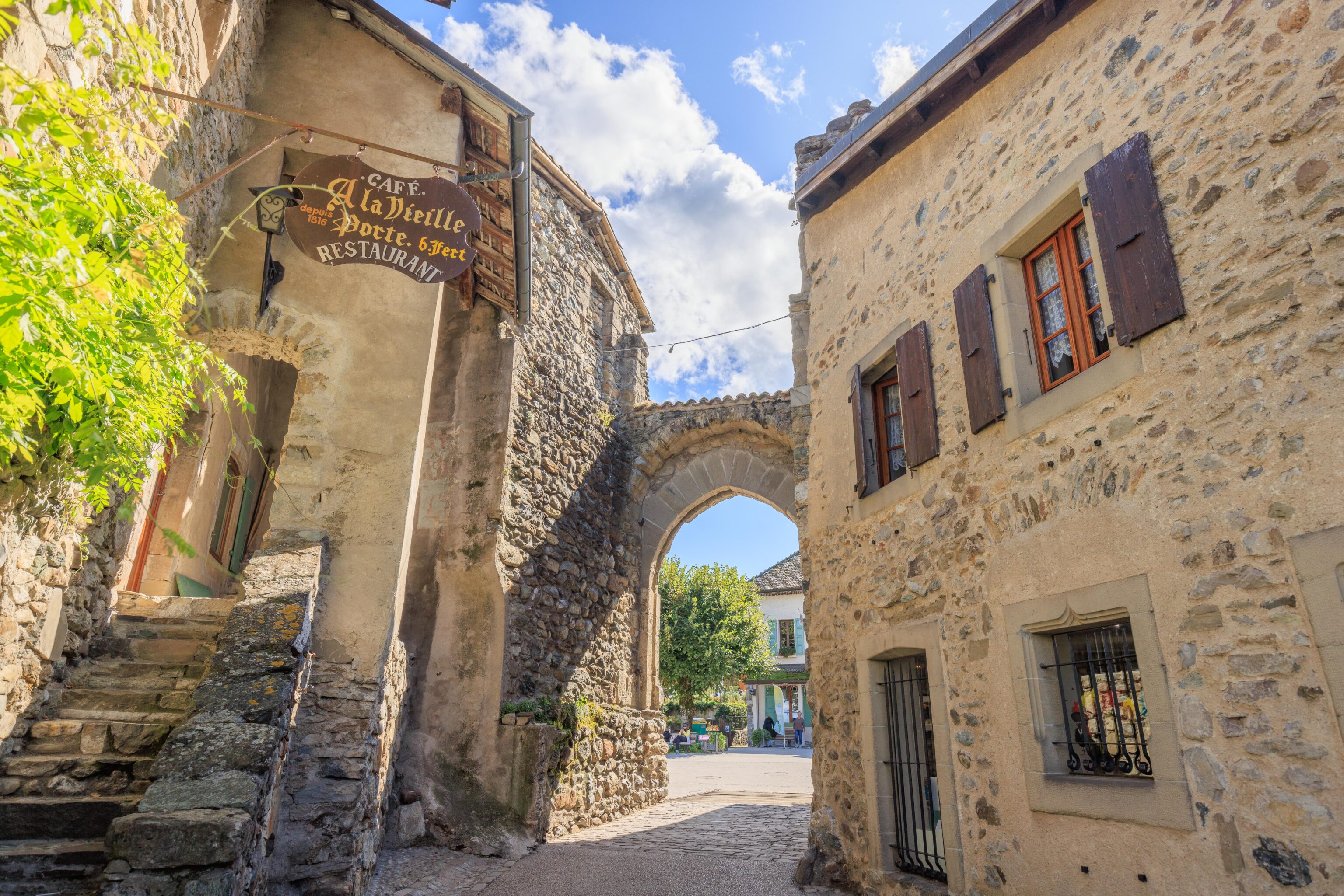
Another gate into the village. We didn’t venture outside.
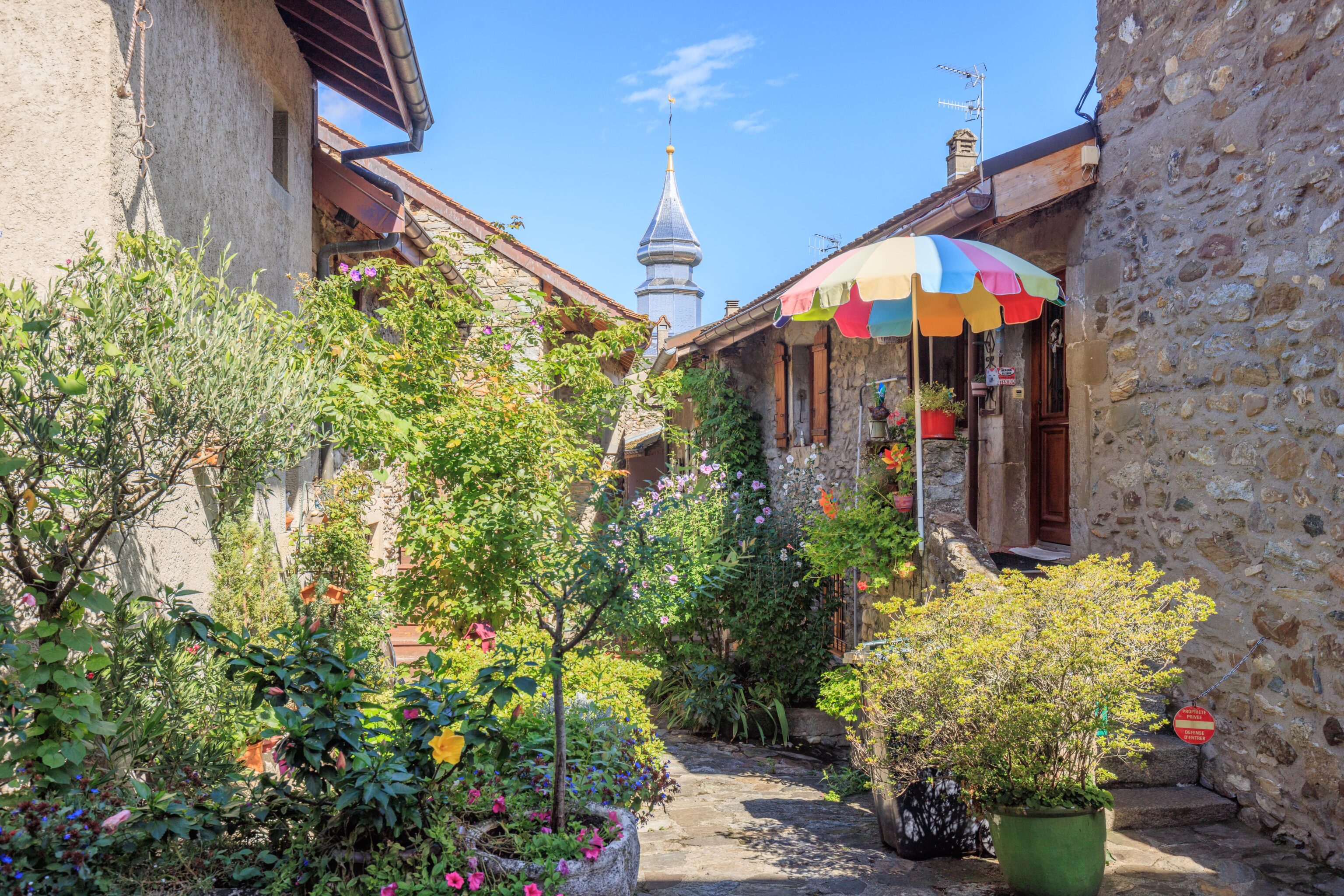
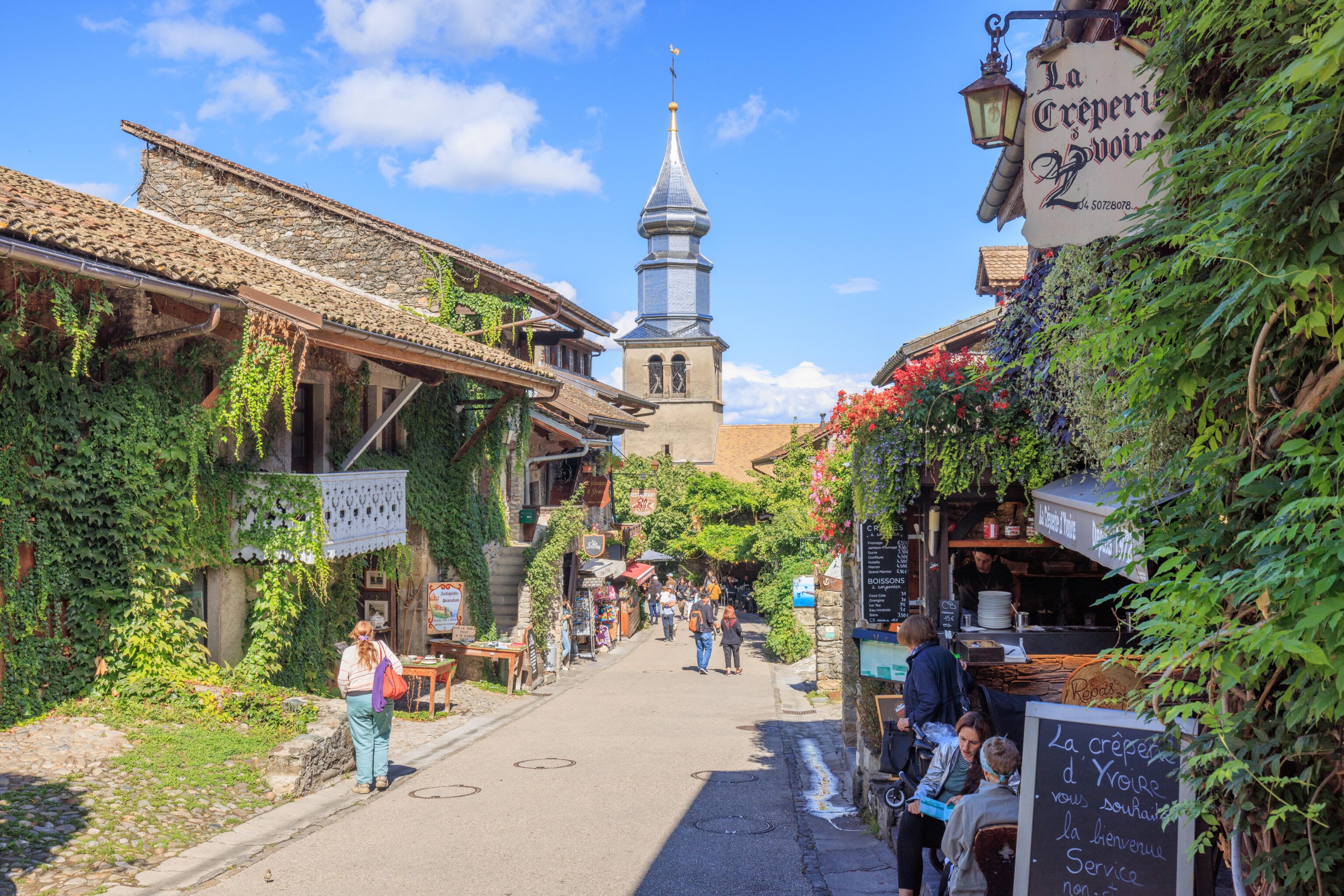
This church, the Église Saint Pancrace d’Yvoire, had an interesting spire.
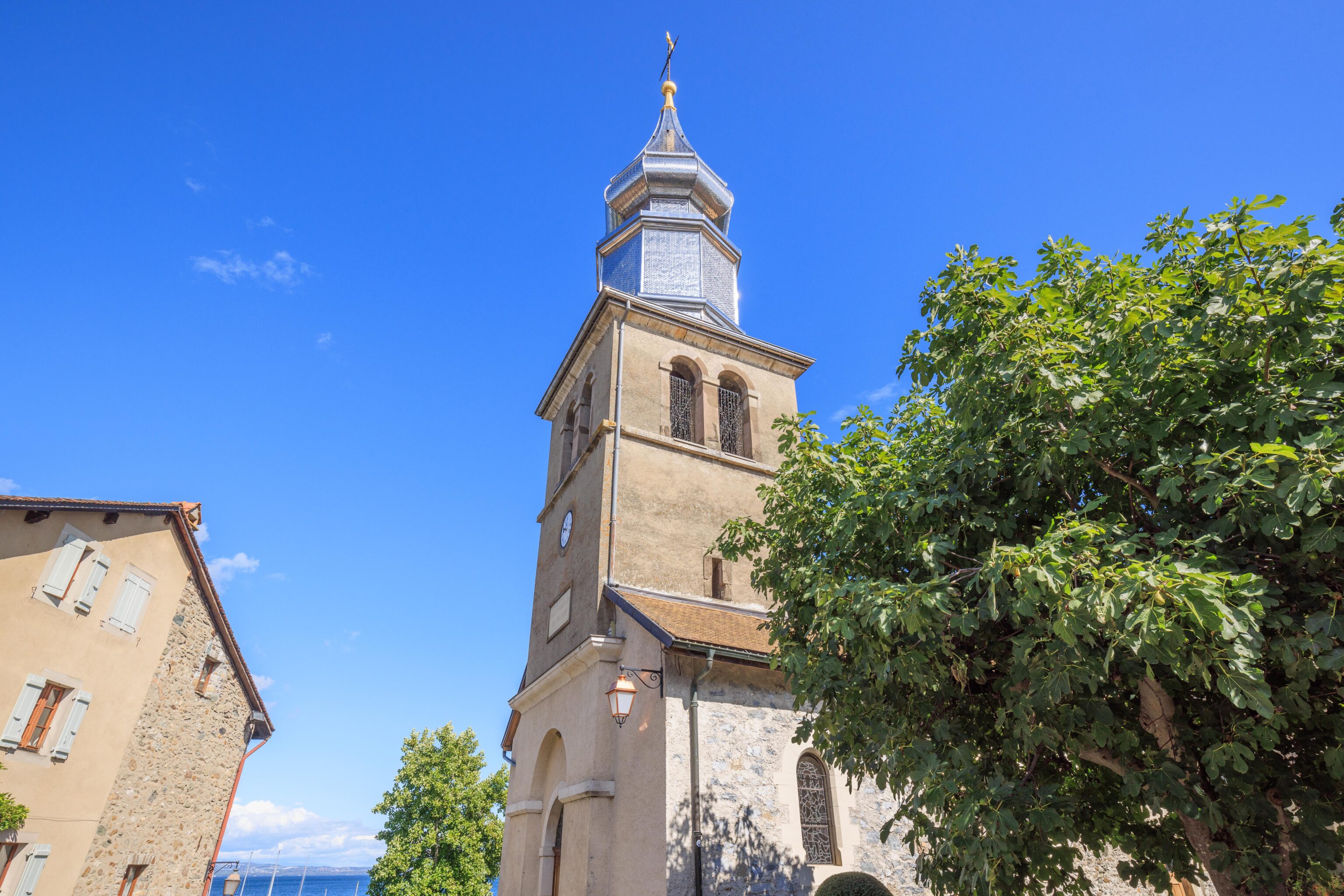
We decided to go and take a look at this little church. A sign outside the church reads:
Belonging to Filly Abbey and mentioned in a papal bull of 1250, the Church of Yvoire was built where there had already been a place of worship and was extended over the centuries. The last extension concerned the construction of the onion-shaped bell tower. Initially covered with tin, the tower today is in stainless steel. The ball and cock ad the summit are gilded with gold leaf. The last restoration works on the church were completed in 2012 and revealed a tabernacle dating from the 15h century, with a liturgical "pool" and very ancient paintings.
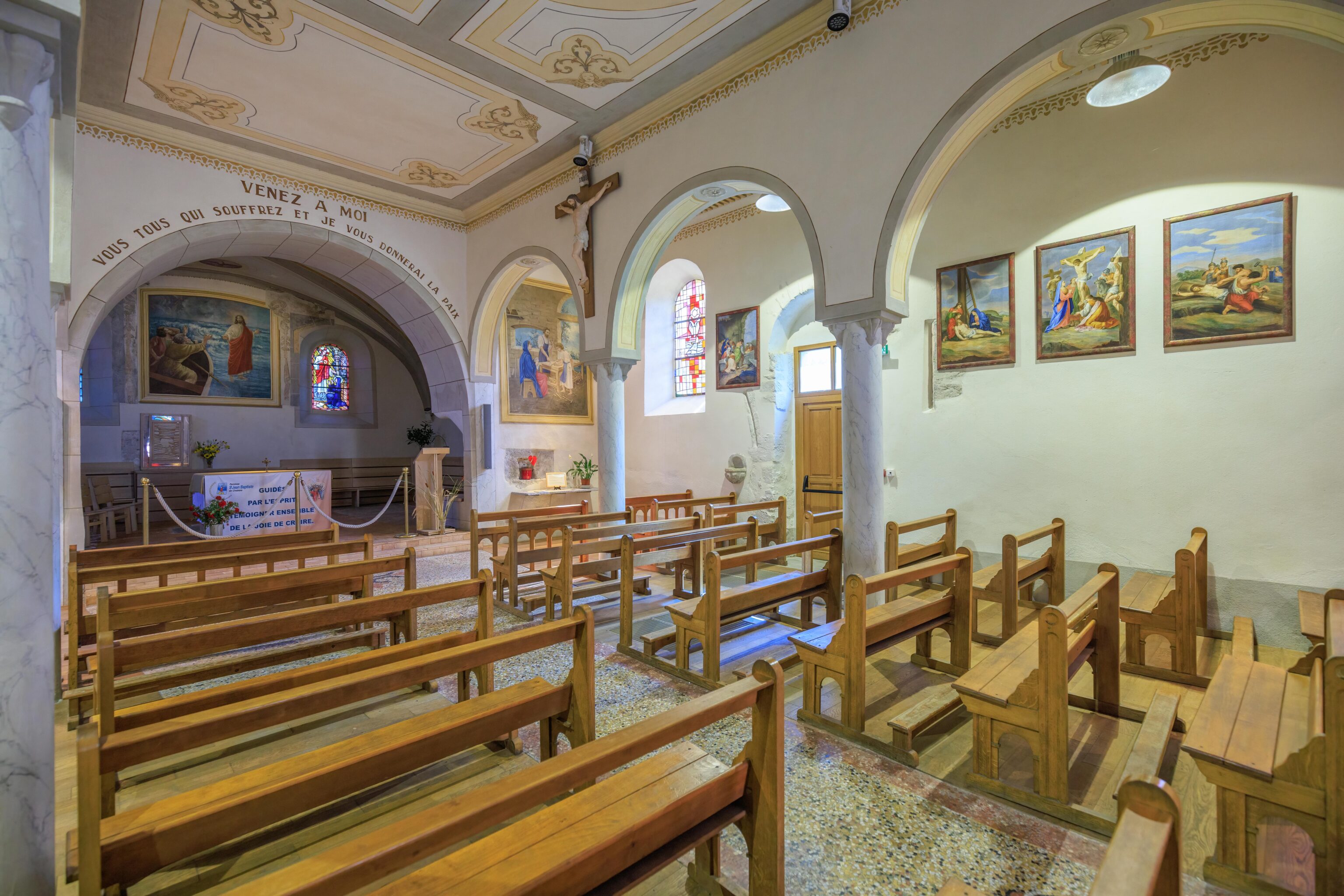
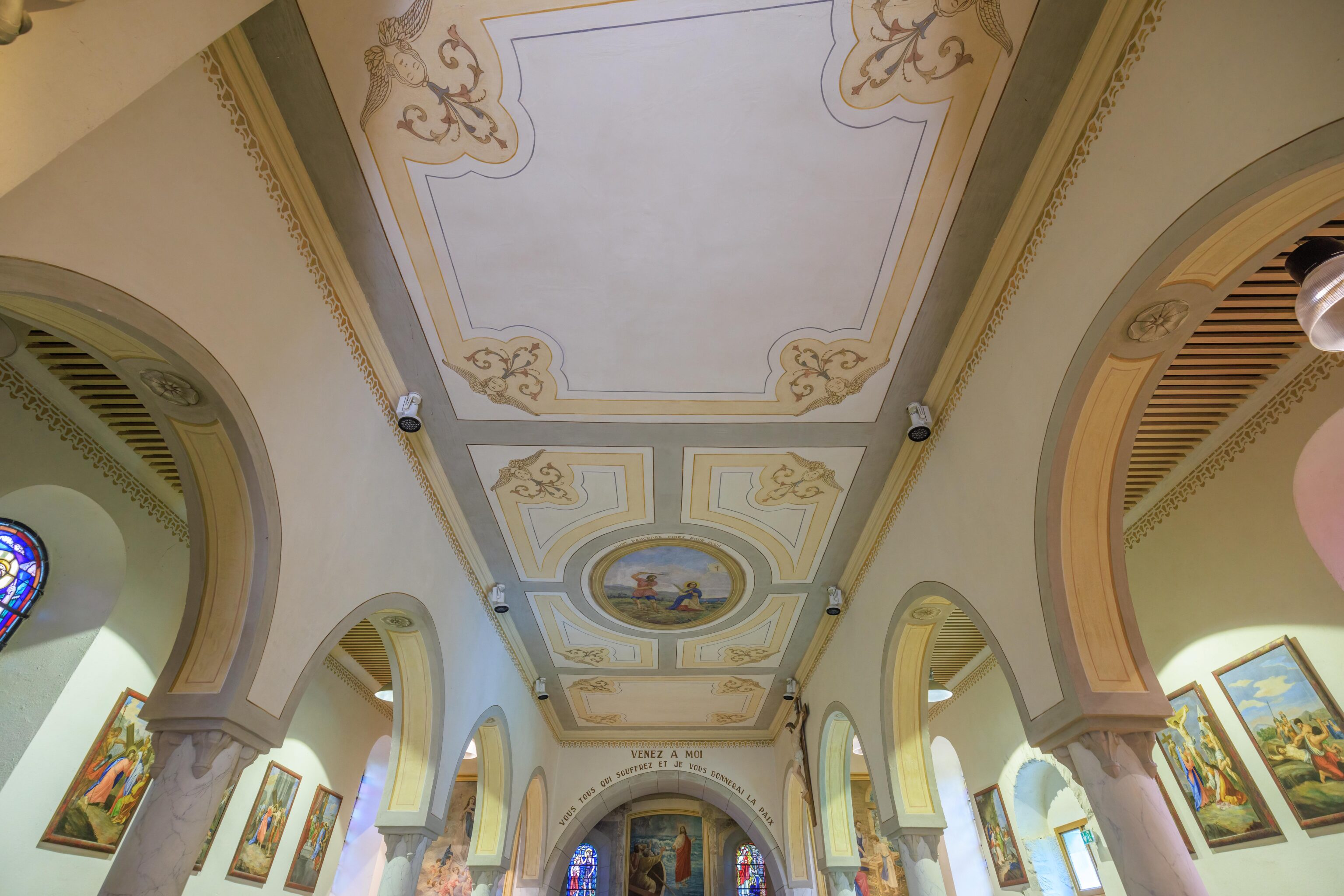
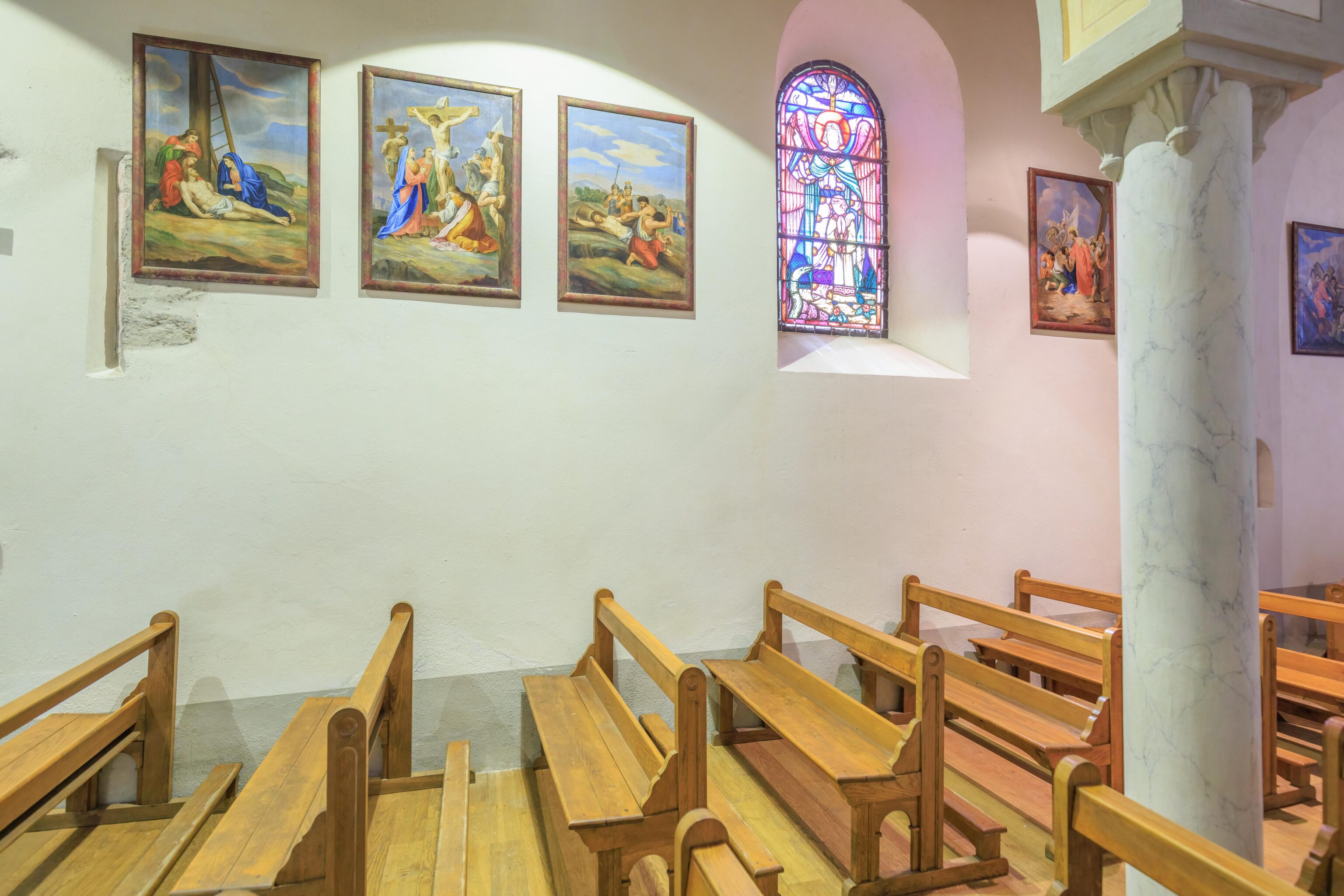
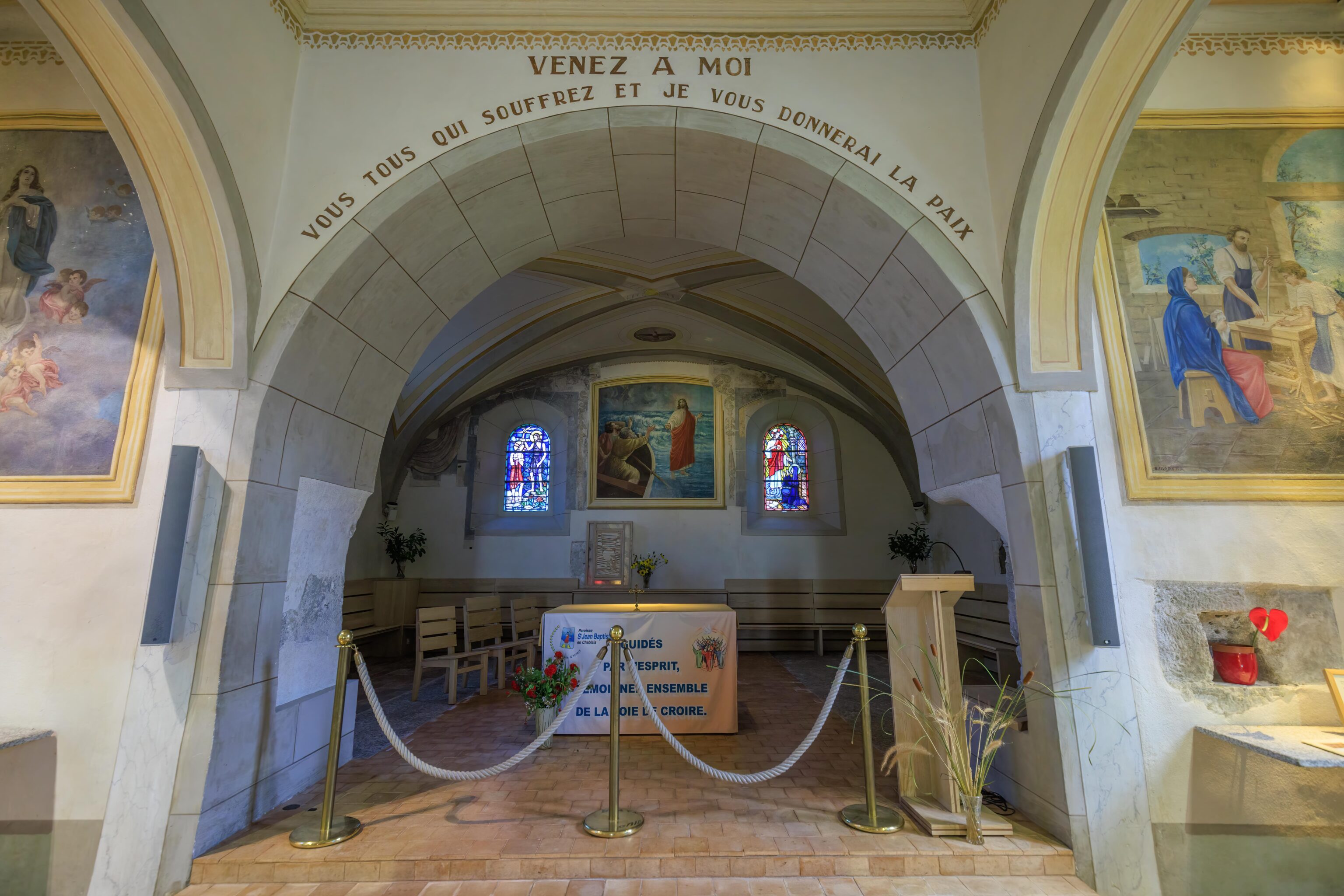
The church is pretty small inside and plainly decorated.
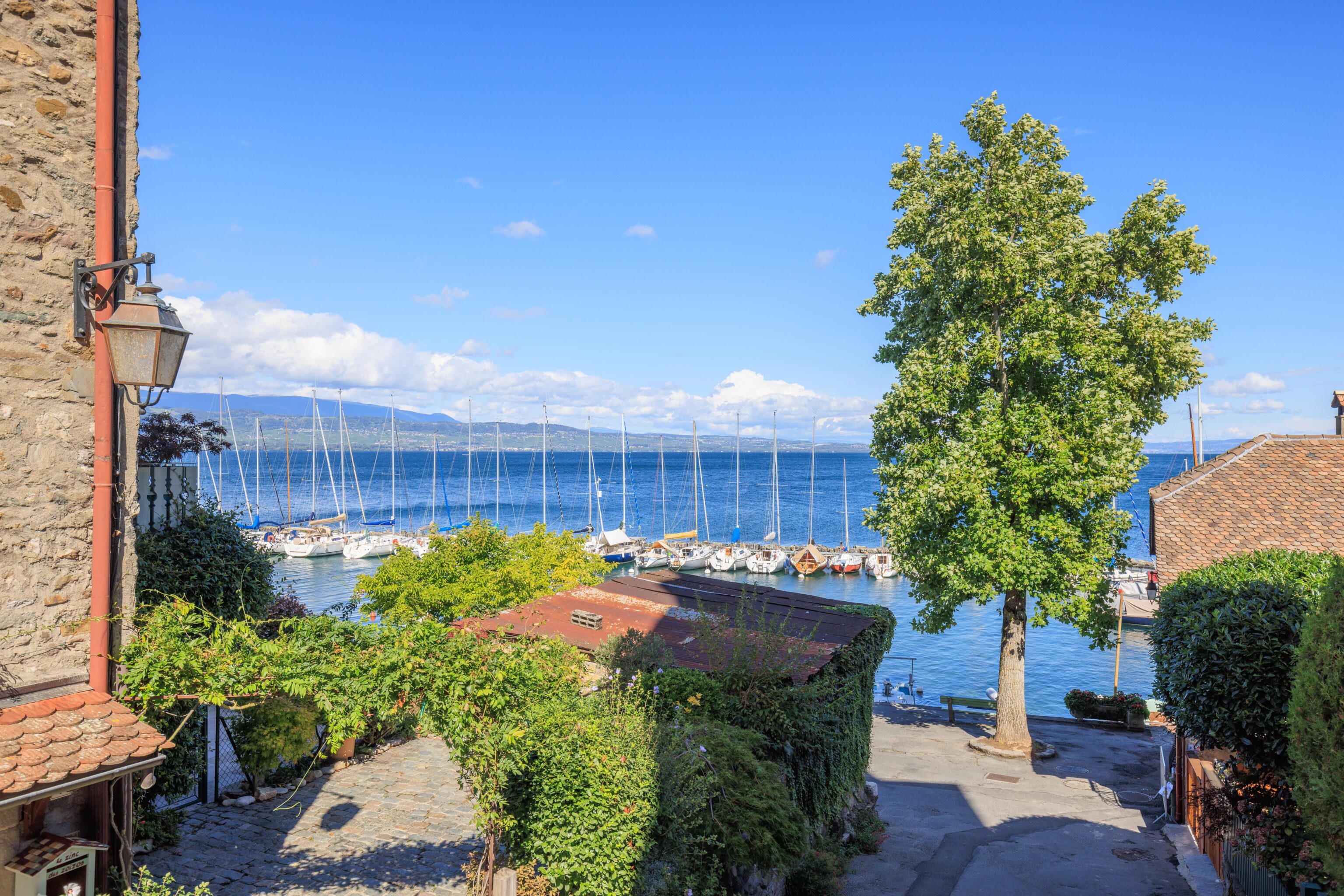
There is a very pretty view by the church’s entrance.

Some of the chimneys look like little tiny houses.
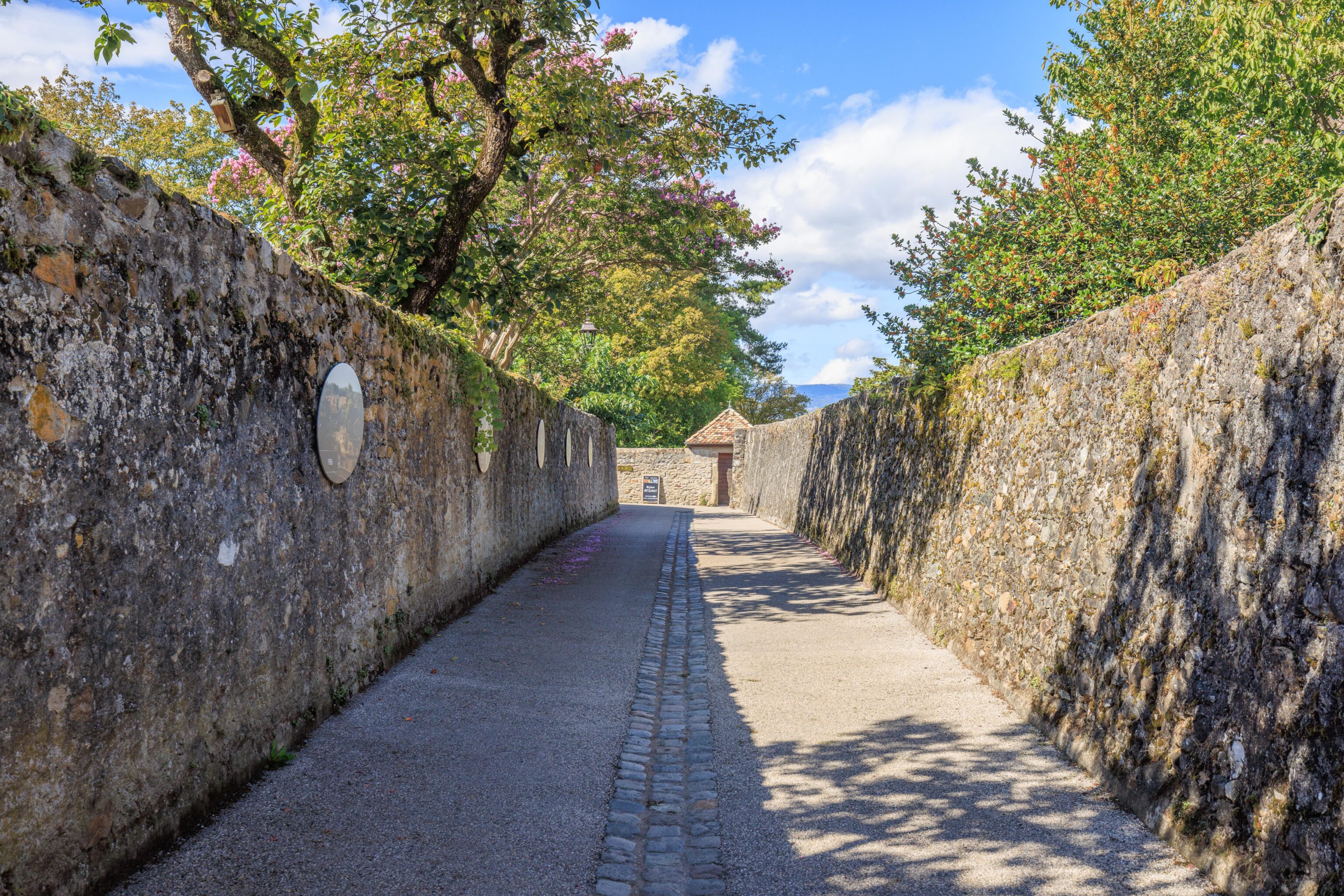
We continued walking around the village. We passed by the Jardin des Cinq Sens (Garden of Five Senses).
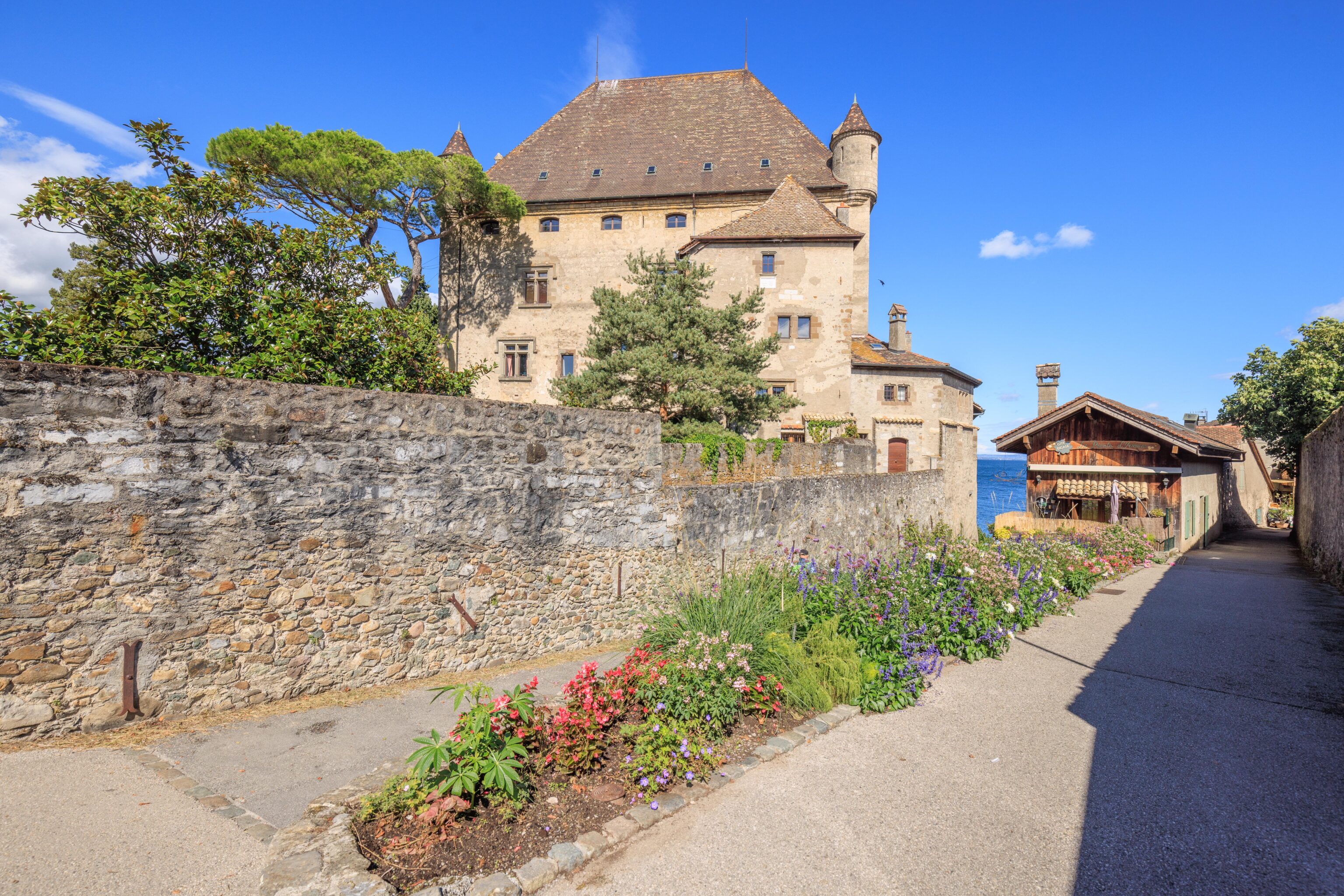
We passed by the castle again. At this point, we decided to catch the next boat across the lake to Nyon. It comes much more frequently than the boat to Geneva.
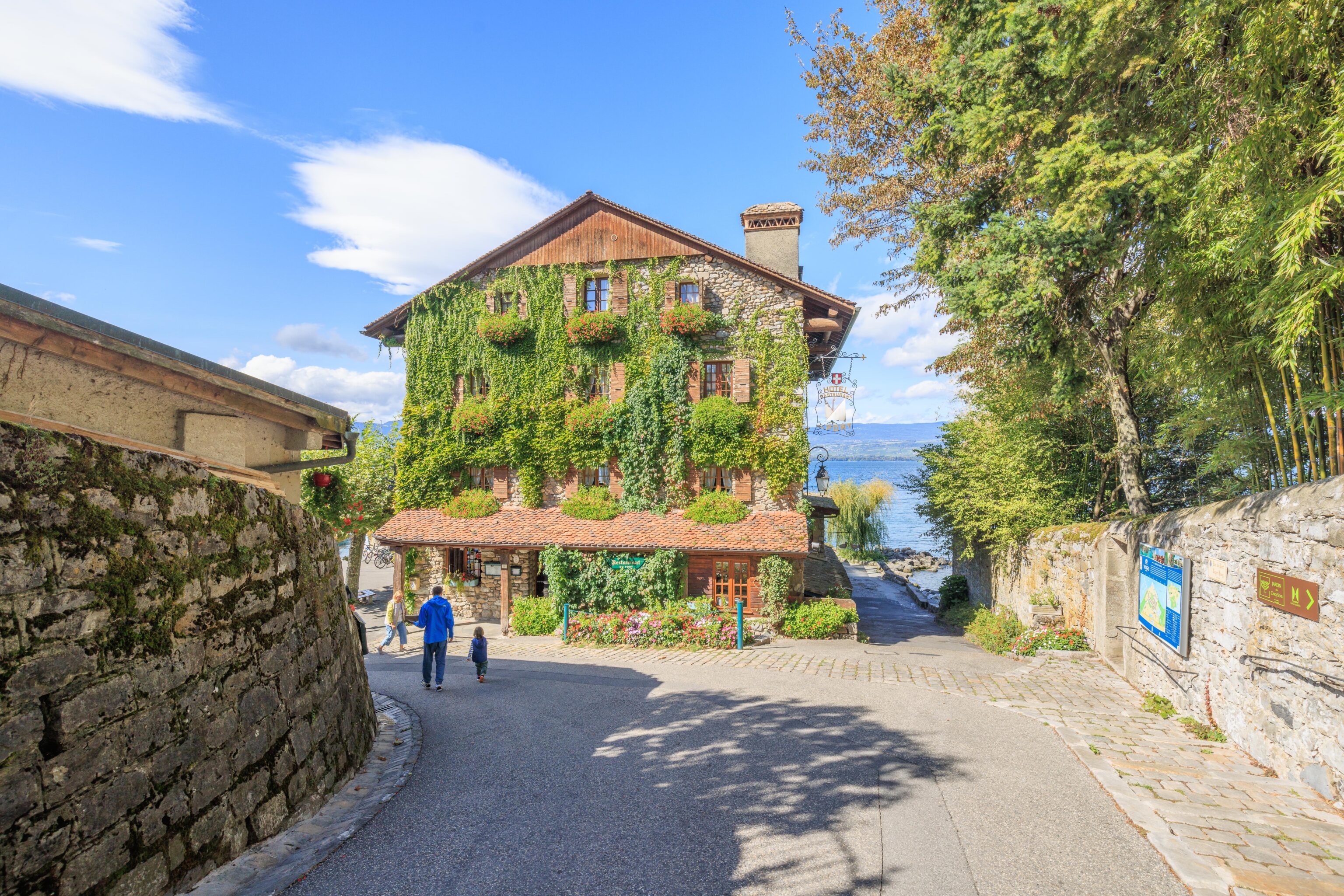
We walked back down the hill towards the pier. We passed by this vine covered building before but didn’t really notice it earlier.
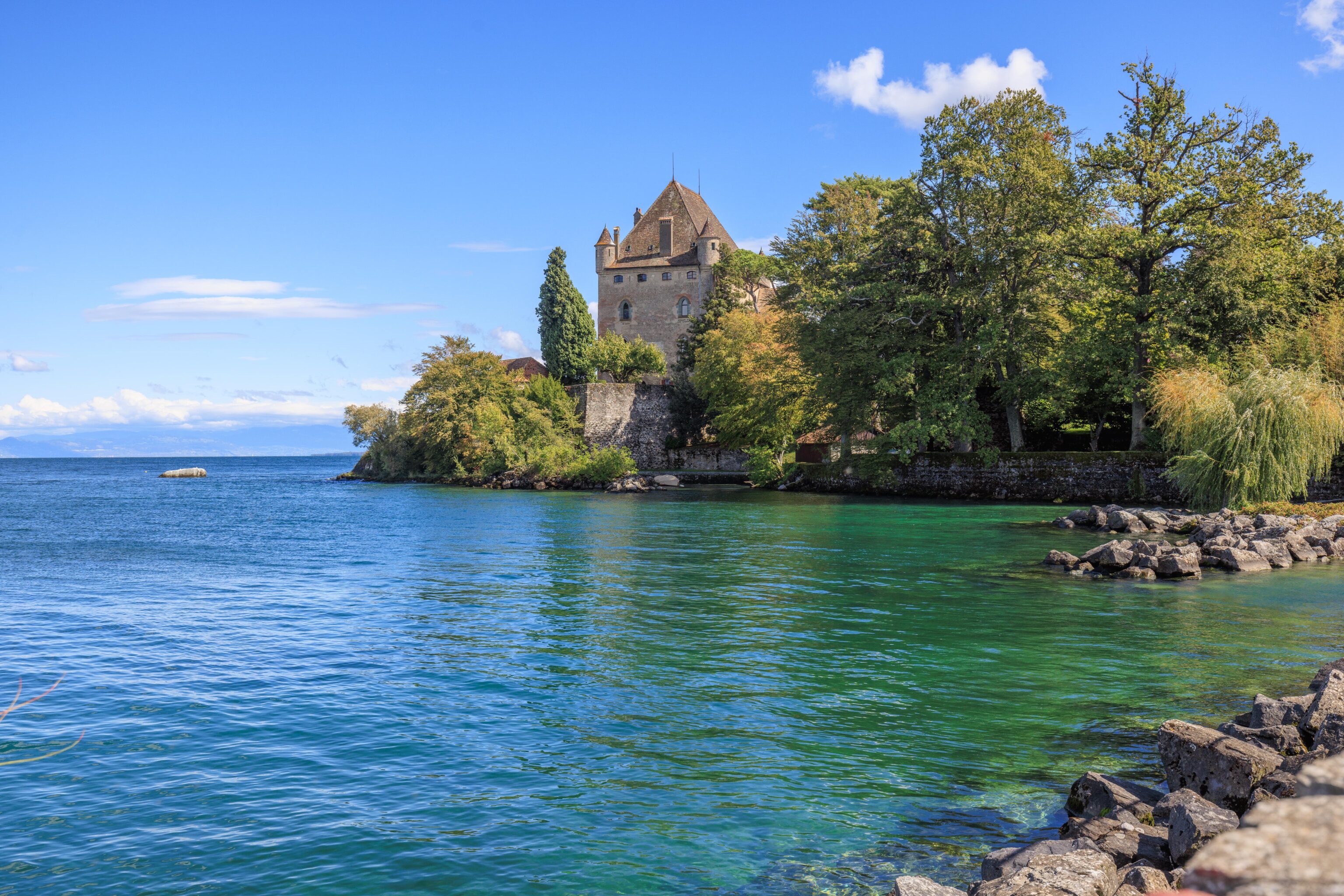
Back to the pier!
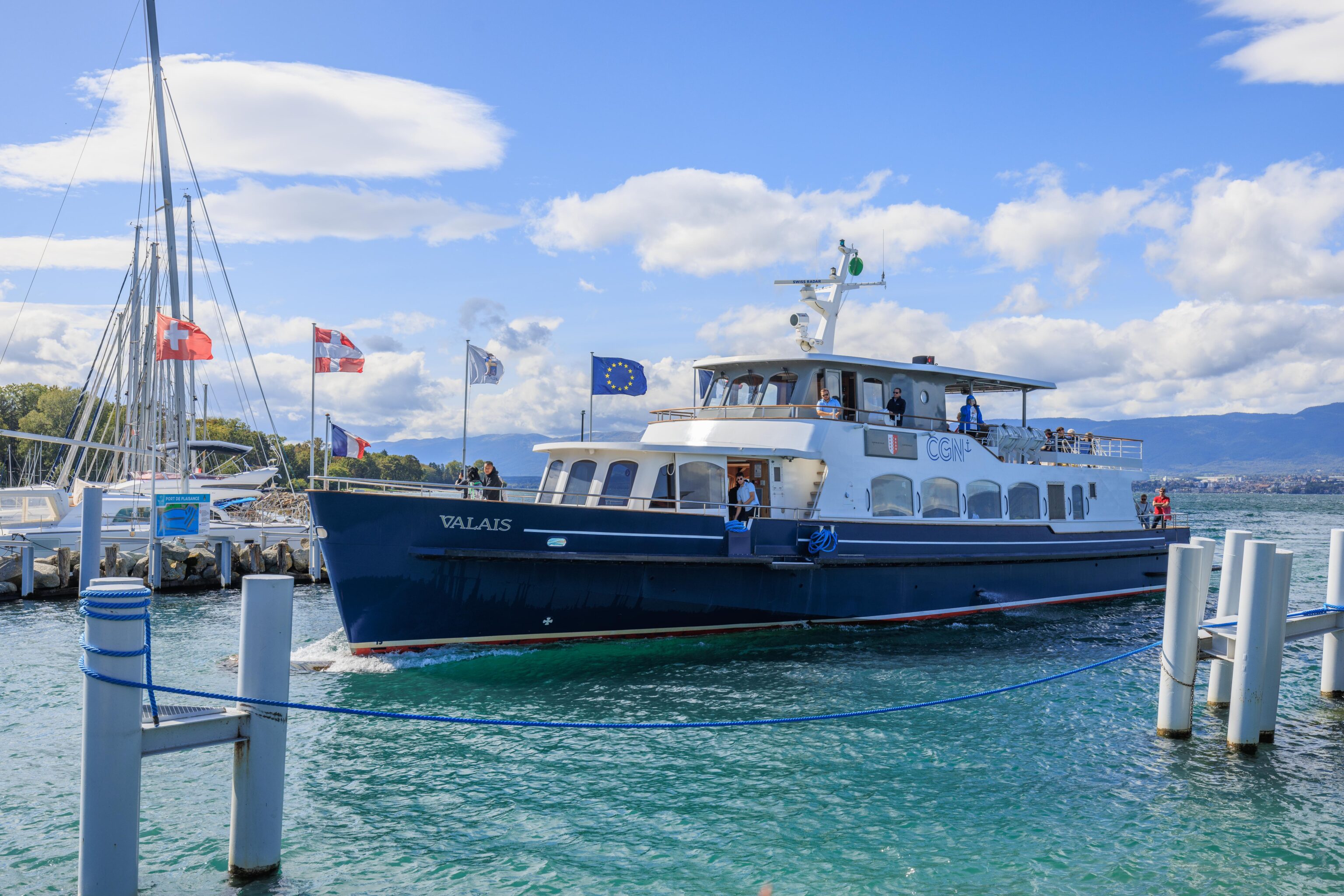
Soon, our boat arrived. It is a much smaller vessel named the Valais, one of the mountainous cantons of Switzerland which has a small section near the southeastern corner of Lac Léman. We spent some time in Valais at Zermatt, Aletsch Arena, as well as the lake town of St Gingolph at the Swiss border with France.
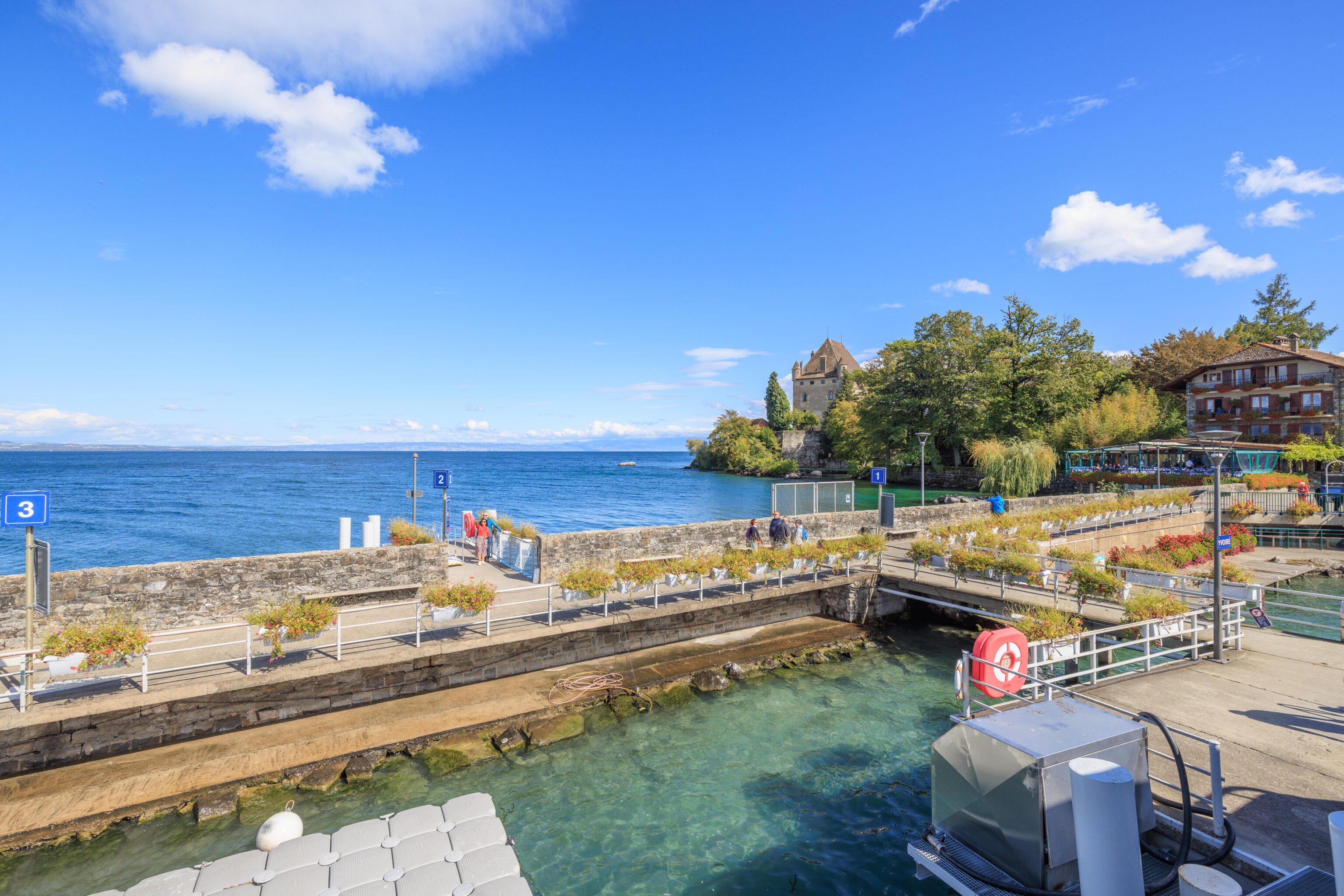
We waited a bit on the boat as it wasn’t the scheduled departure time yet.
Nyon
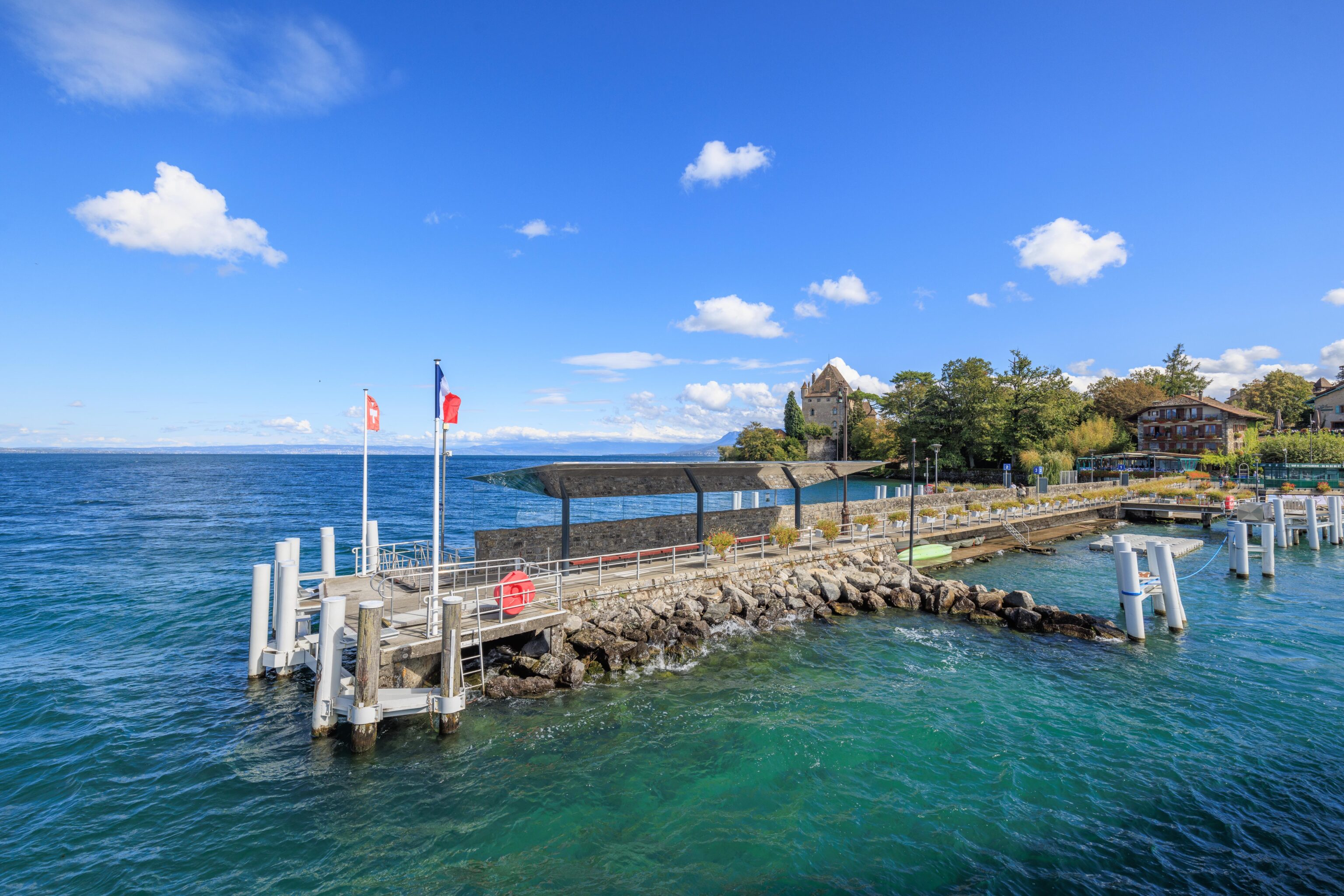
Finally, we were on our way! We passed by a very modern covered waiting area at the very end of the pier.
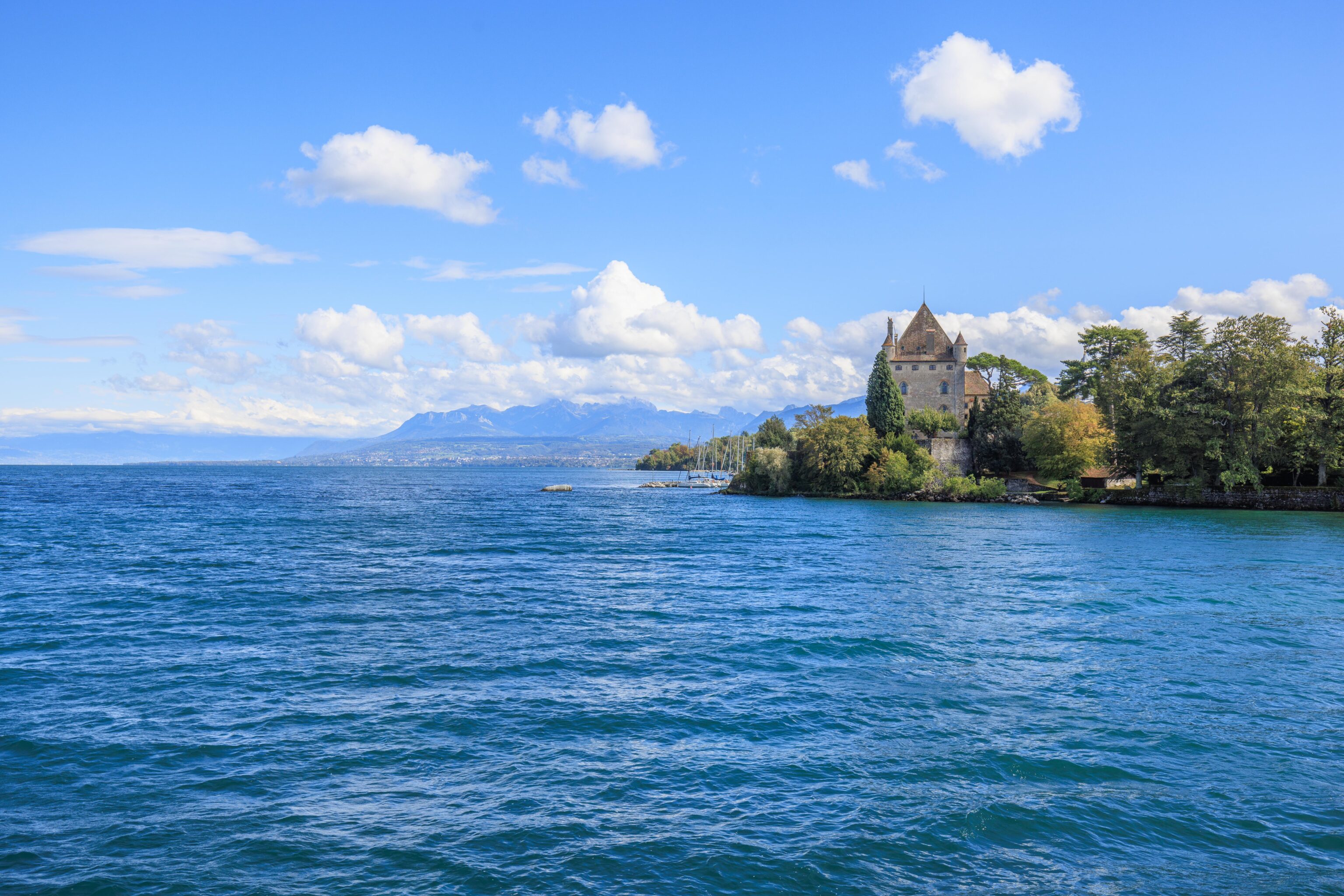
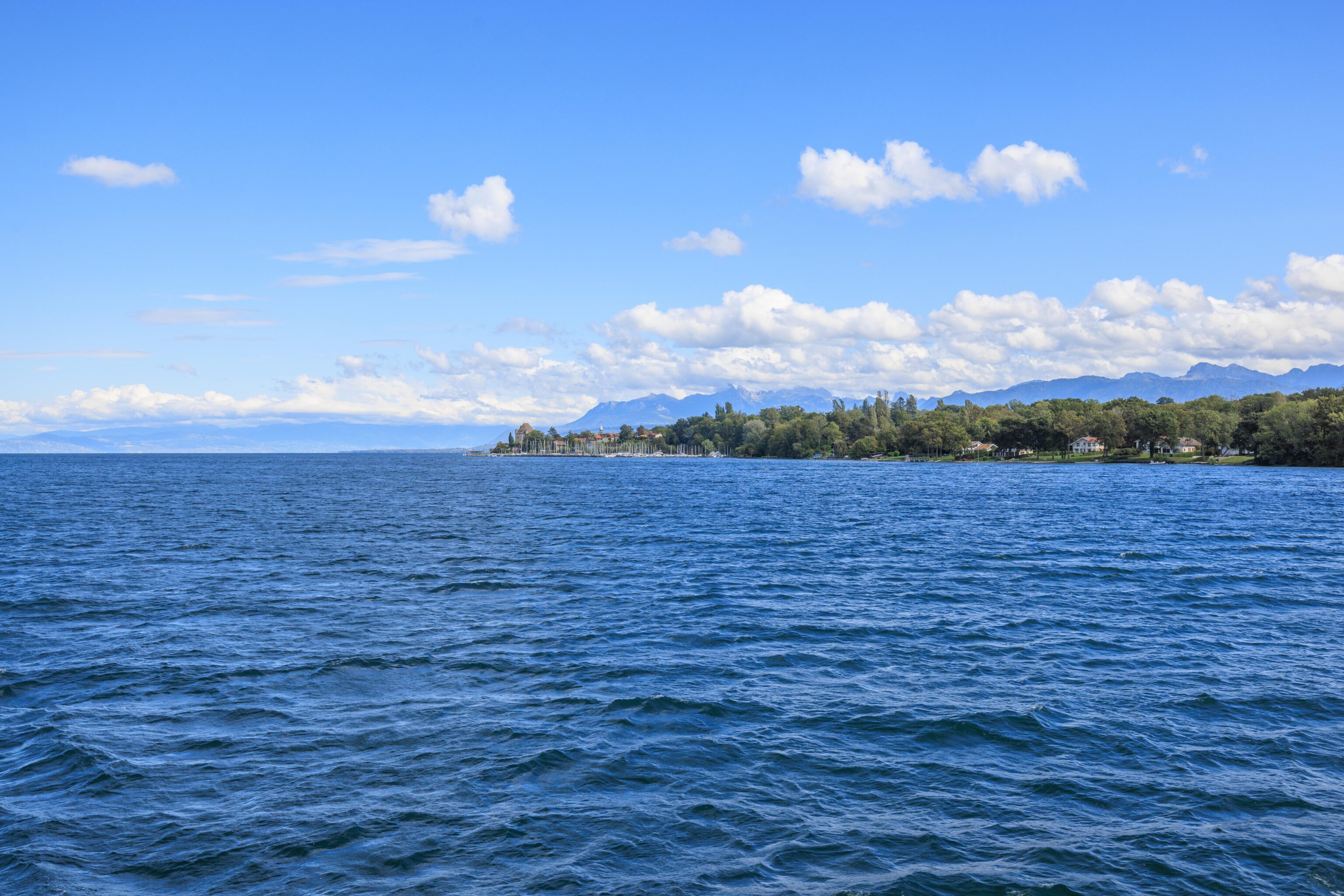
Yvoire quickly fell into the distance as we headed away.
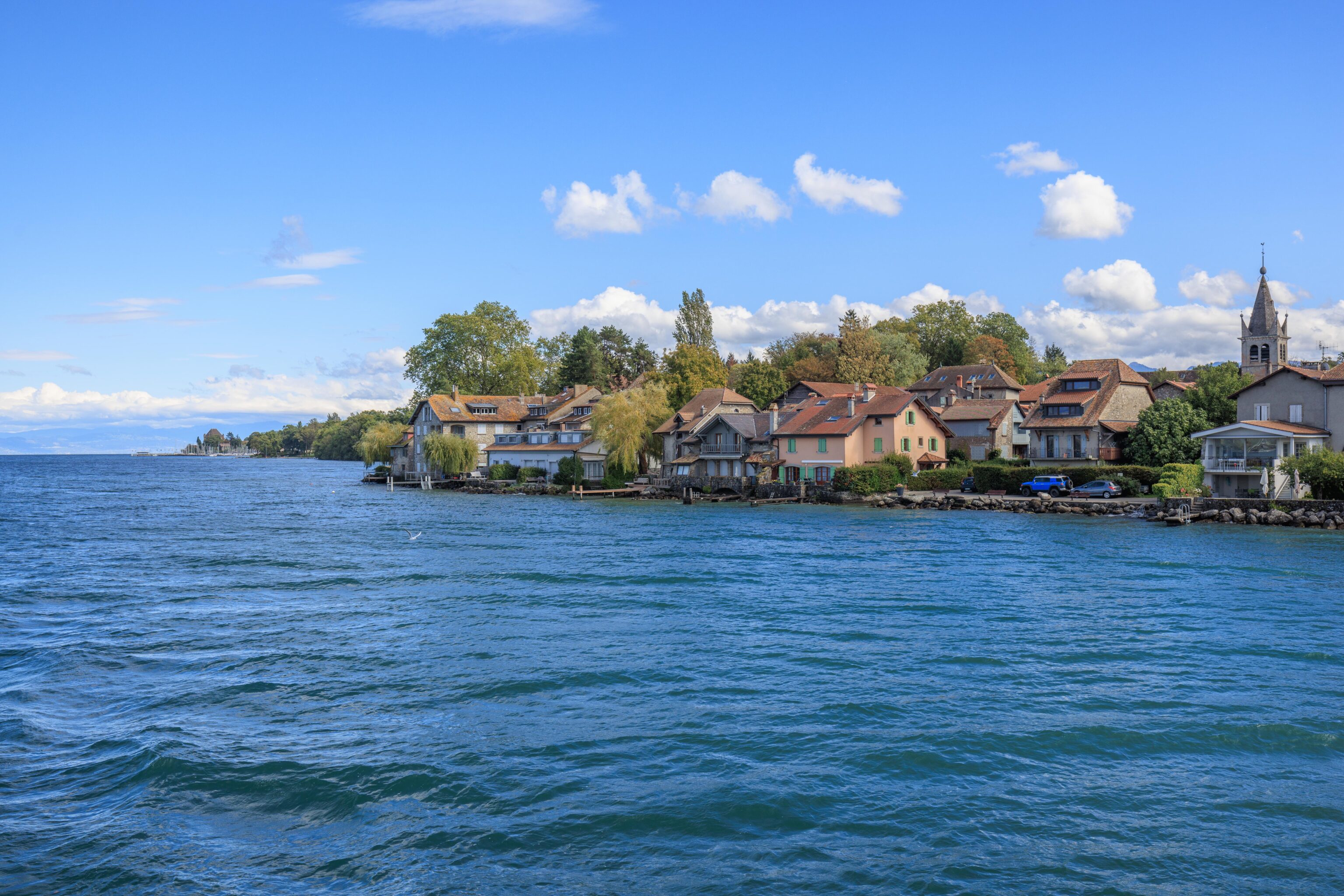
There was just one intermediate stop on the way to Nyon at the French town of Nernier, just to the west of Yvoire.
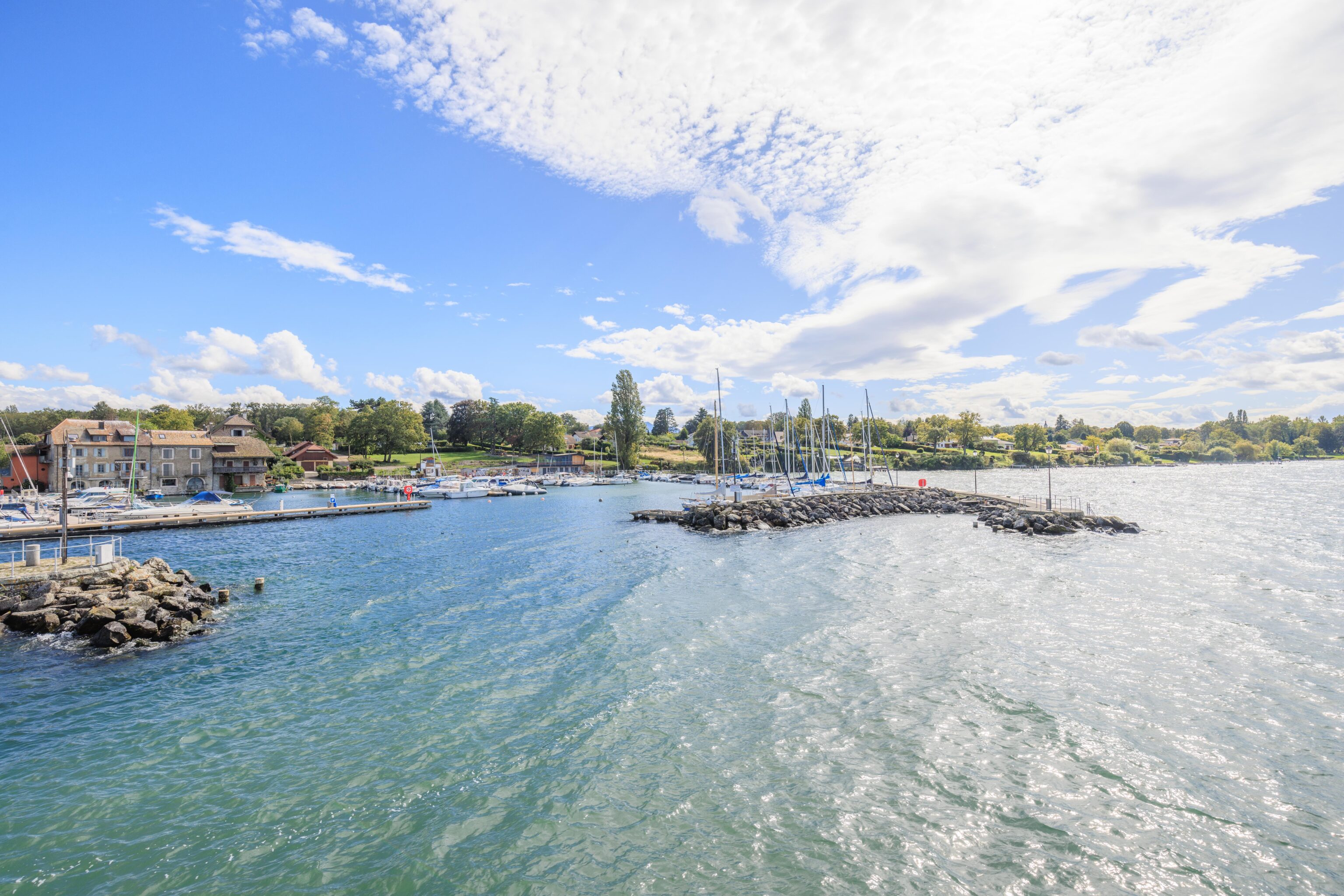
There was a marina right by the pier.
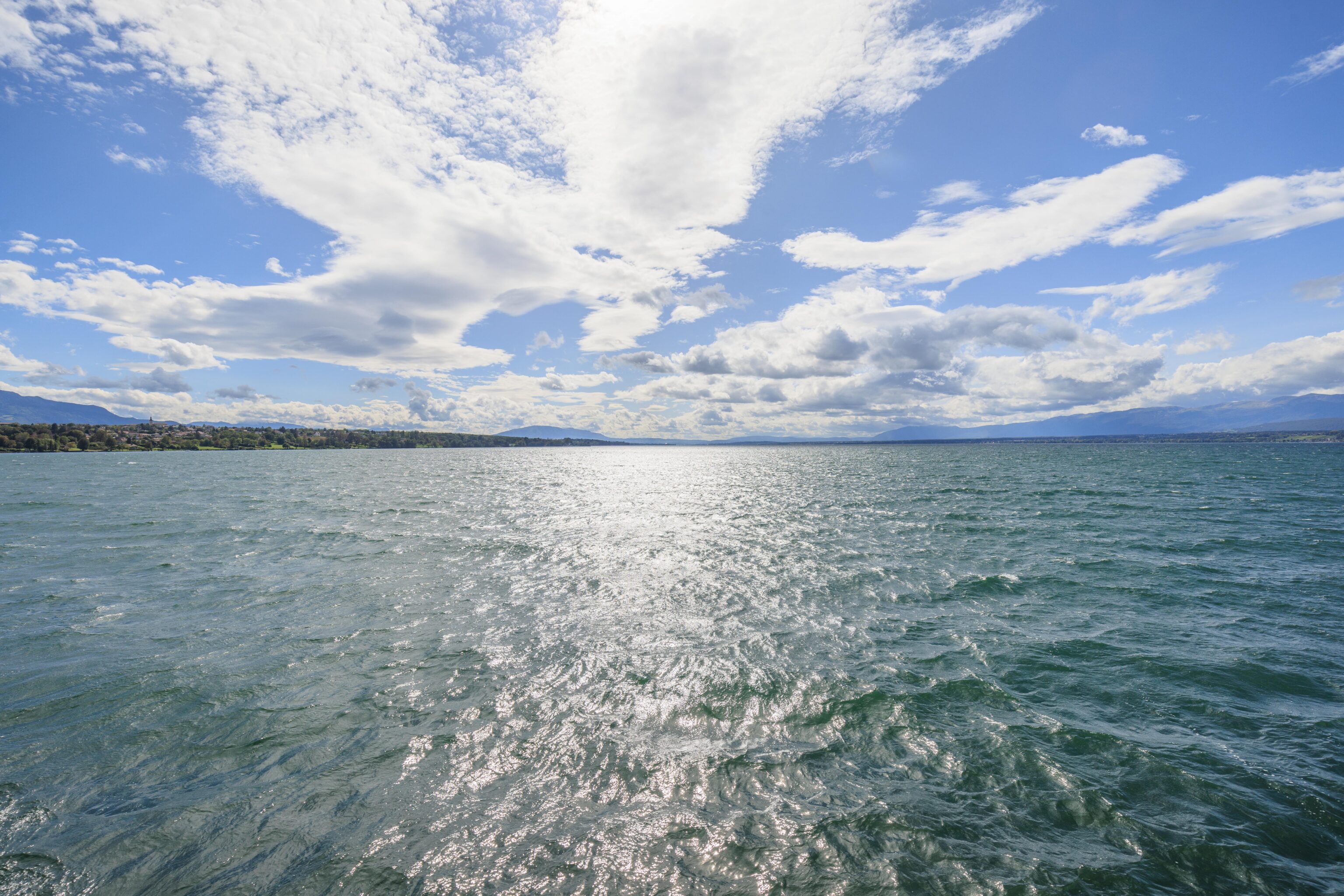
The boat headed across the lake to Nyon. We could still see the Jet d’Eau on the horizon, though it looks absolutely tiny without the aid of a telephoto lens.
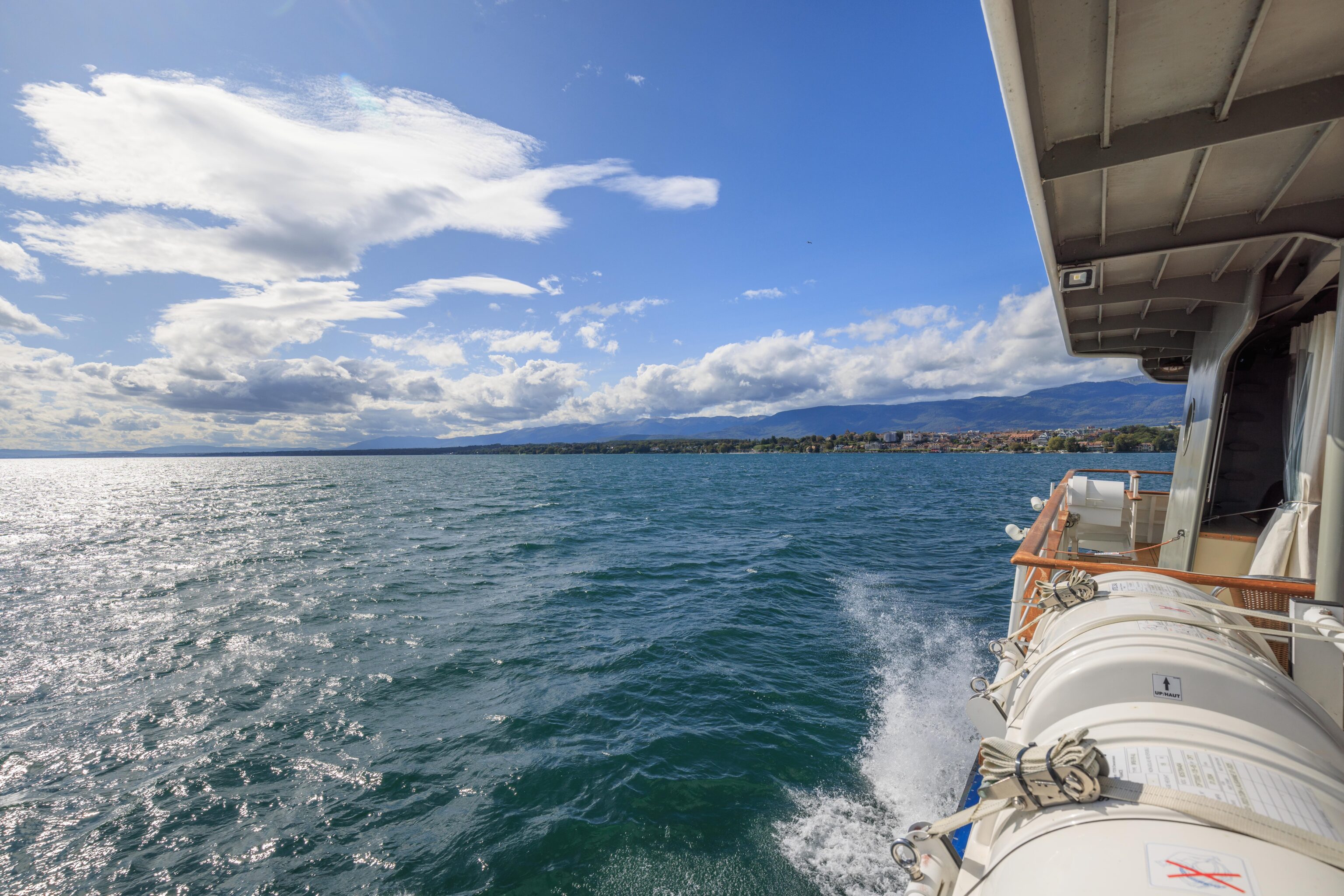
We could see Nyon in front of us as we sped towards the town.
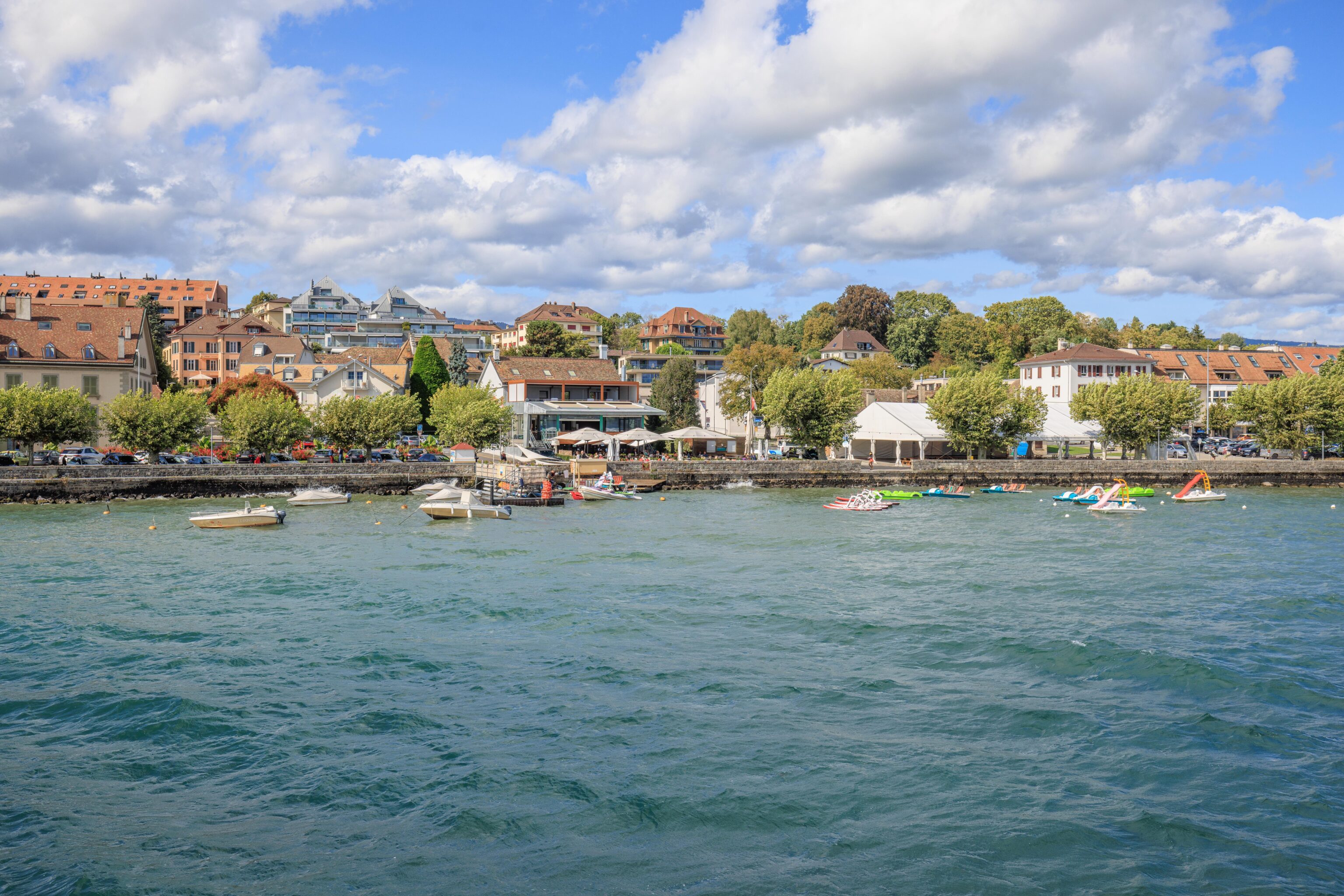
Almost there! We noticed some interesting little boats, including ones that had slides leading into the water.
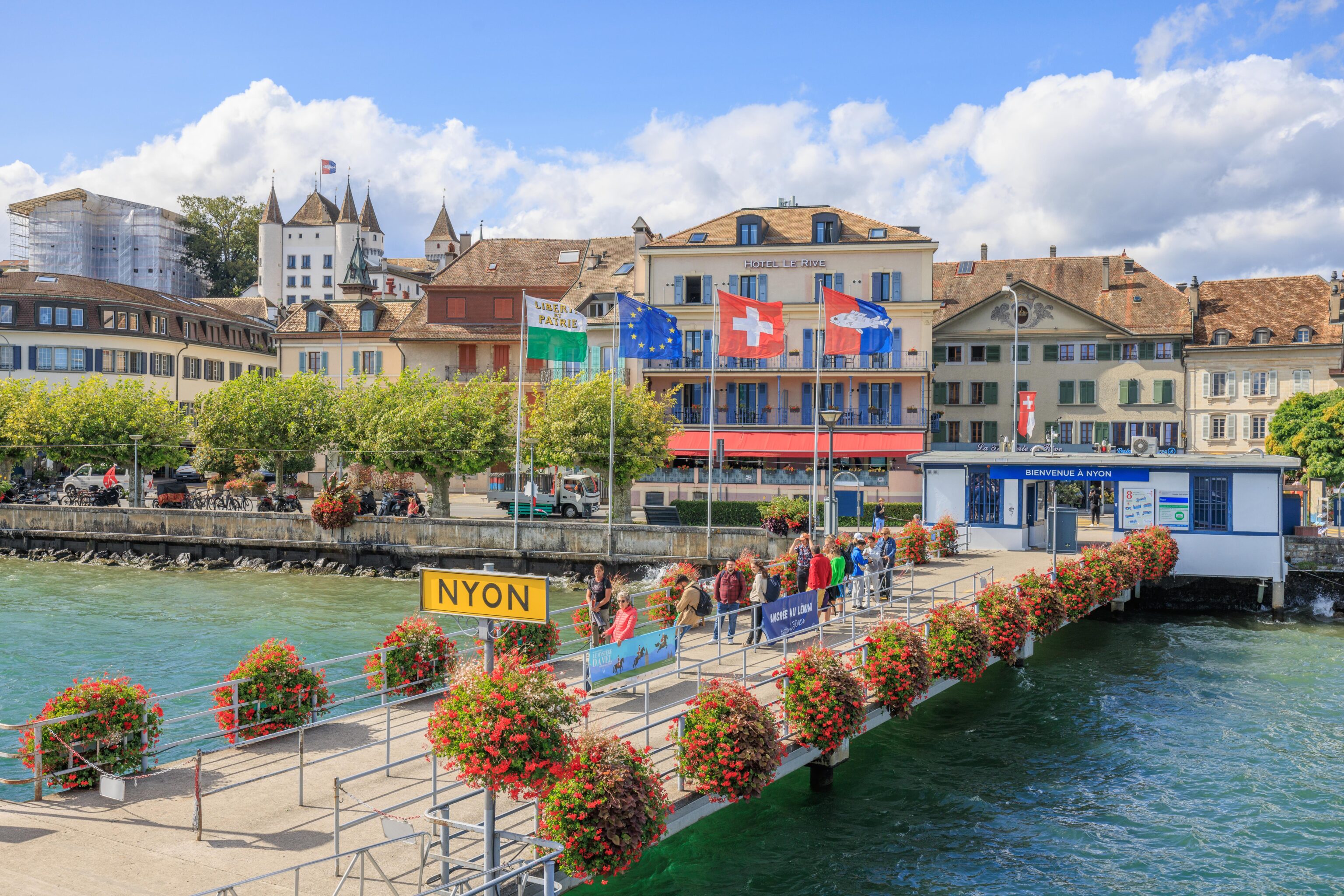
A nice view of the town as we arrived at the pier.
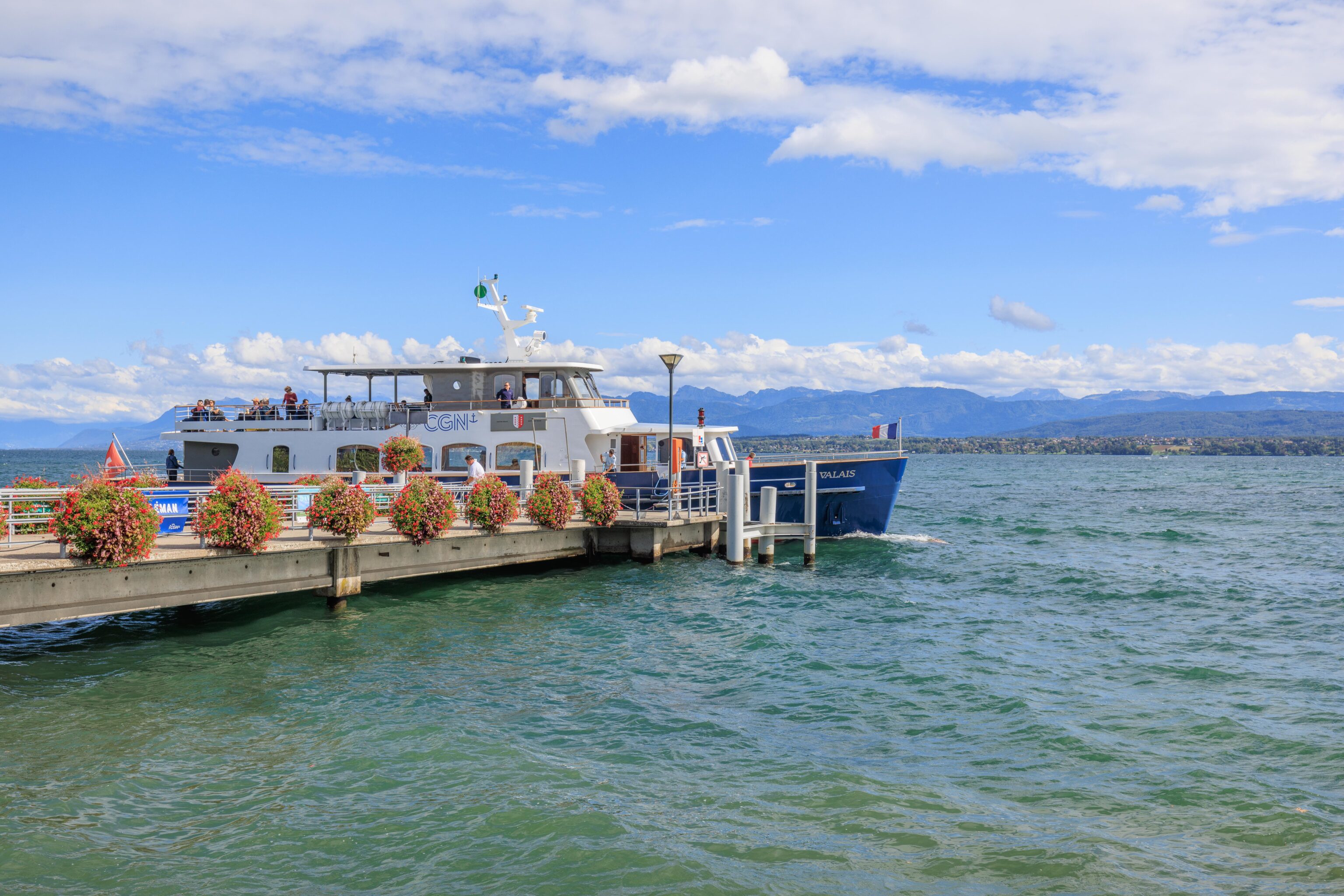
We decided to walk to the west along the lakefront after disembarking.
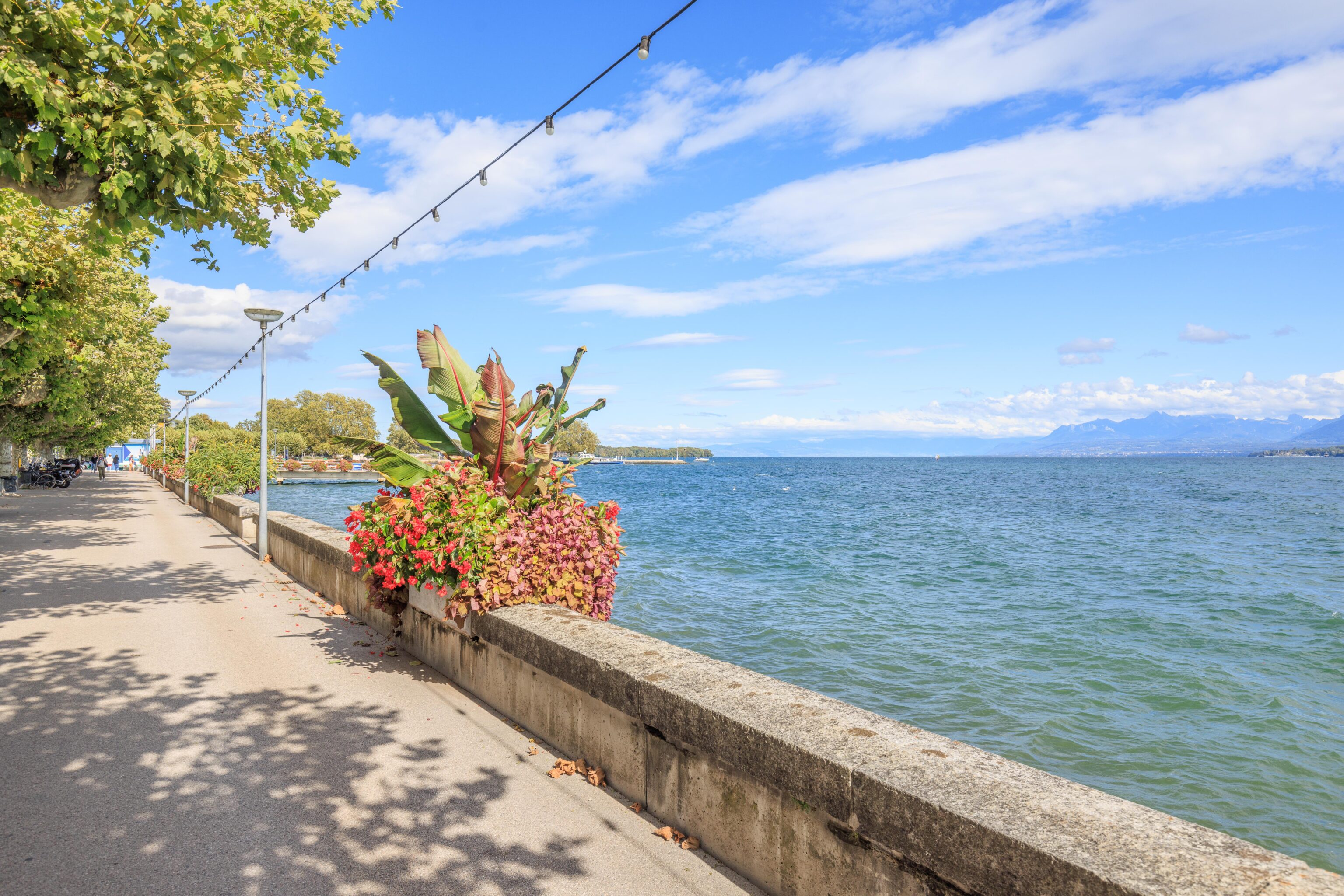
There was a nice wide tree lined walkway, along with decorative flowers and plants along the wall by the lake.
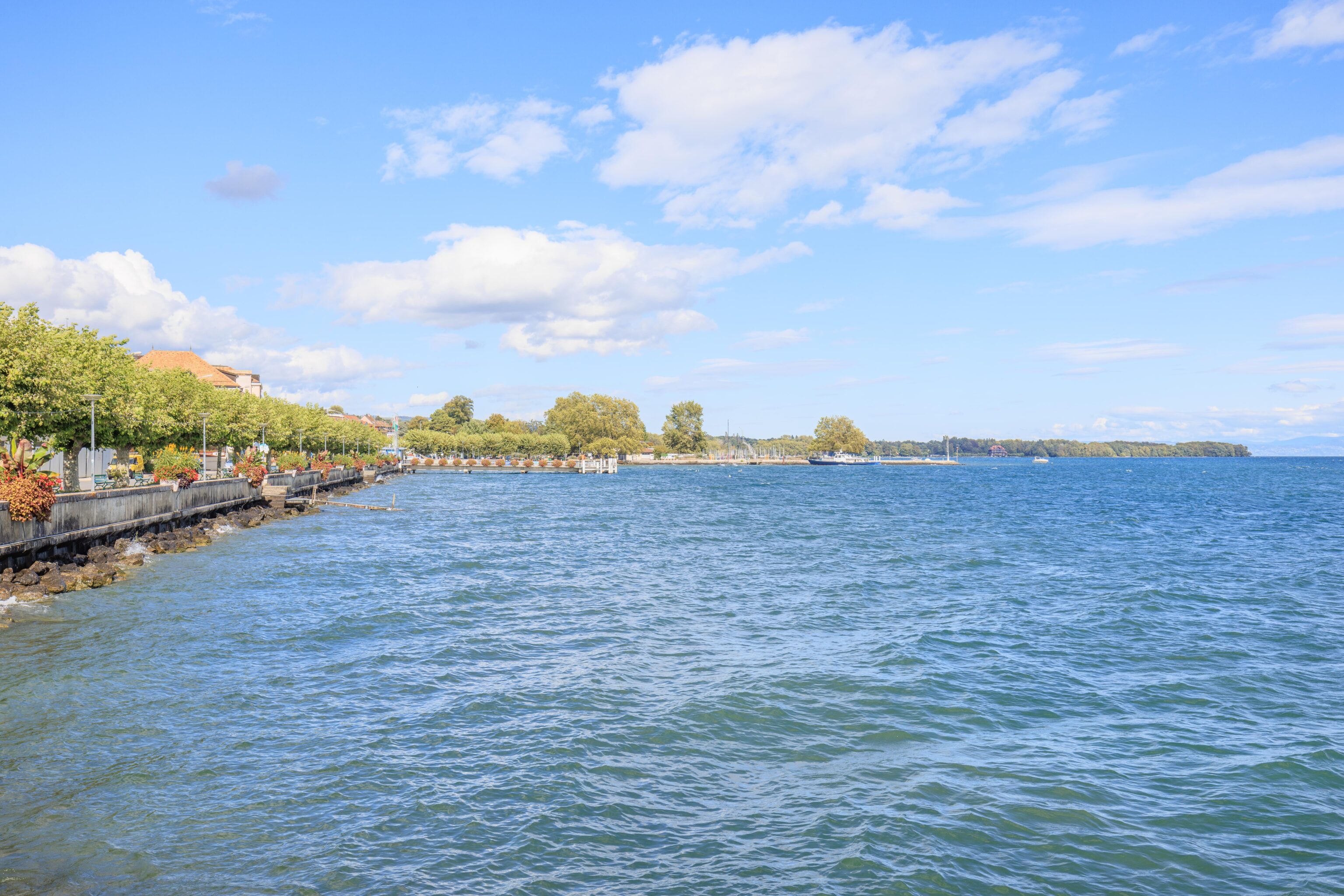
We went as far as a tiny park next to a marina. This was the view of where we walked from.
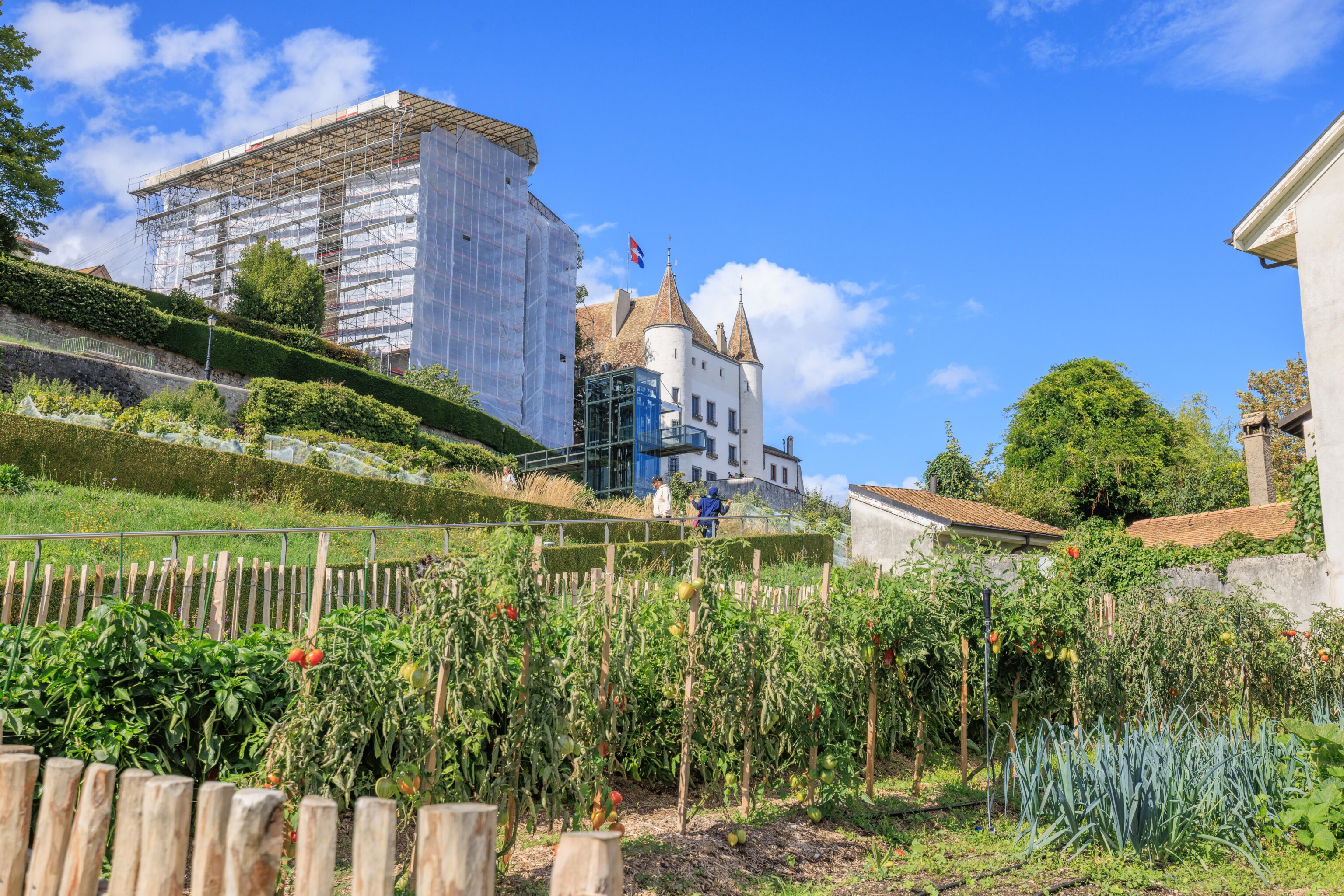
We crossed the road and entered this park, the Jardin de la Duche.
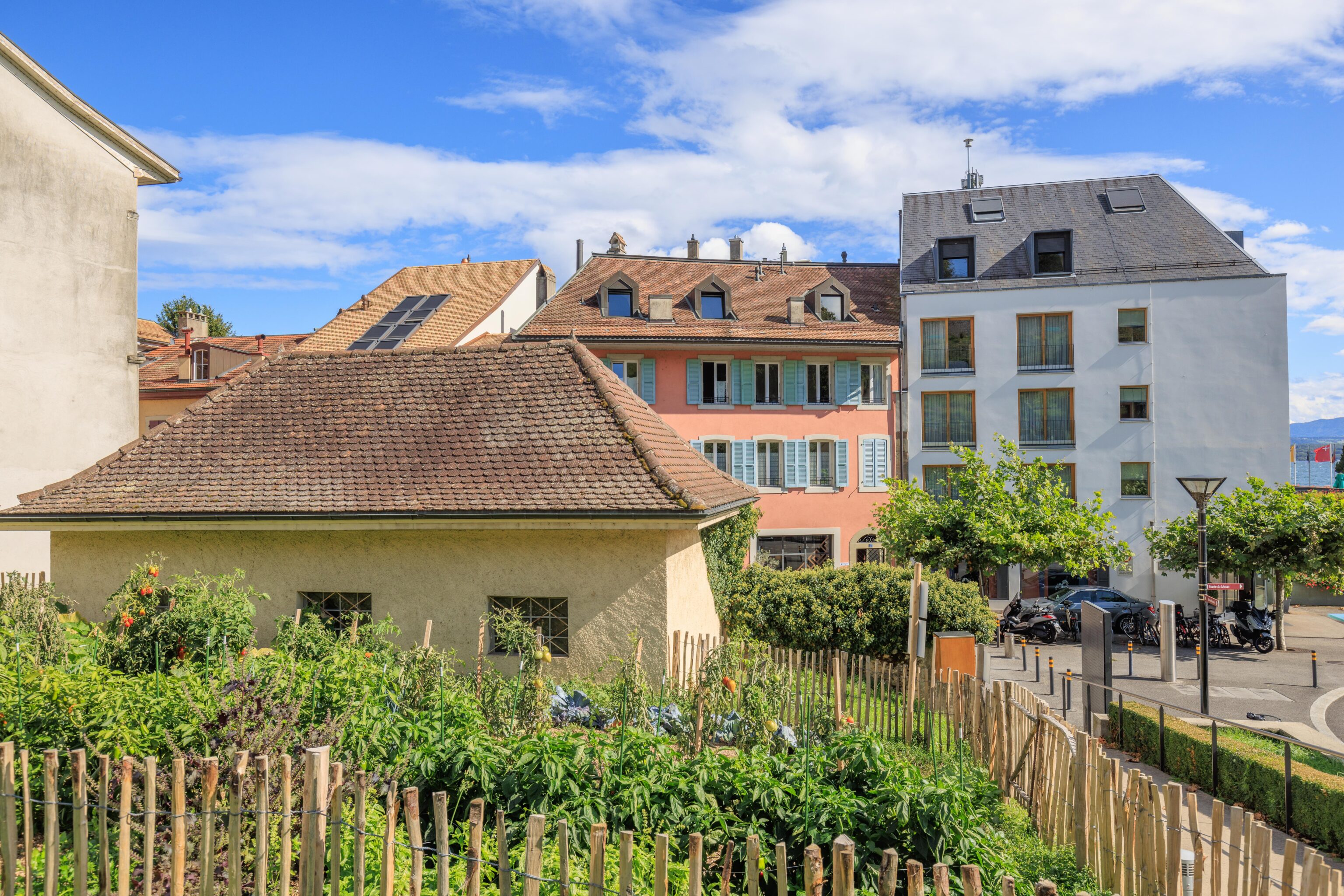
We started to walk up the hill through the park’s paths.
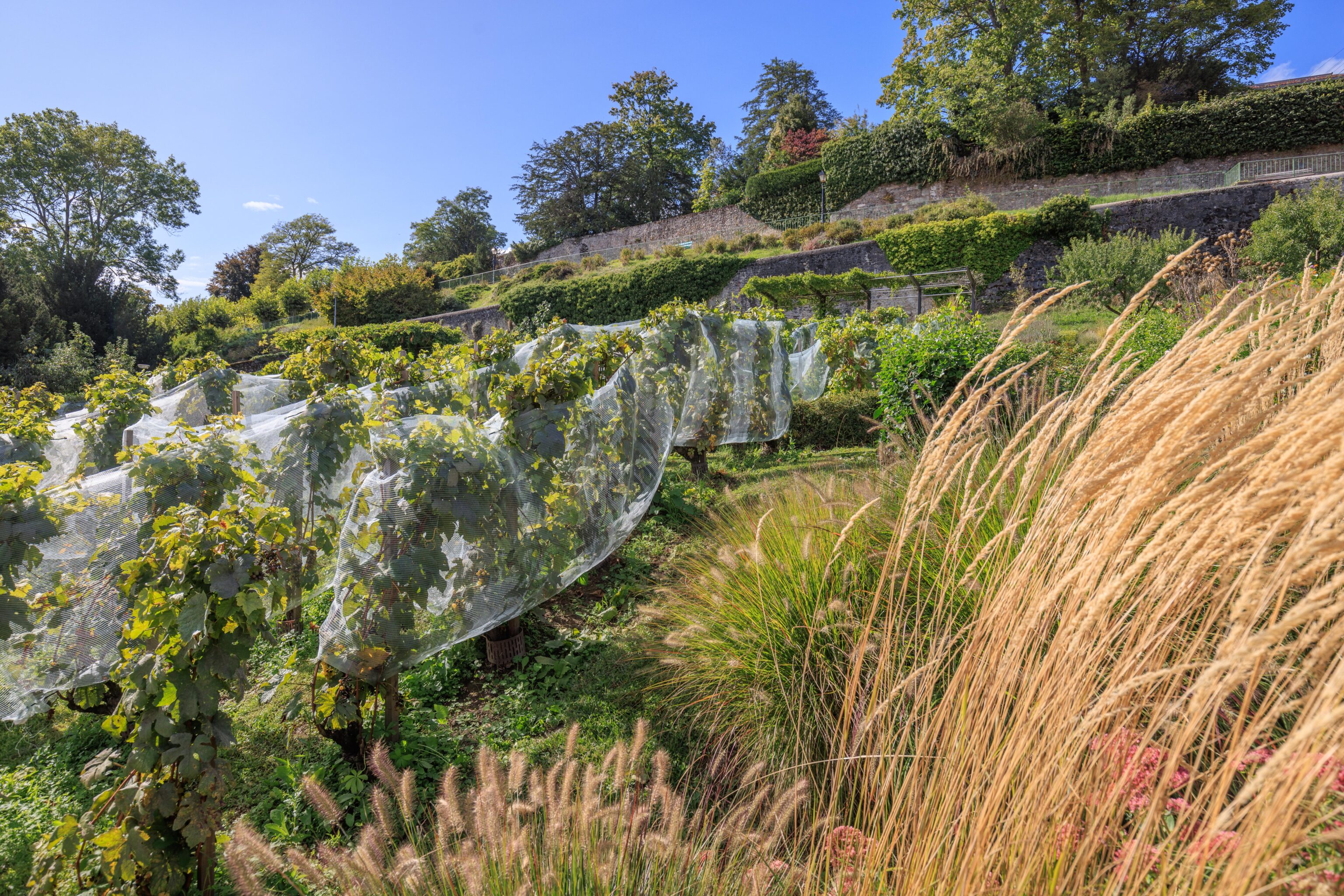
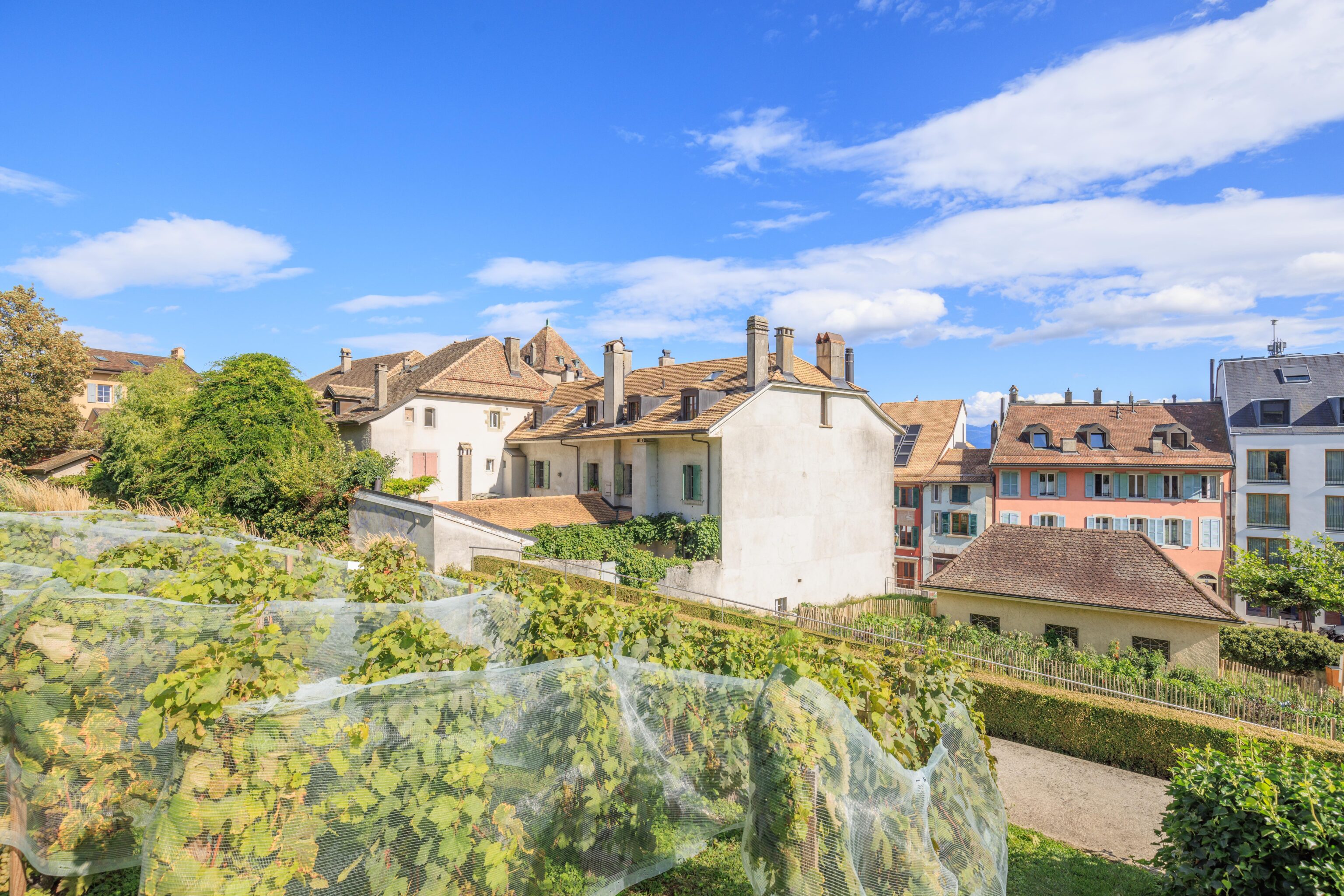
Many of the grape vines were covered with mesh netting, probably to prevent the grapes from being eaten by birds?
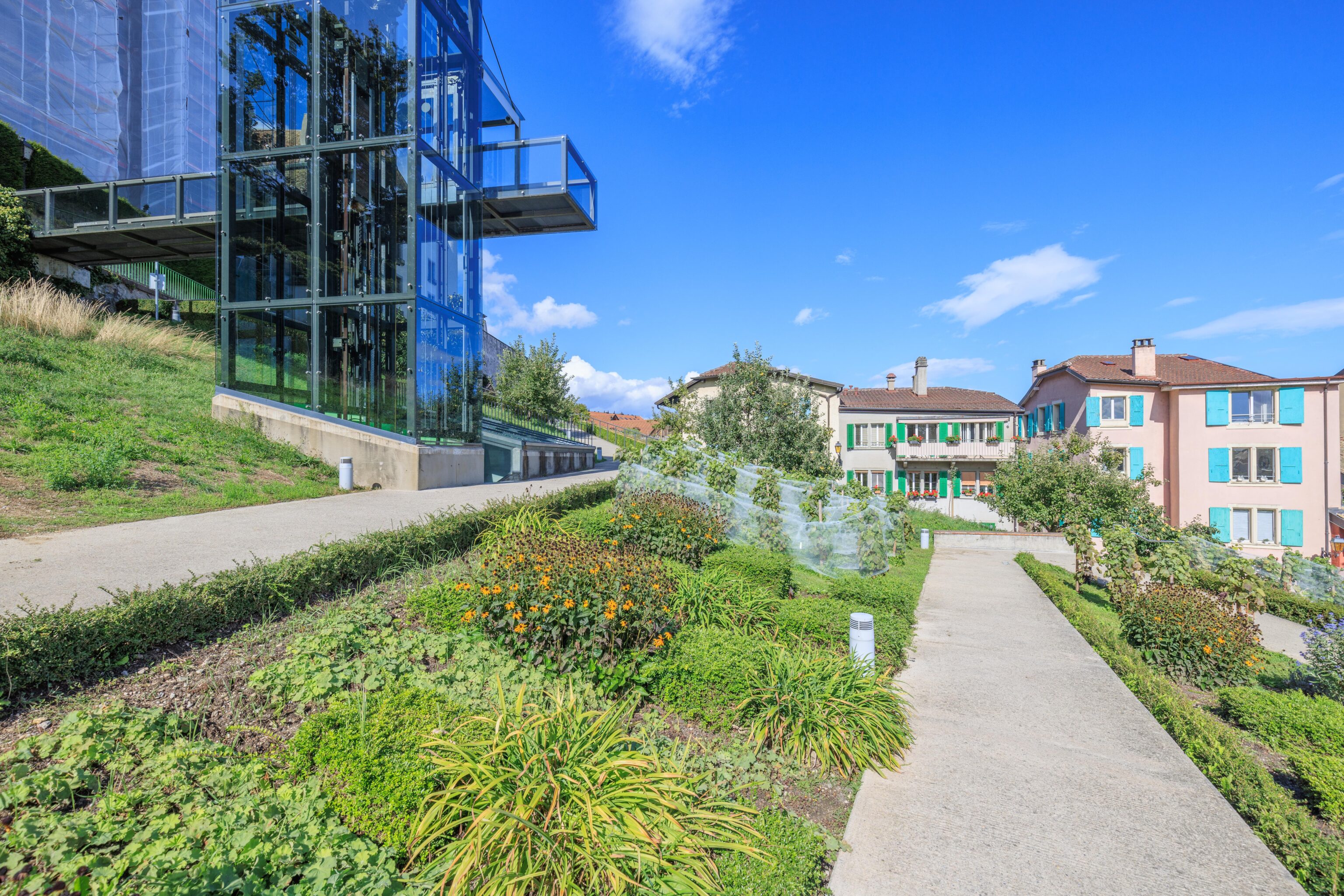
The glass and steel structure on the left is an elevator. We thought we could take it up but it only stops at the very top and in an underground parking lot below us.
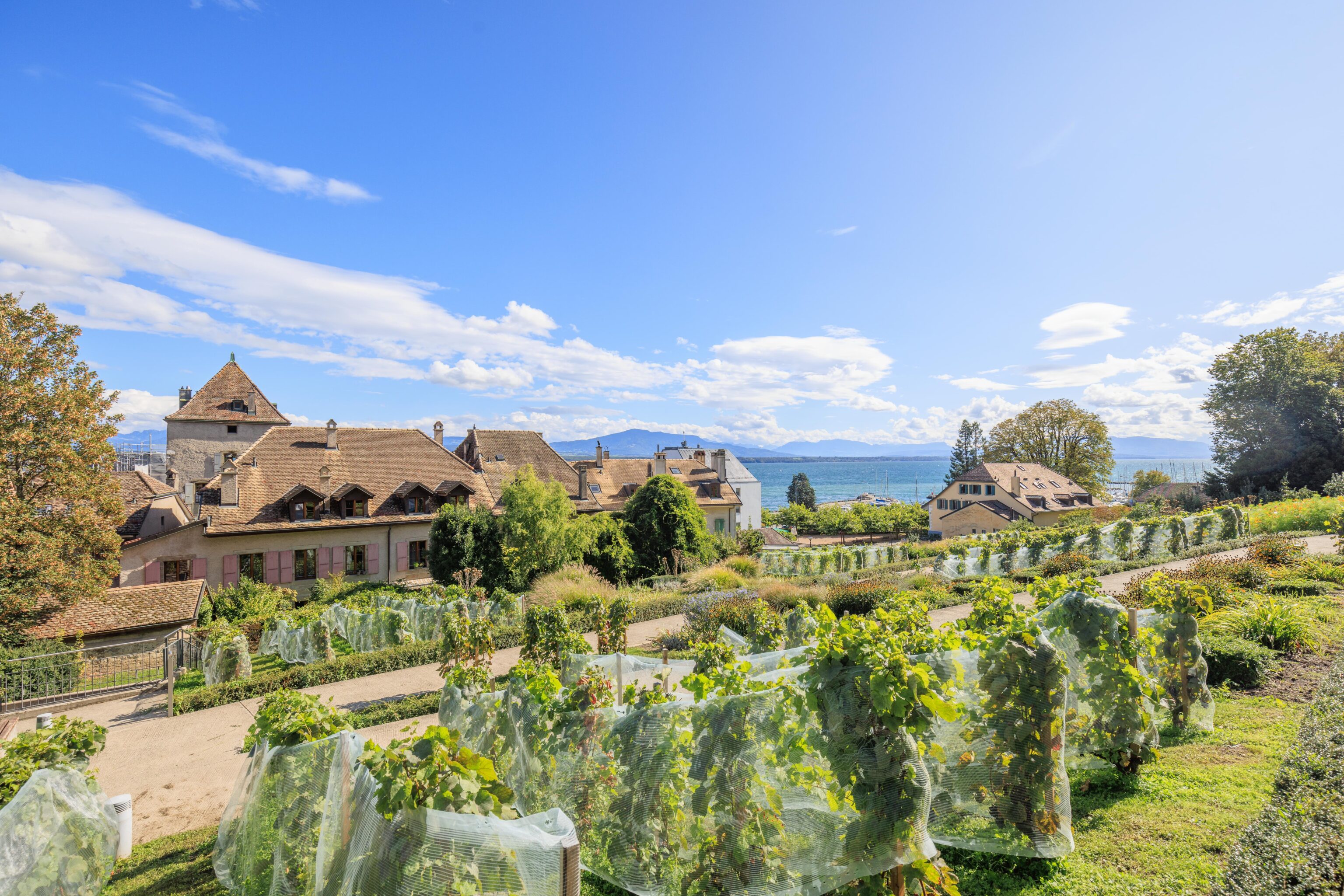
A very nice view as we continued to walk through the park.
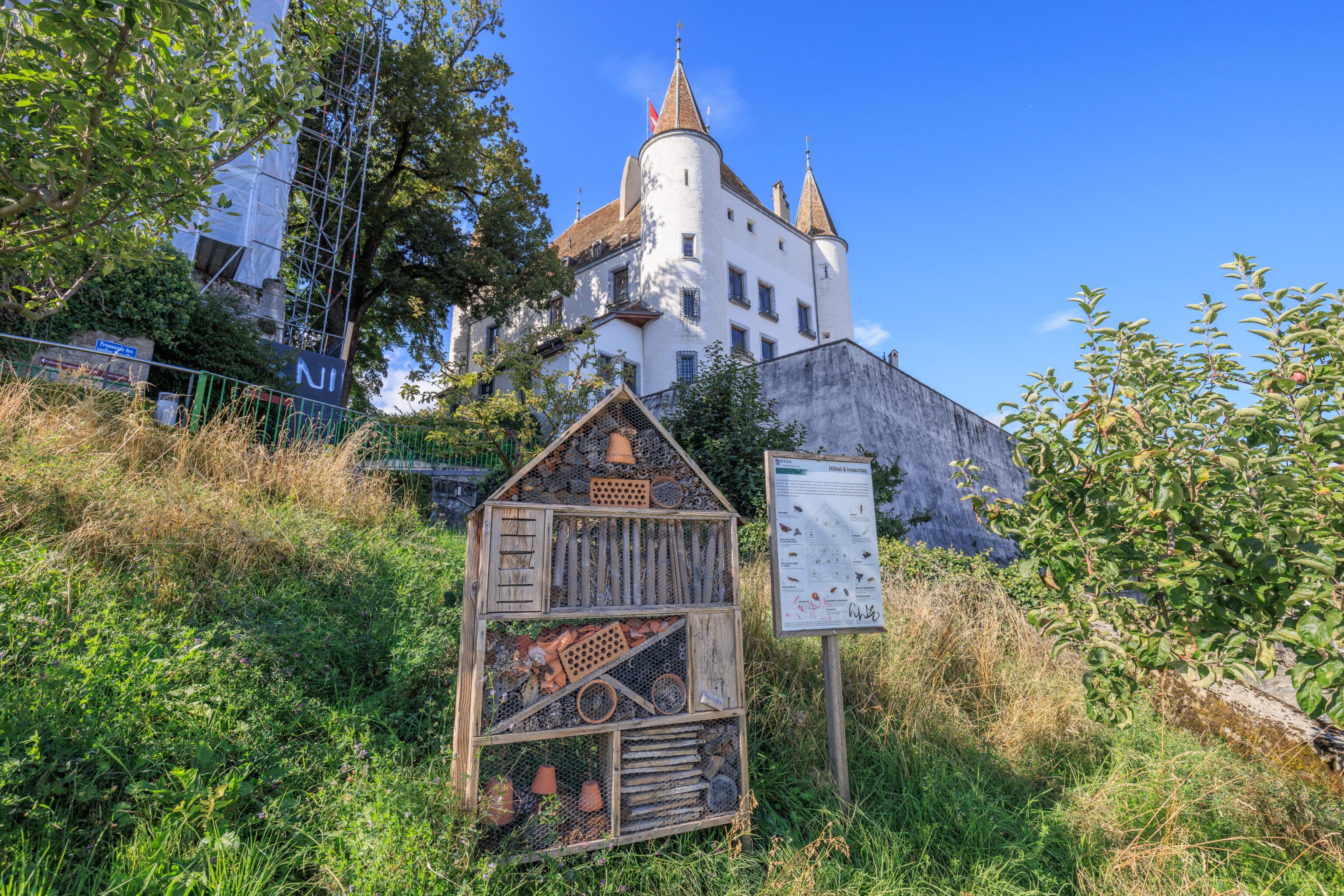
Another insect hotel, like the one we saw yesterday in Annecy! This one has an explanatory sign.
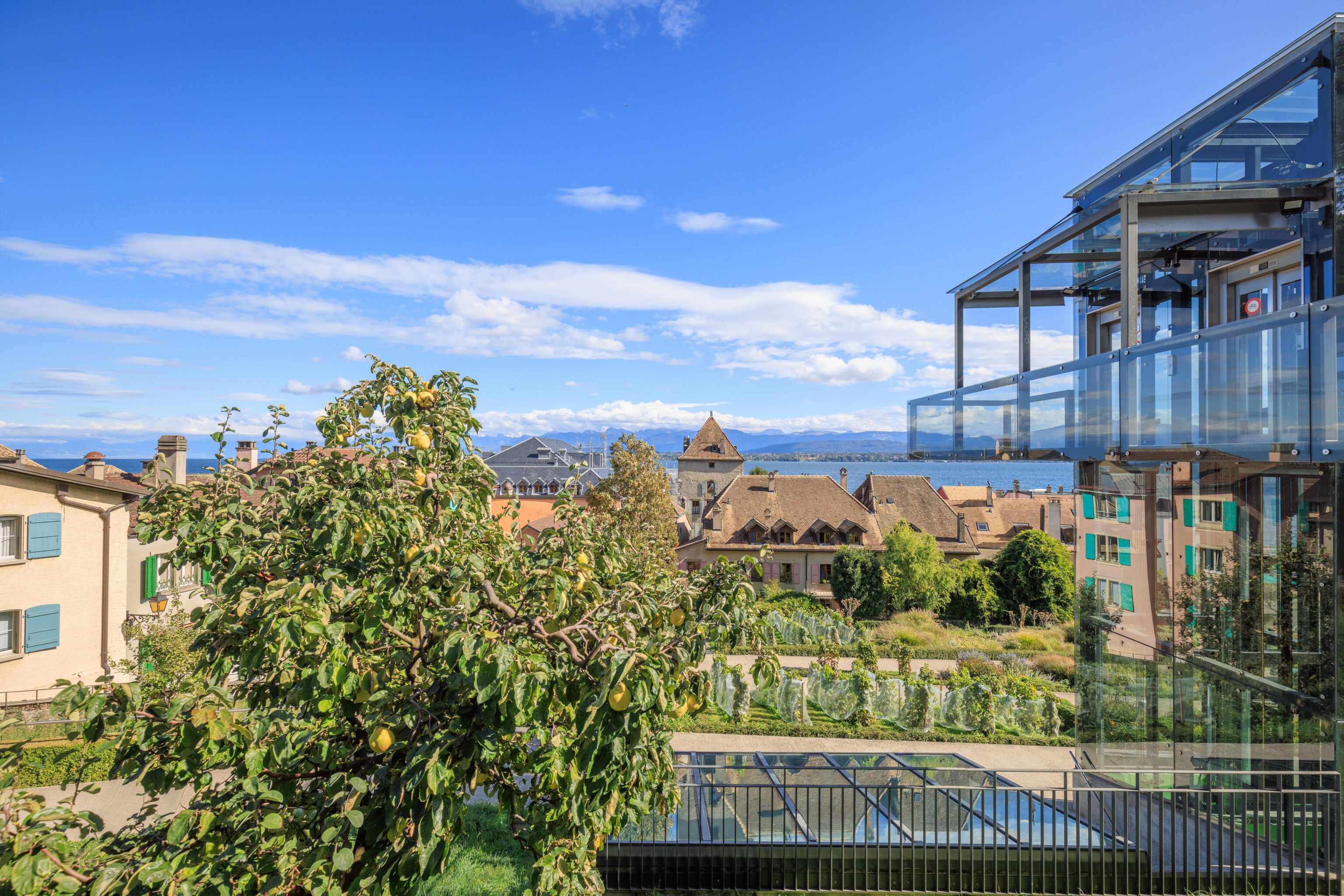
Almost to the elevator’s top floor!
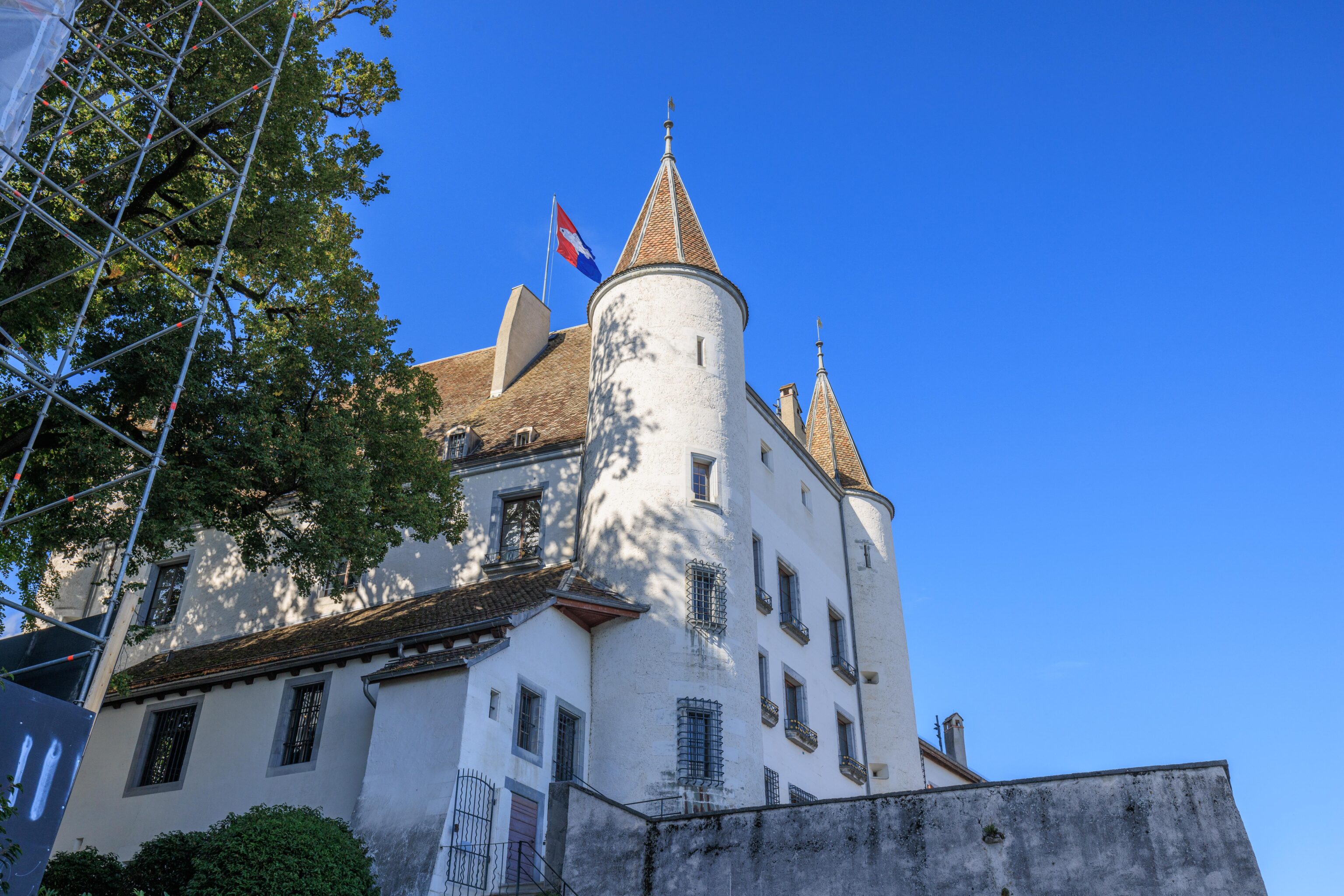
We passed by the base of the castle, the Chateau de Nyon. We could have gone up to the castle from here but decided to keep walking in the park.
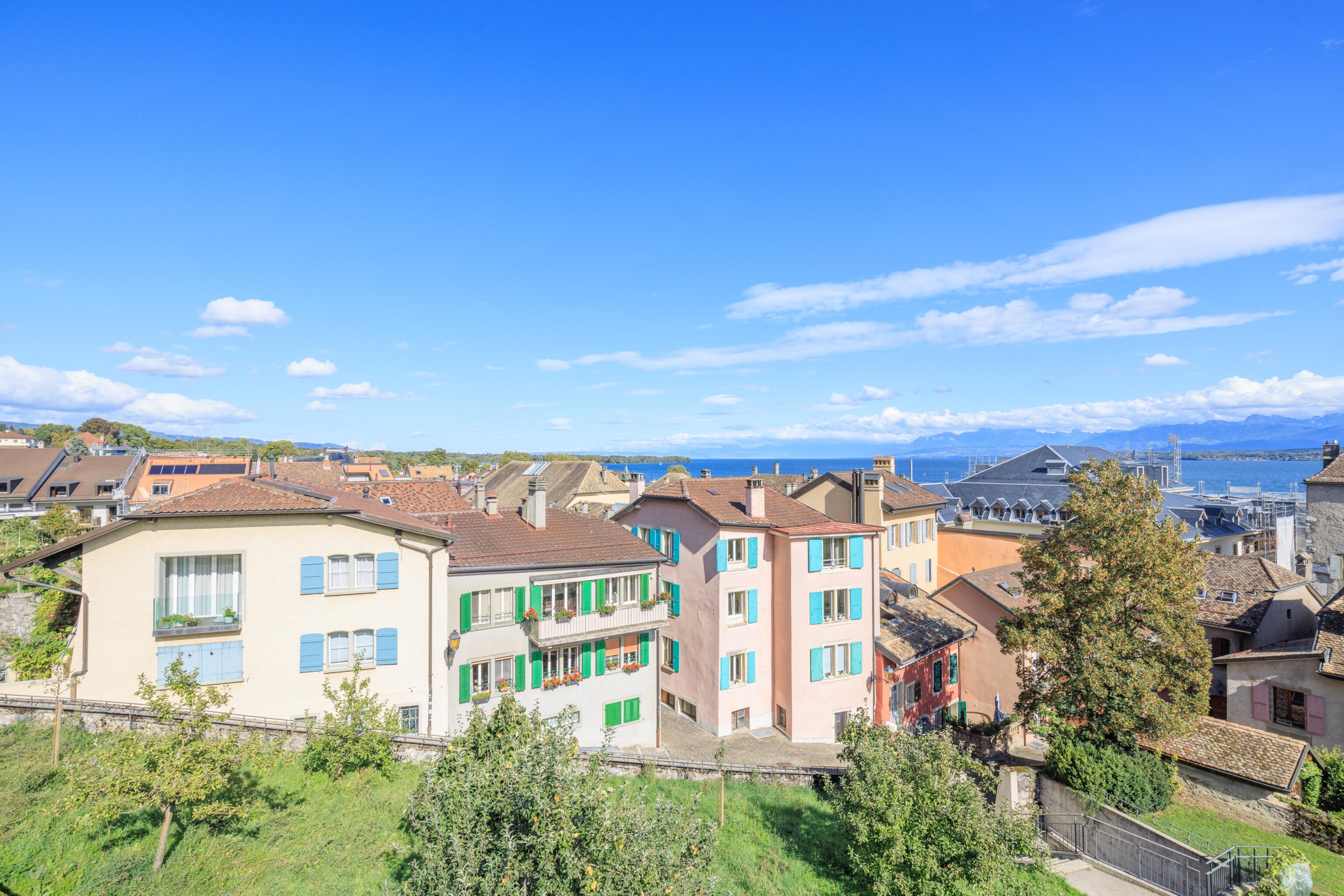
The view from the elevated walkway that leads to the elevator. Is there a generic term that describes this sort of structure? We’ve encountered them in various places, though the last one we were on was probably in Sentosa in Singapore over the Christmas and New Year’s holidays. There is also one at Bürgenstock by Lake Lucern, the Hammetschwand Lift. We’ve seen that one but haven’t visited.
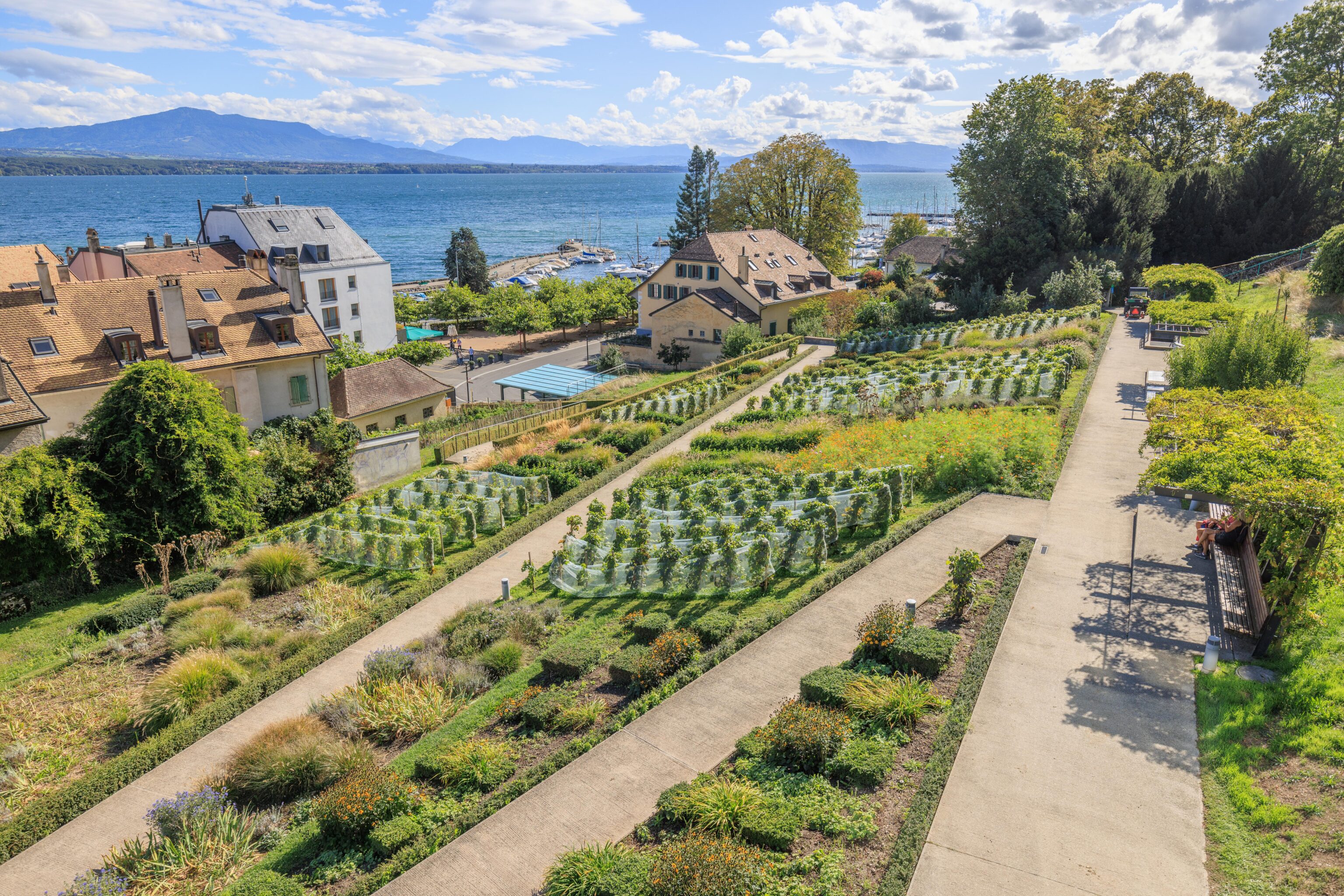
A nice view of the garden area below. There was a sign indicating the presence of some sort of Roman ruins to the west. So, we kept walking!
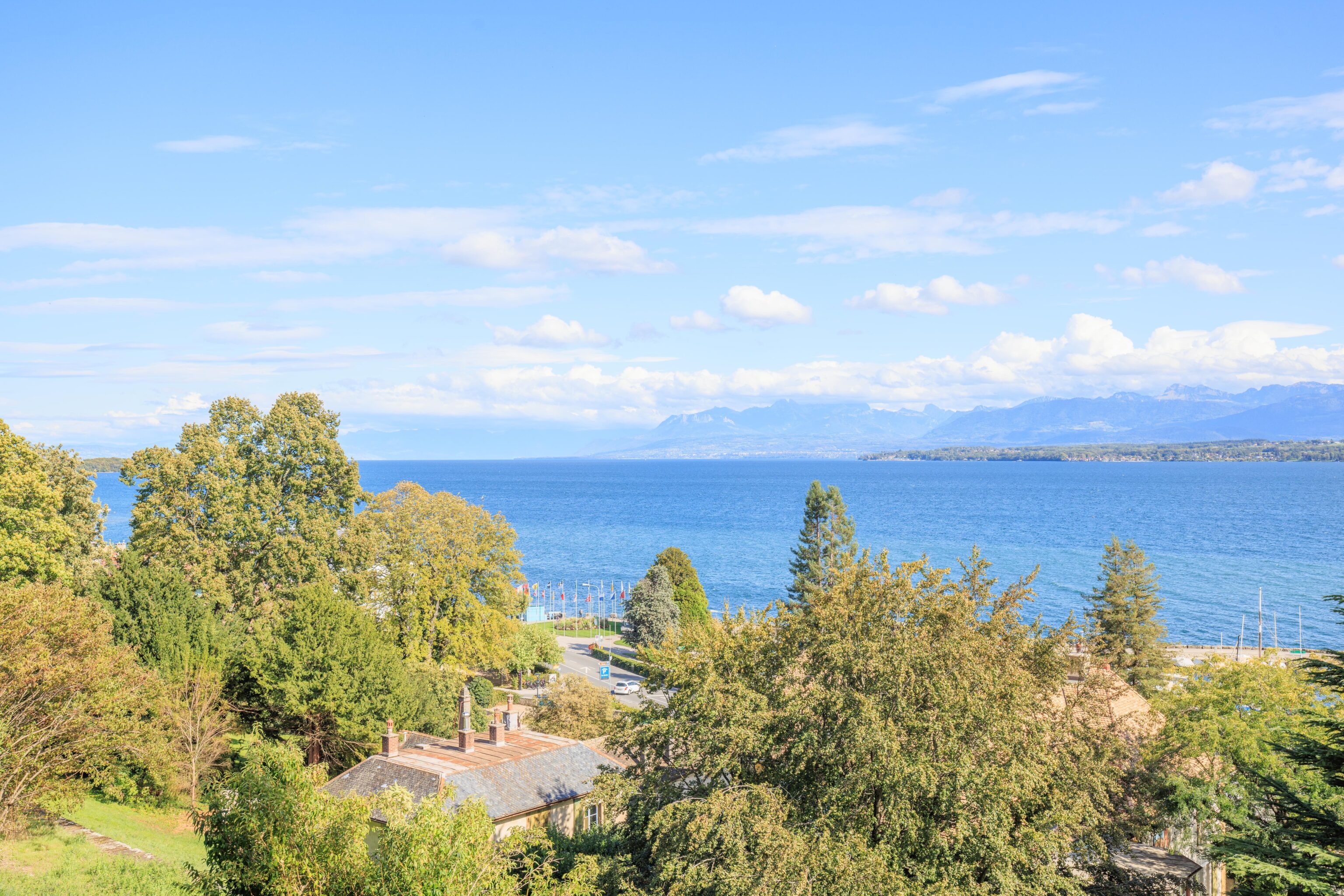
A beautiful view as we walked. In the distance, we could see Yvoire on the opposite side of the lake. Below us, there are some flags by the shore. That is the little park that we walked to from the pier before heading up into the garden.
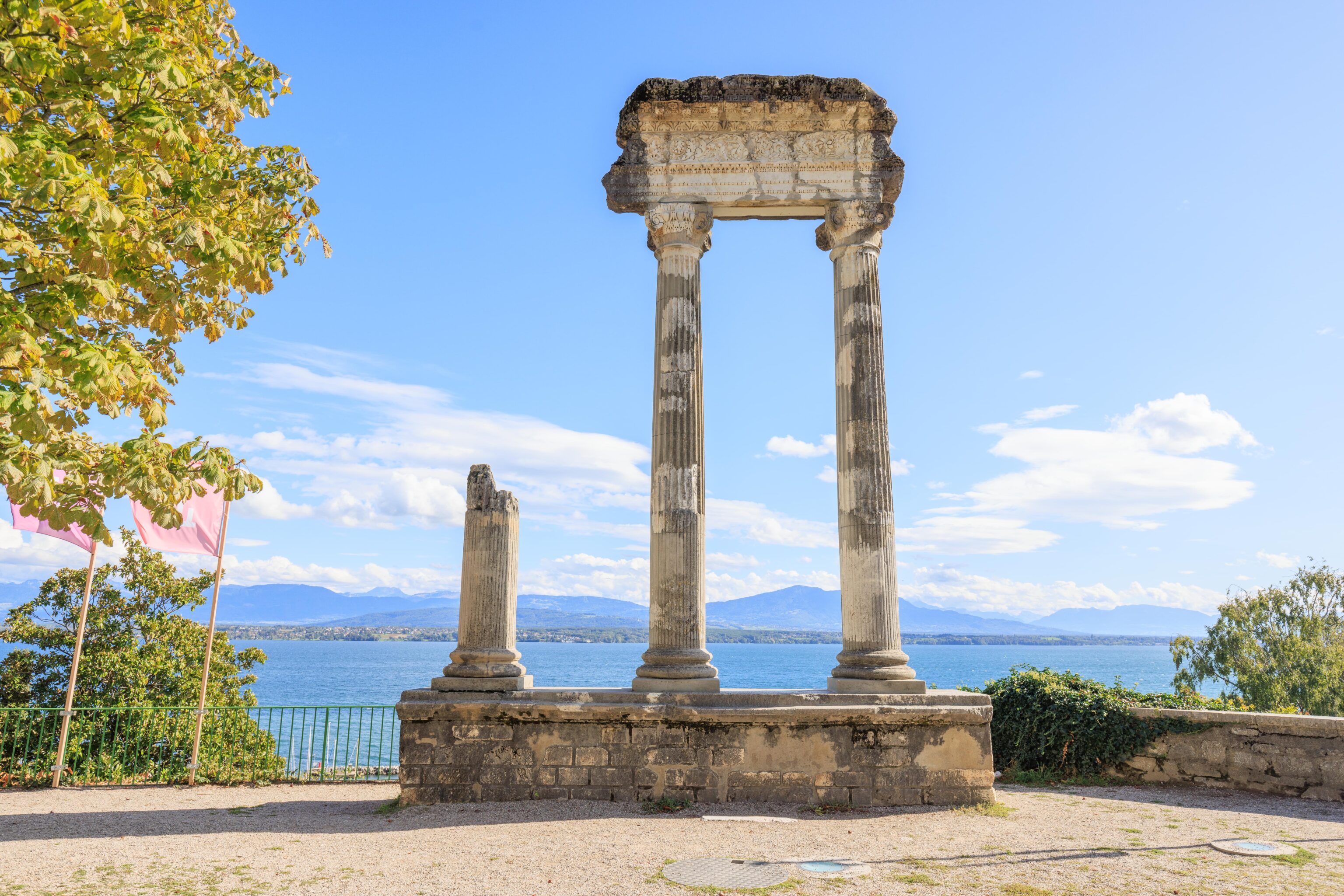
The Roman Columns of Nyon! The town’s website offers a brief history5:
Situated on the Esplanade des Marronniers, the Roman columns bear witness to the time when Nyon, called Noviodunum, belonged to the Colonia Iulia Equestris founded by Julius Caesar between 45 and 27 BC. From this square, visitors can admire the view on the Alps and Lake Geneva and to attend many free concerts during the summer period. On the Esplanade des Marronniers (Chestnut Tree Square) there are three Roman columns, two of them fully erected. They belonged to the cryptoporticus of the holy area of the second Roman forum built around 50 AD. They initially measured 7m50 including the top sculptured element. The Roman columns were found under the Rue Delafléchère and placed on this marvellous point of view in 1958 for 2000 years celebration of the city of Nyon. By its founding through Julius Caesar, the Colonia Iulia Equestris with its urban center Noviodunum, nowadays Nyon, was the first Roman Colony in Switzerland.
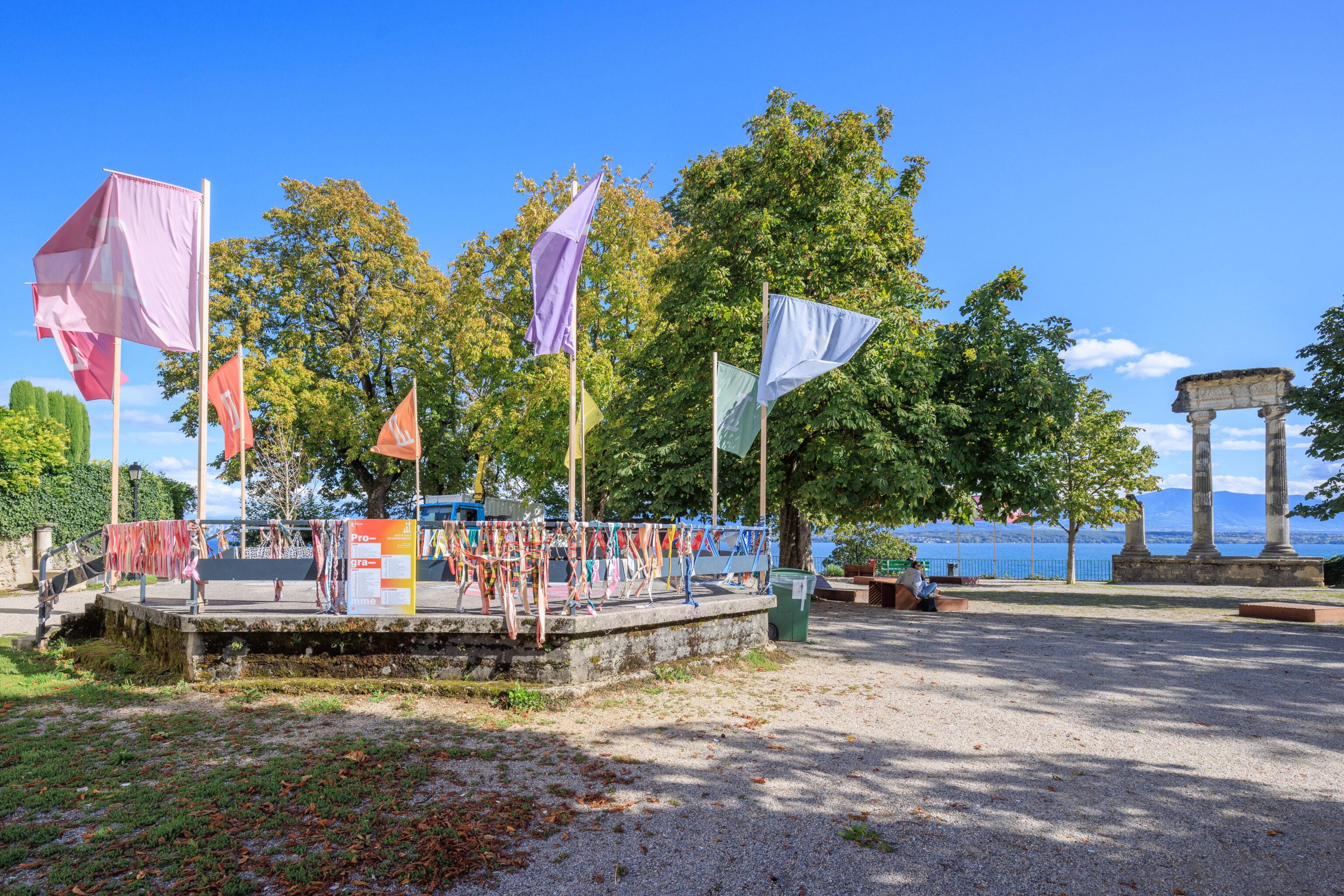
The columns sit at the edge of a small clifftop park, the Esplanade des Marronniers.
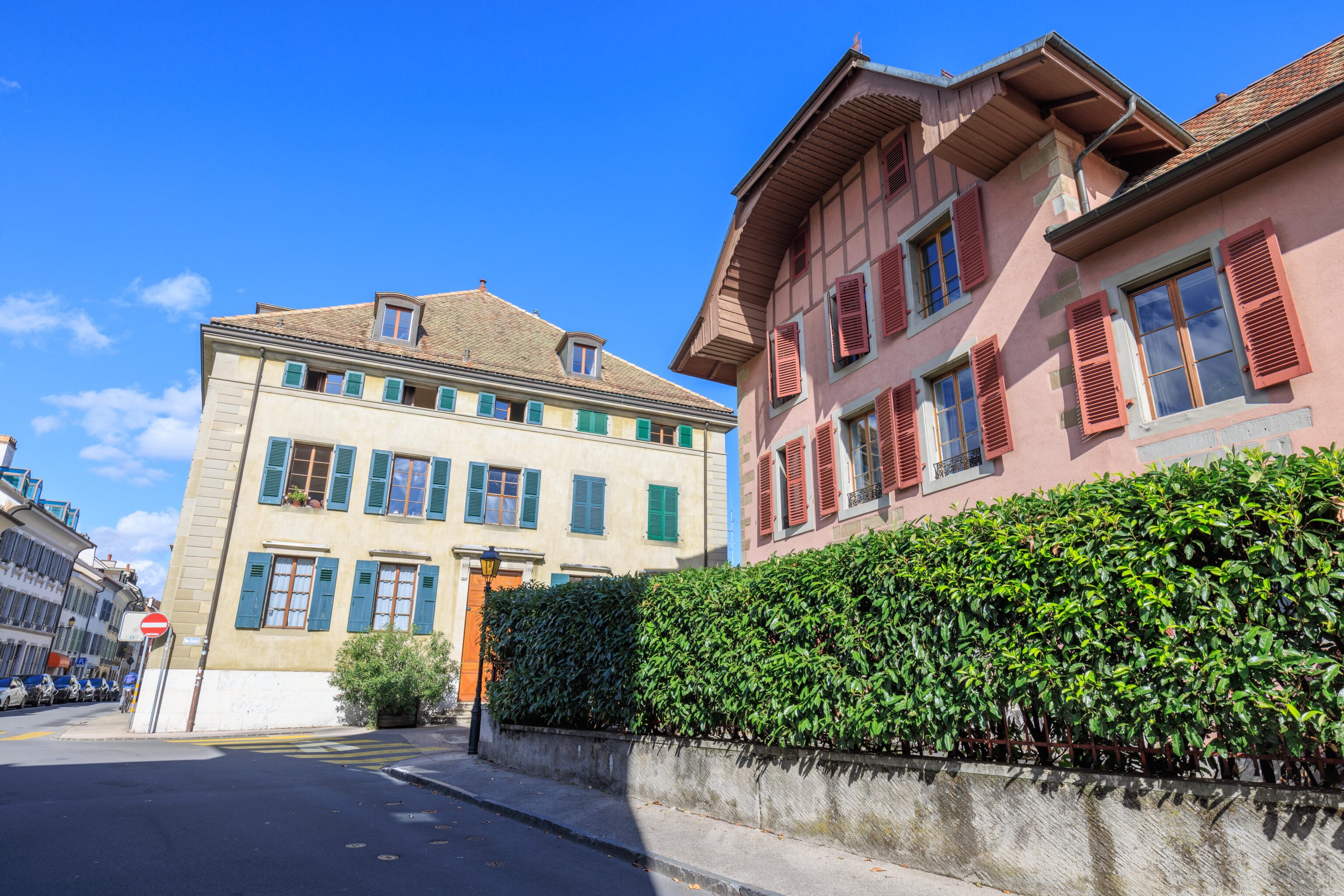
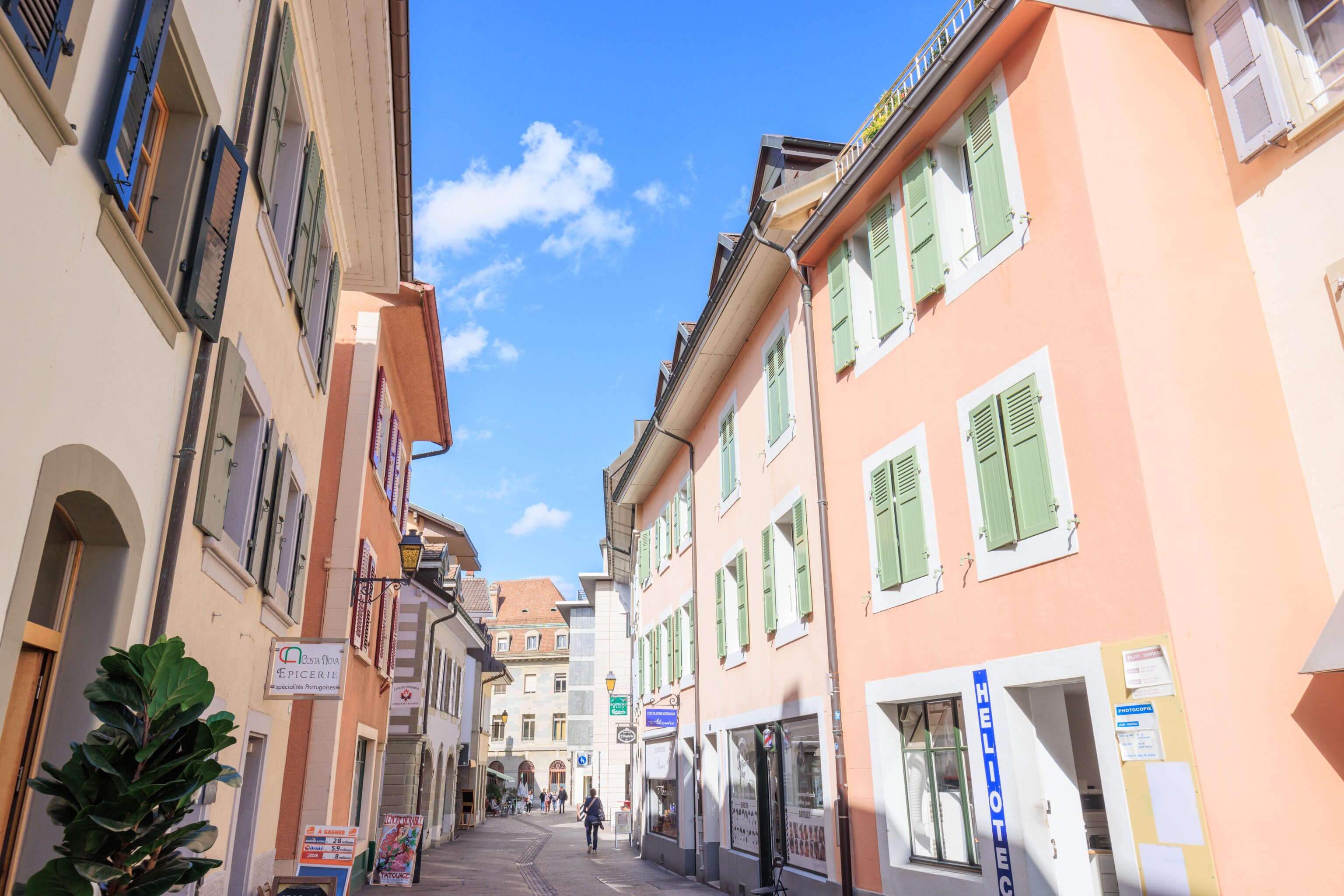
The Roman Columns seemed to be at the corner of Nyon’s historic downtown area. We headed back into town.
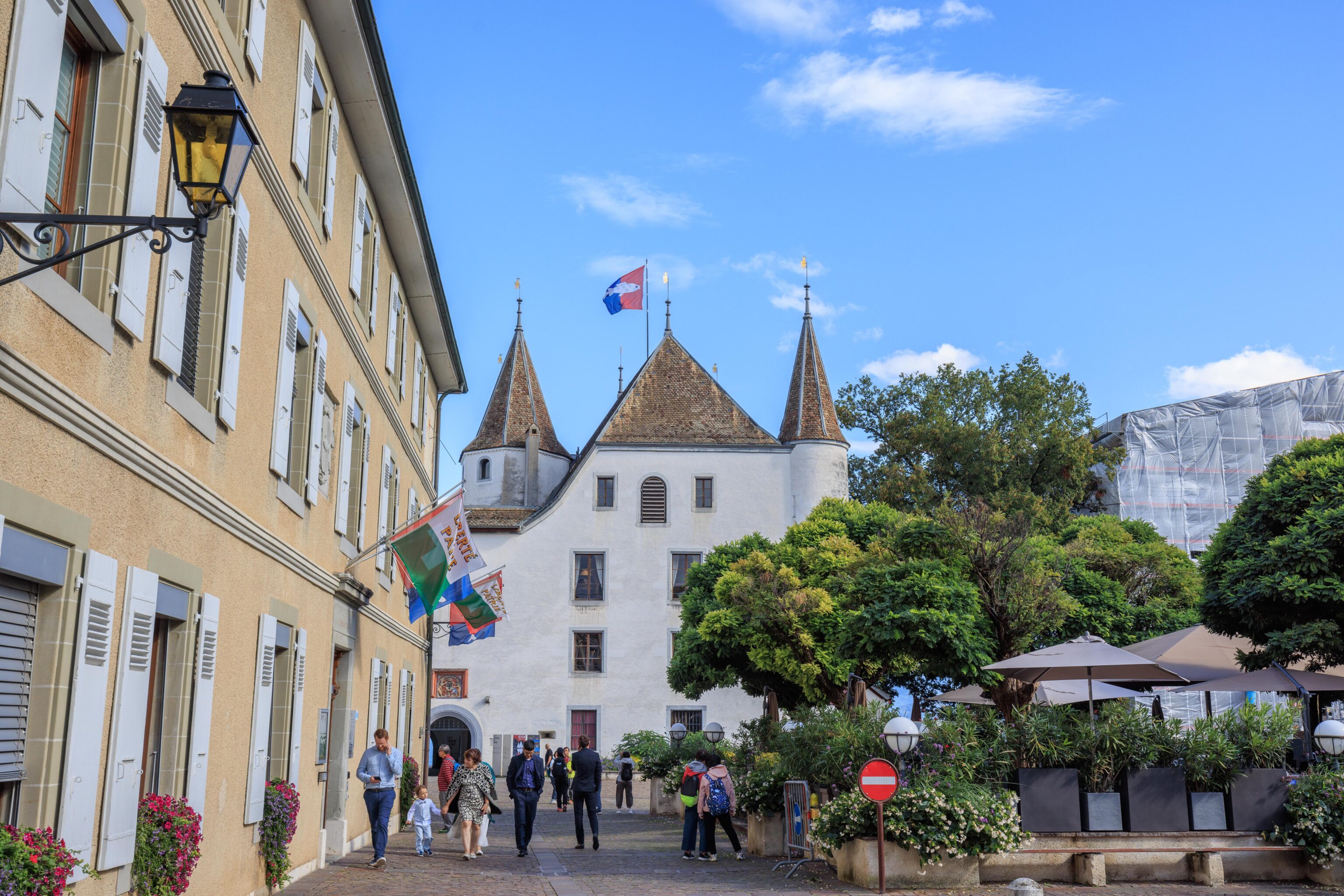
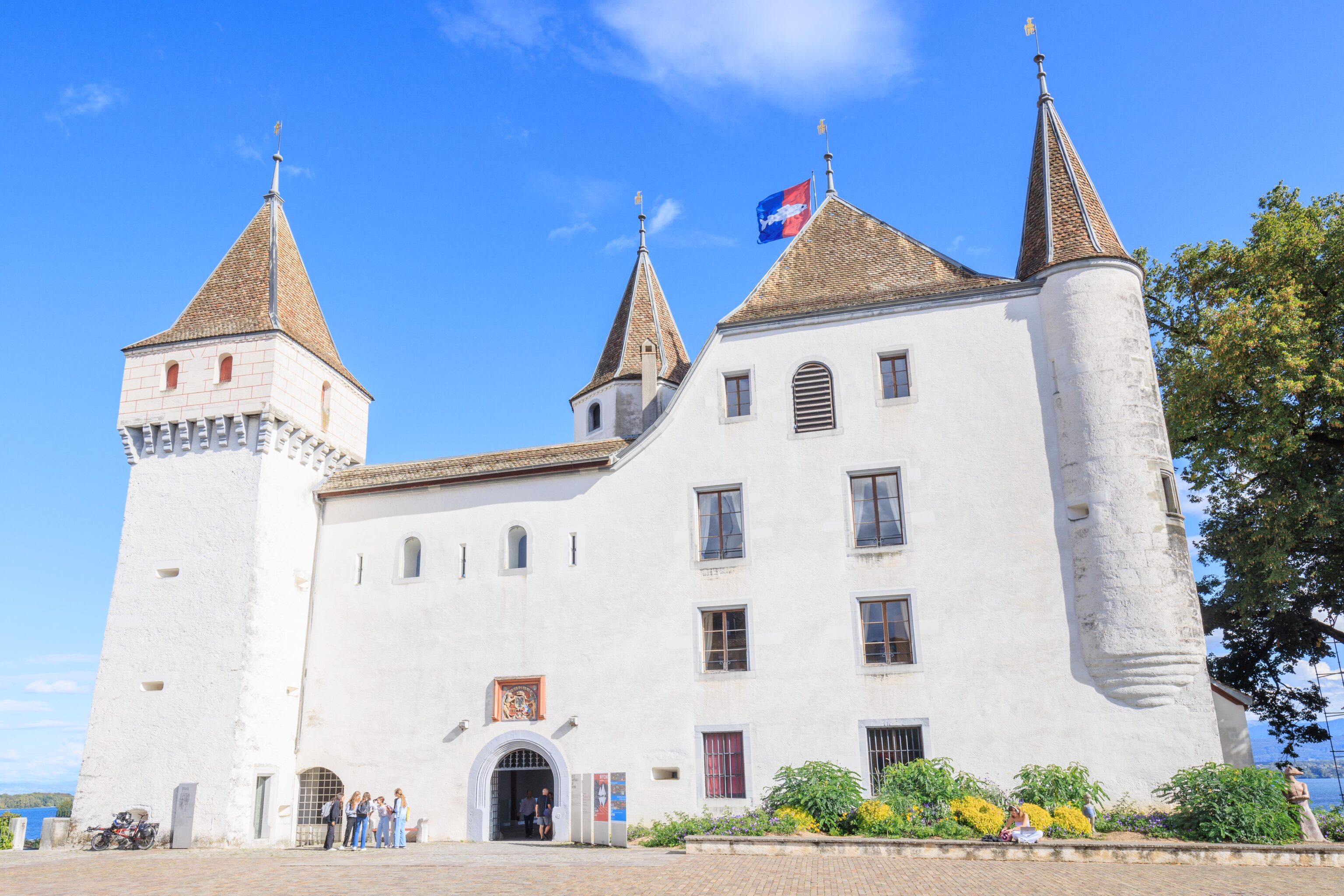
We eventually ended up at the Chateau de Nyon.
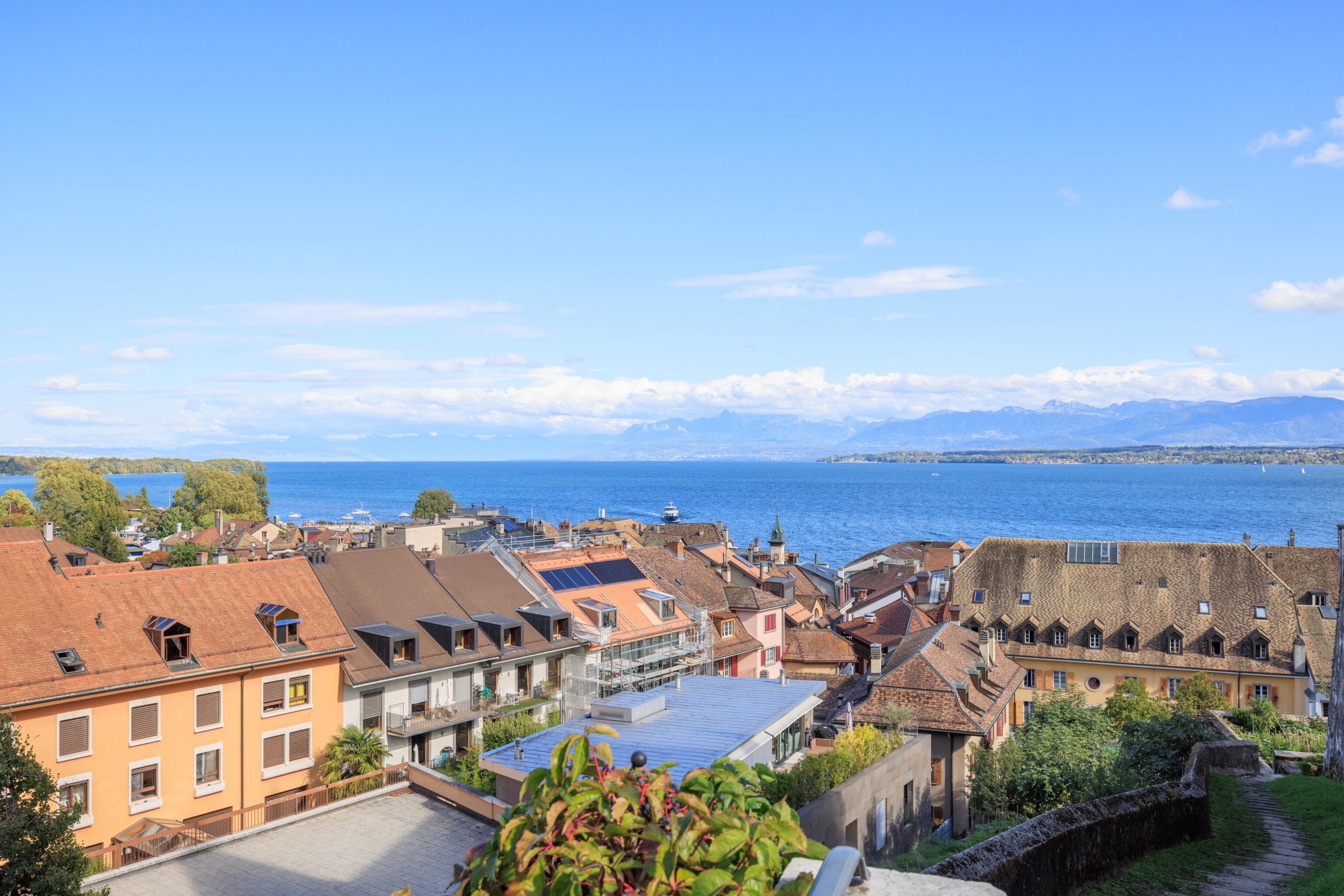
We peeked around the castle from below the tower on the northern corner. We could see a boat, possibly the Valais, about to arrive at the Nyon pier.
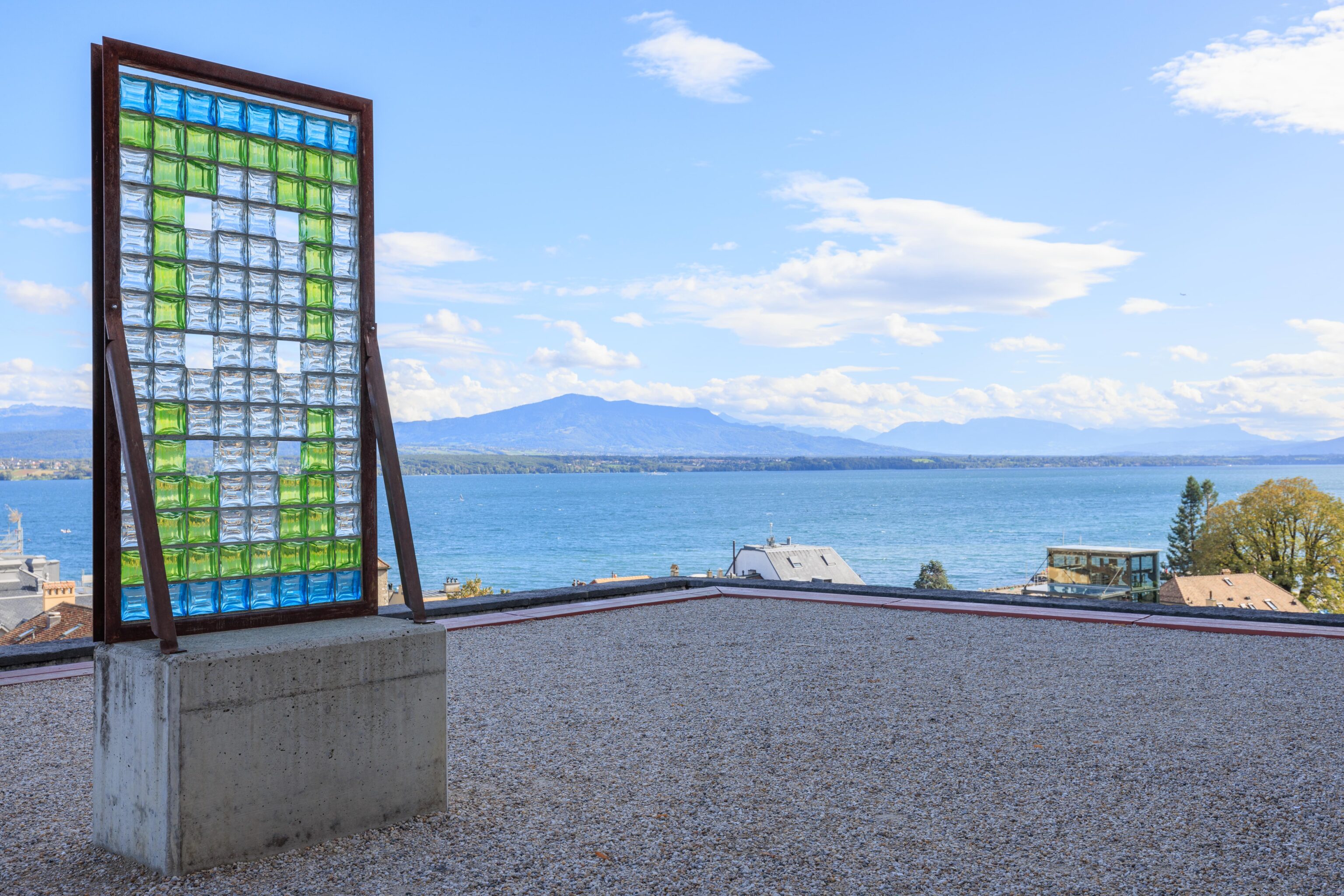
There was a glass work of art on the plaza.
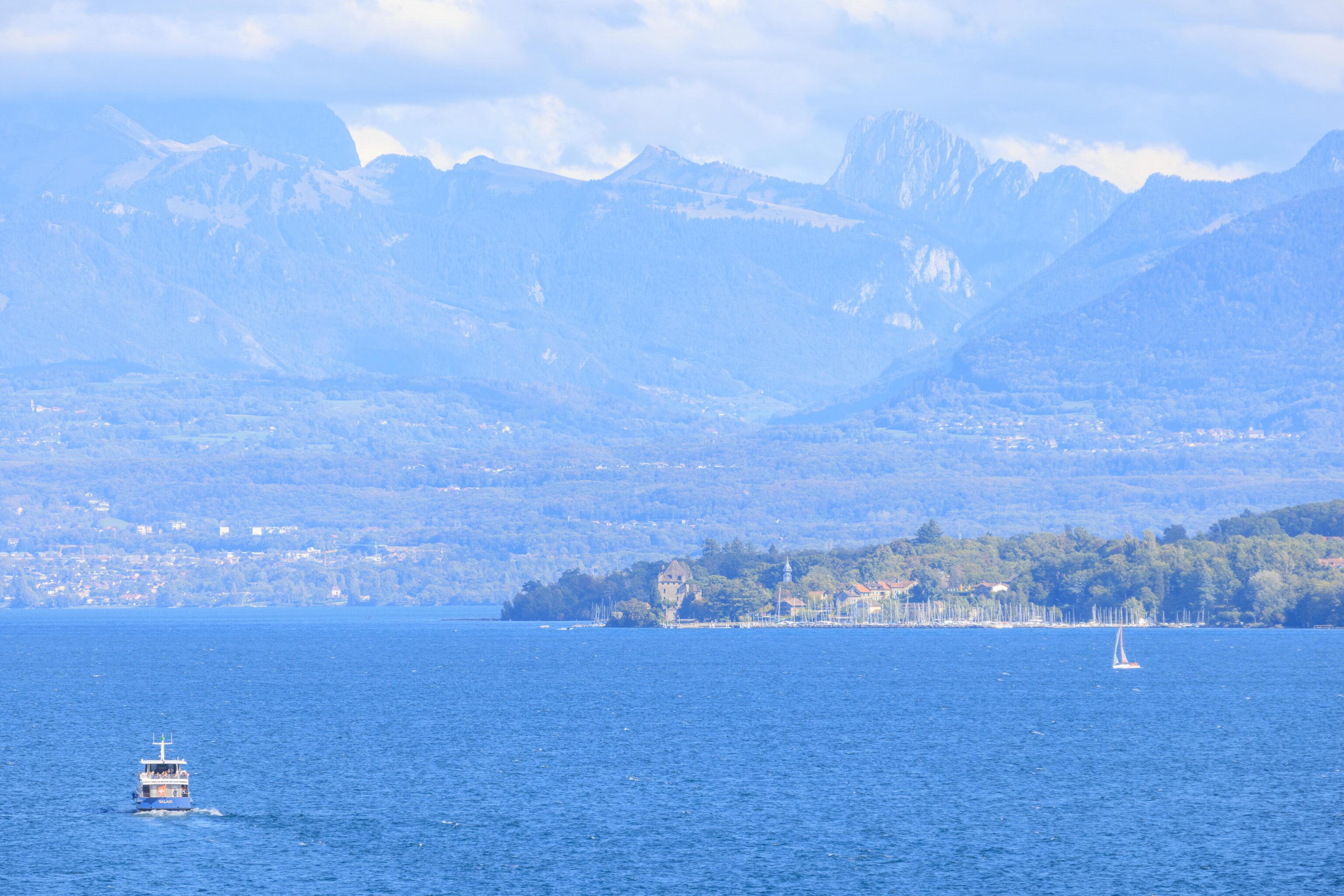
Using a telephoto lens, we could see Yvoire in the distance. The Valais, after stopping in Nyon, was on its way back across the lake. And, we could see the mountains high up above the French side of the lake.
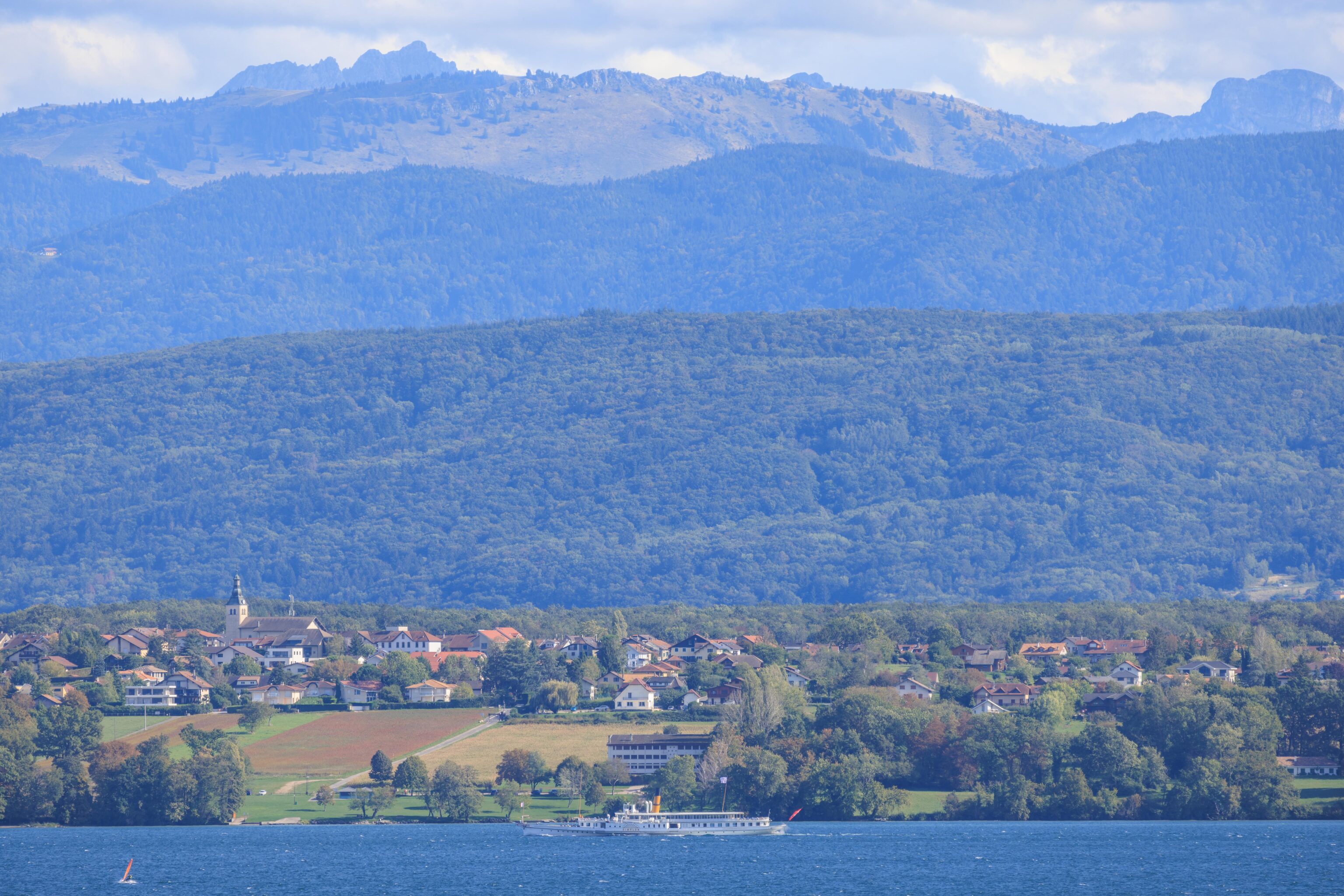
We also saw the Simplon on its way to Yvoire. It seemed to be taking a different route this time as it didn’t come to Nyon.
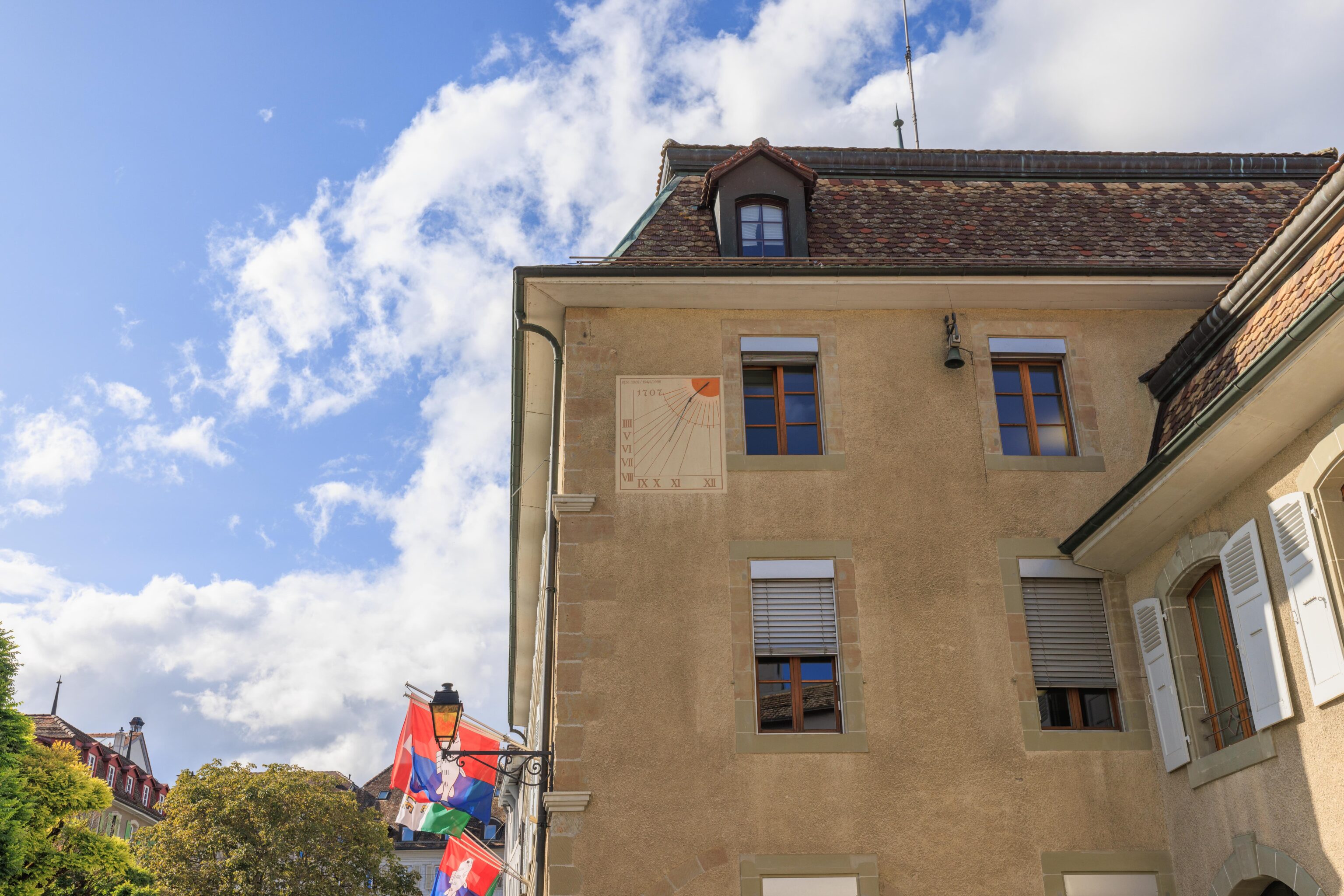
A random building that we noticed because it has a clock painted on the side. These building based Sun clocks seem pretty common in historic areas of Europe that we’ve visited.
Return to Geneva
We headed to the Nyon train station, a few blocks away. From there, we caught a train back to Geneva. We headed back to the Marriott and snacked a bit in the M Club lounge. There were a few different hot items available, including chicken and risotto. The raw fish also made an appearance again as well as various other light pastry items. We didn’t want to go for a more substantial dinner as we were planning on starting very early the next morning.
Footnotes
- https://www.geneve.com/en/attractions/ile-rousseau ↩︎
- https://fr.wikipedia.org/wiki/Pont_de_la_Machine ↩︎
- https://www.geneve.com/en/explore-the-city/geneva-sights-and-stories/the-jet-d-eau-the-star-of-geneva-harbour ↩︎
- https://www.abvl.ch/en/bateau/s-s-simplon/ ↩︎
- https://www.lacote-tourisme.ch/en/P25163/roman-columns-in-nyon ↩︎
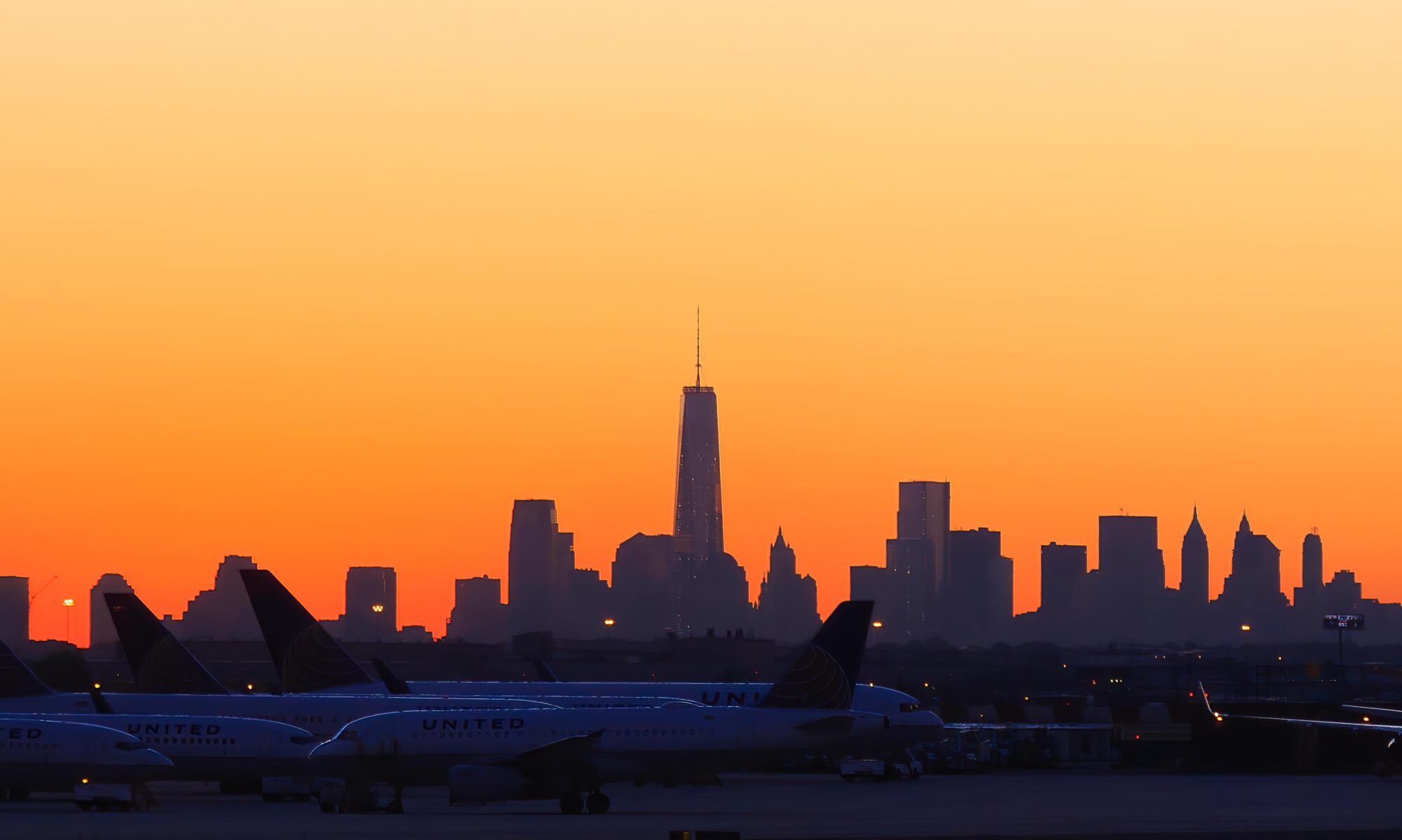
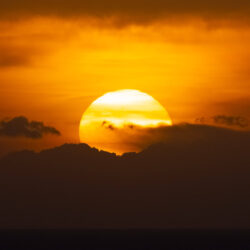
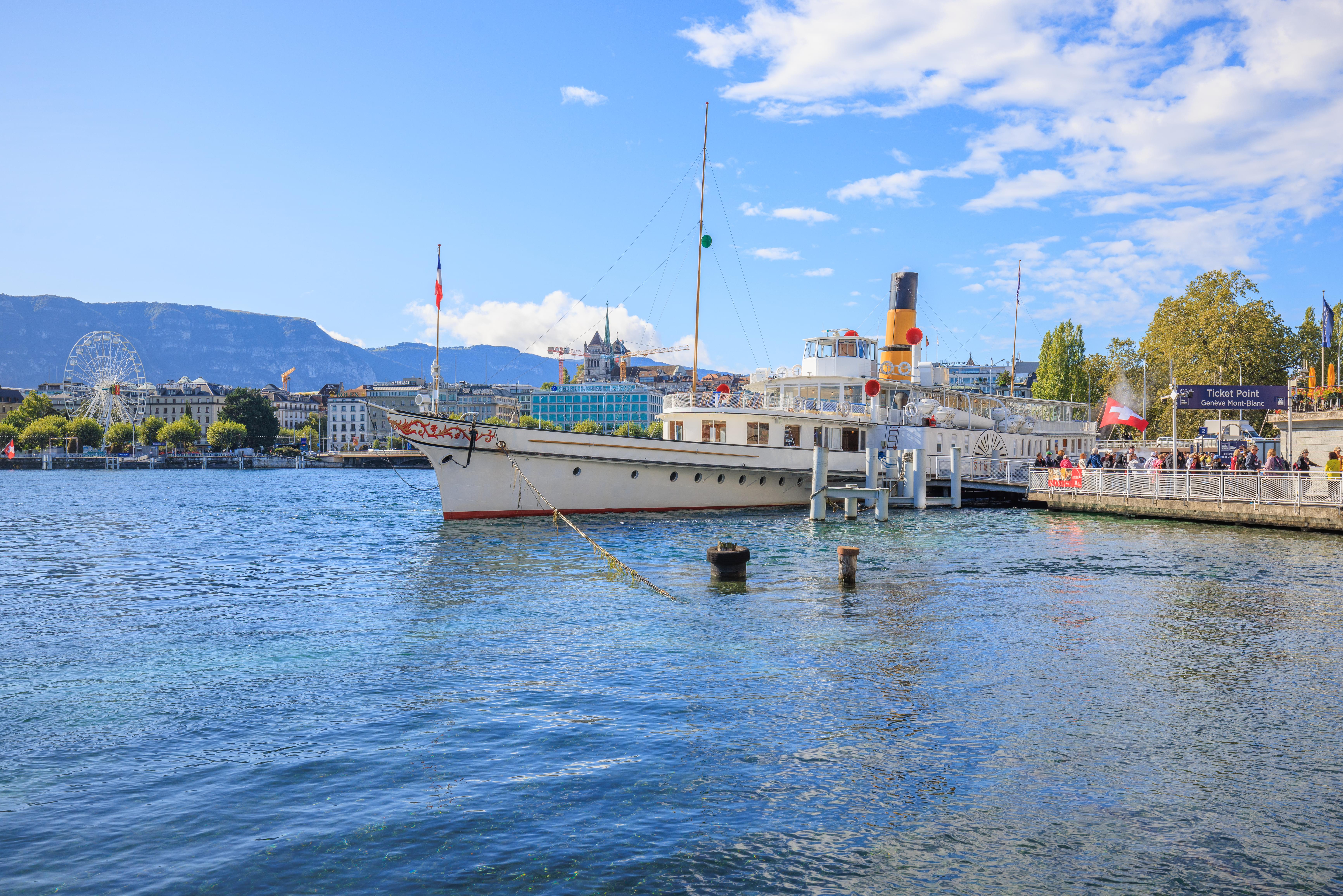
One Reply to “Geneva to Yvoire and Nyon on Lac Léman”